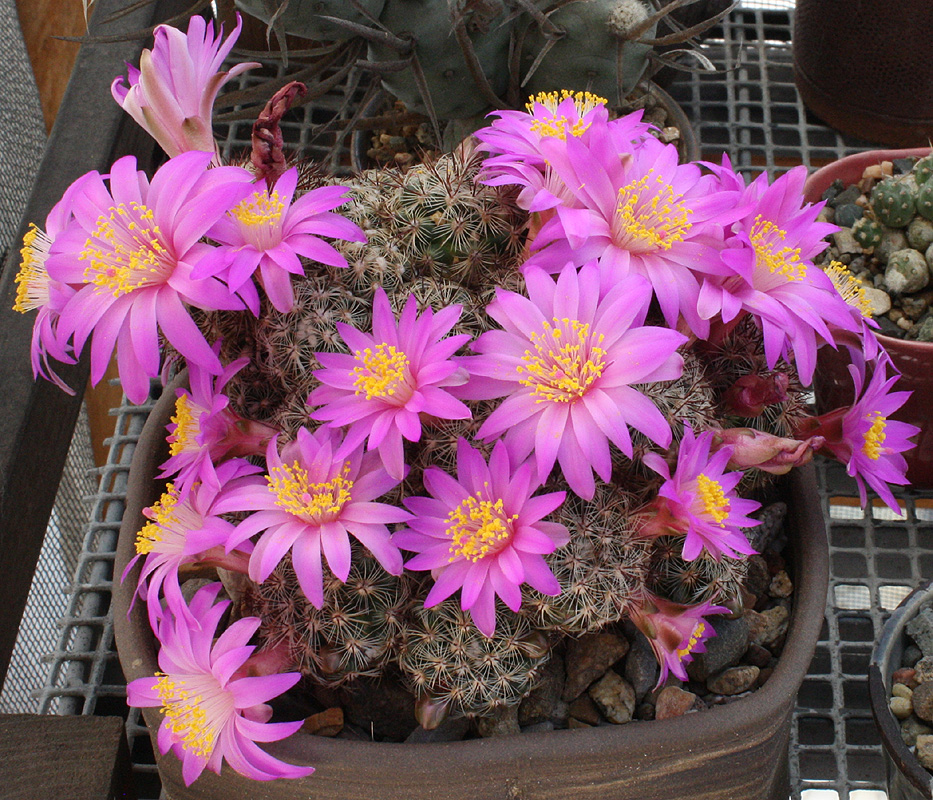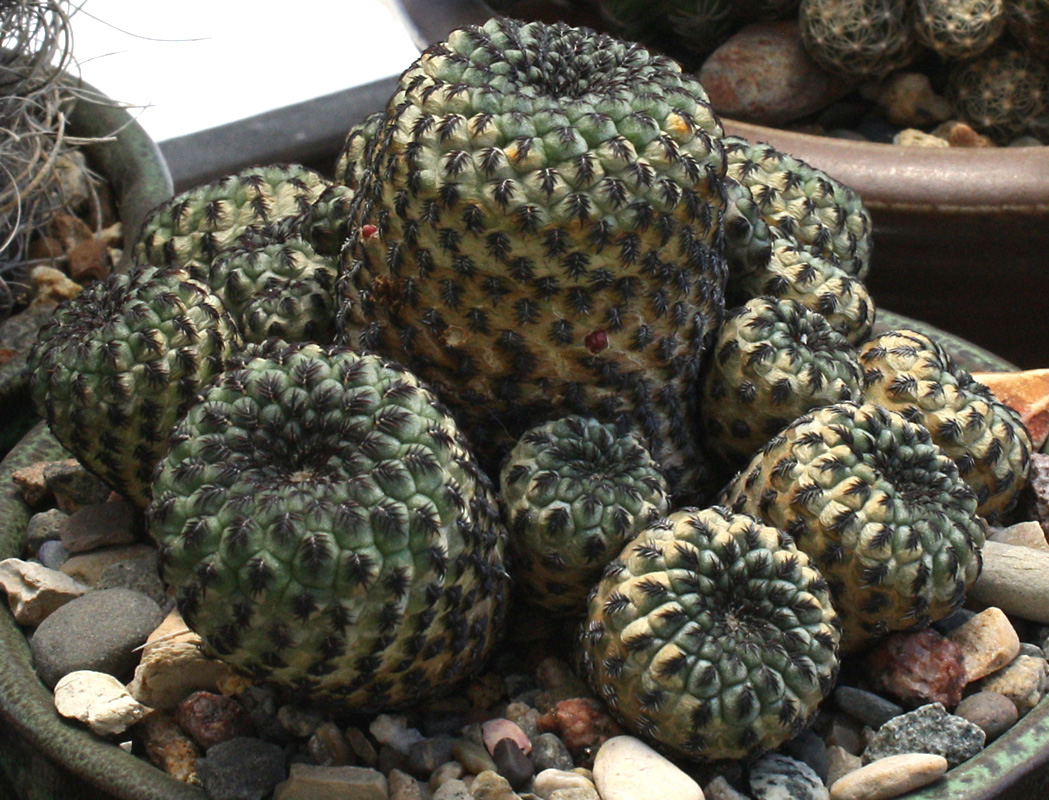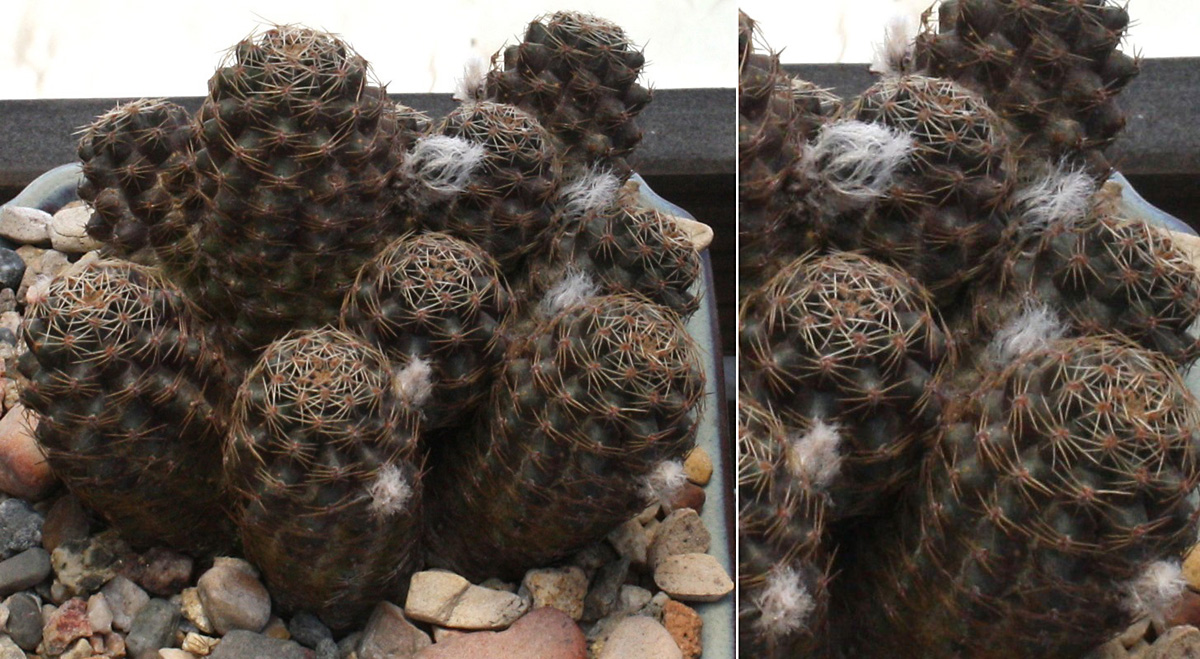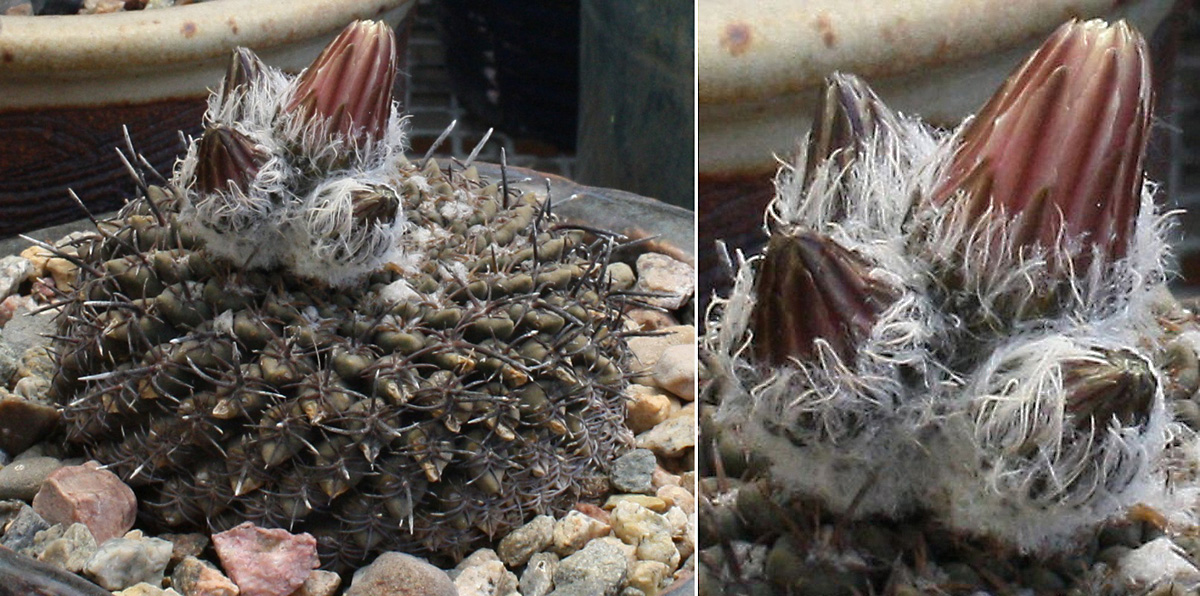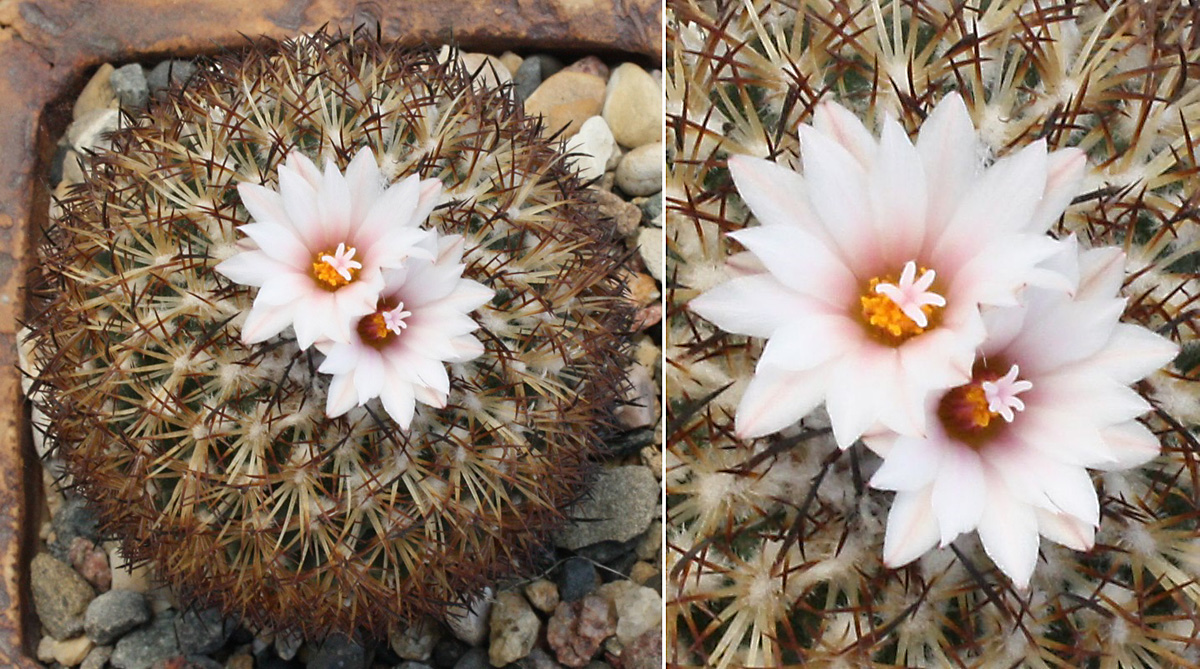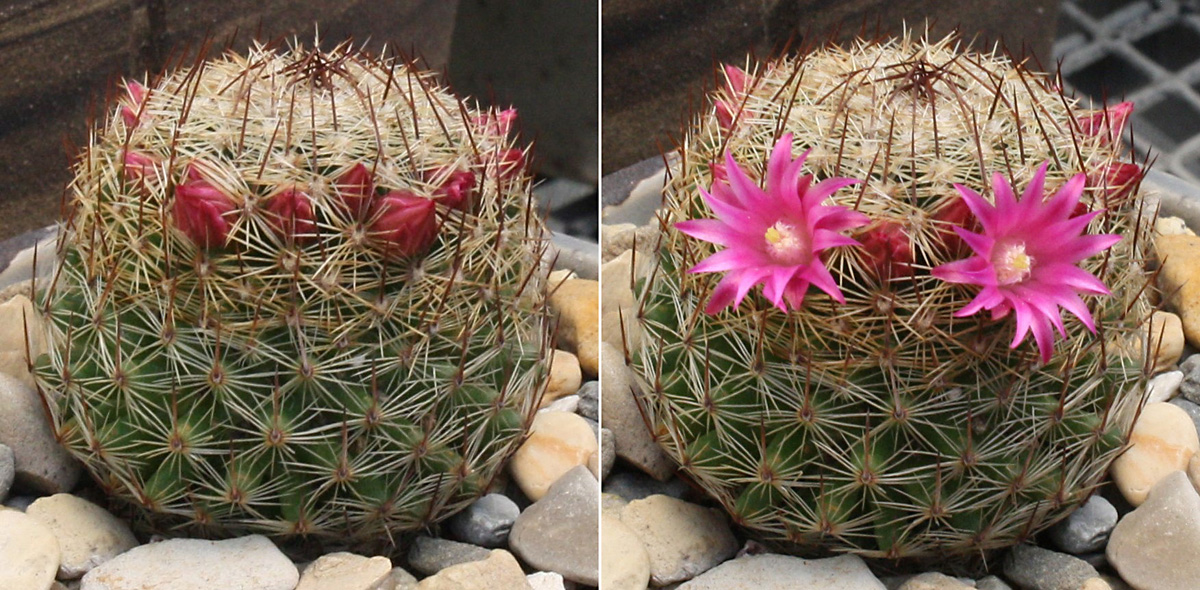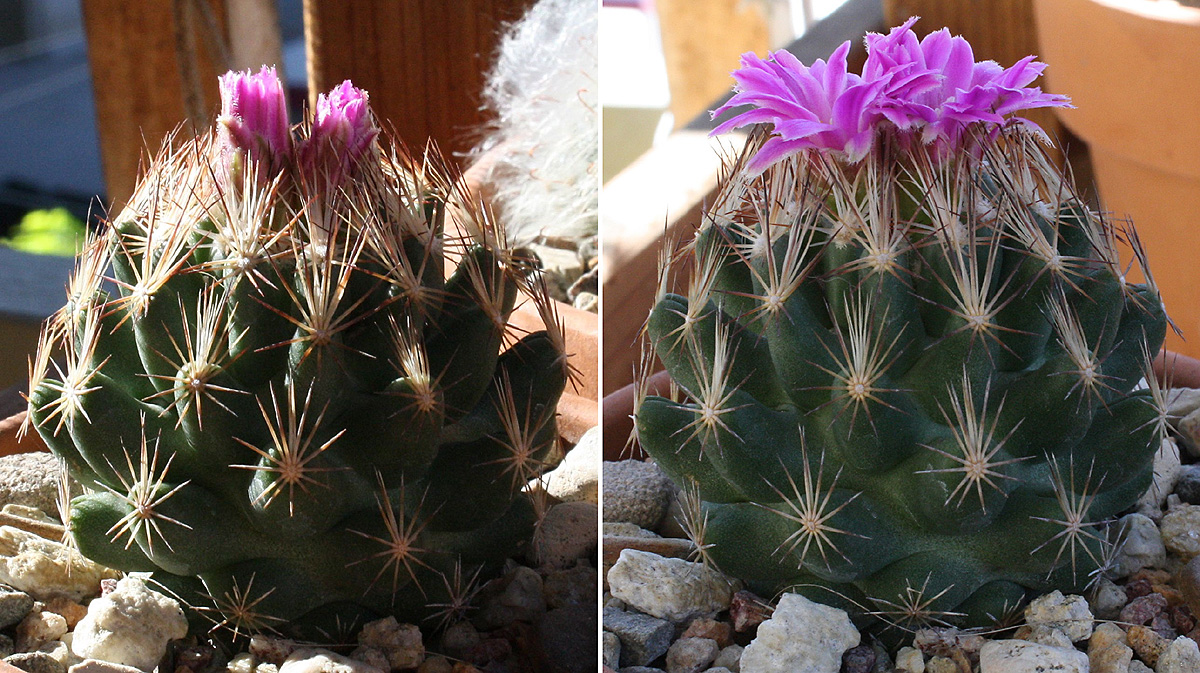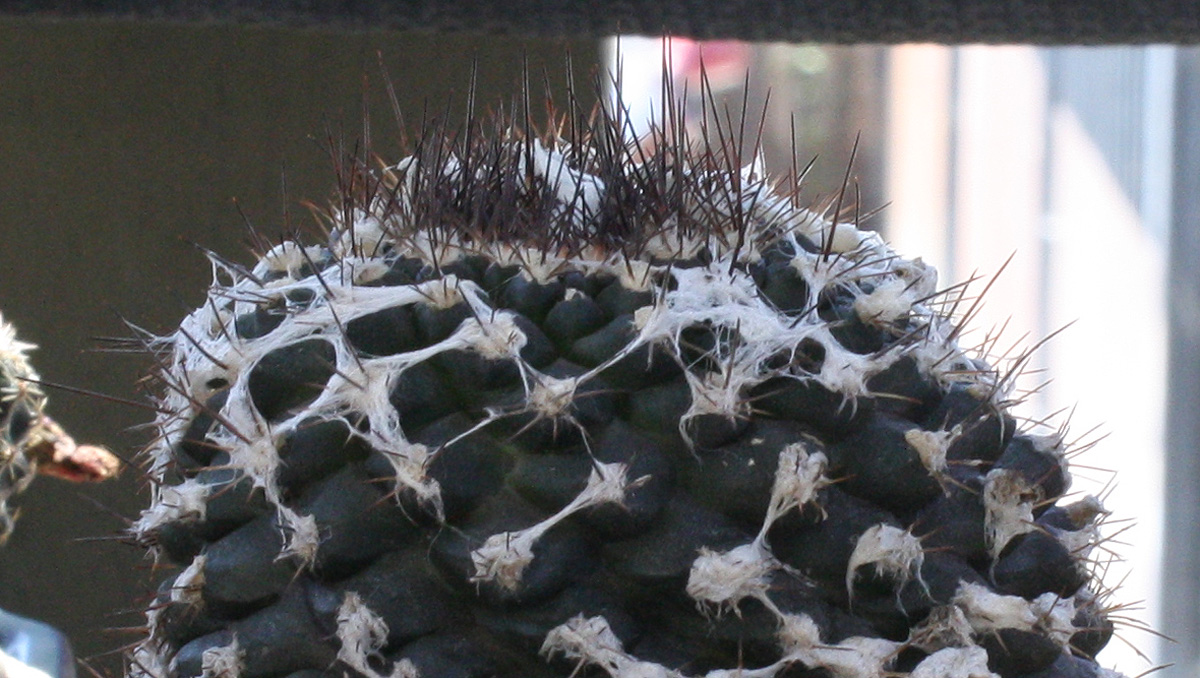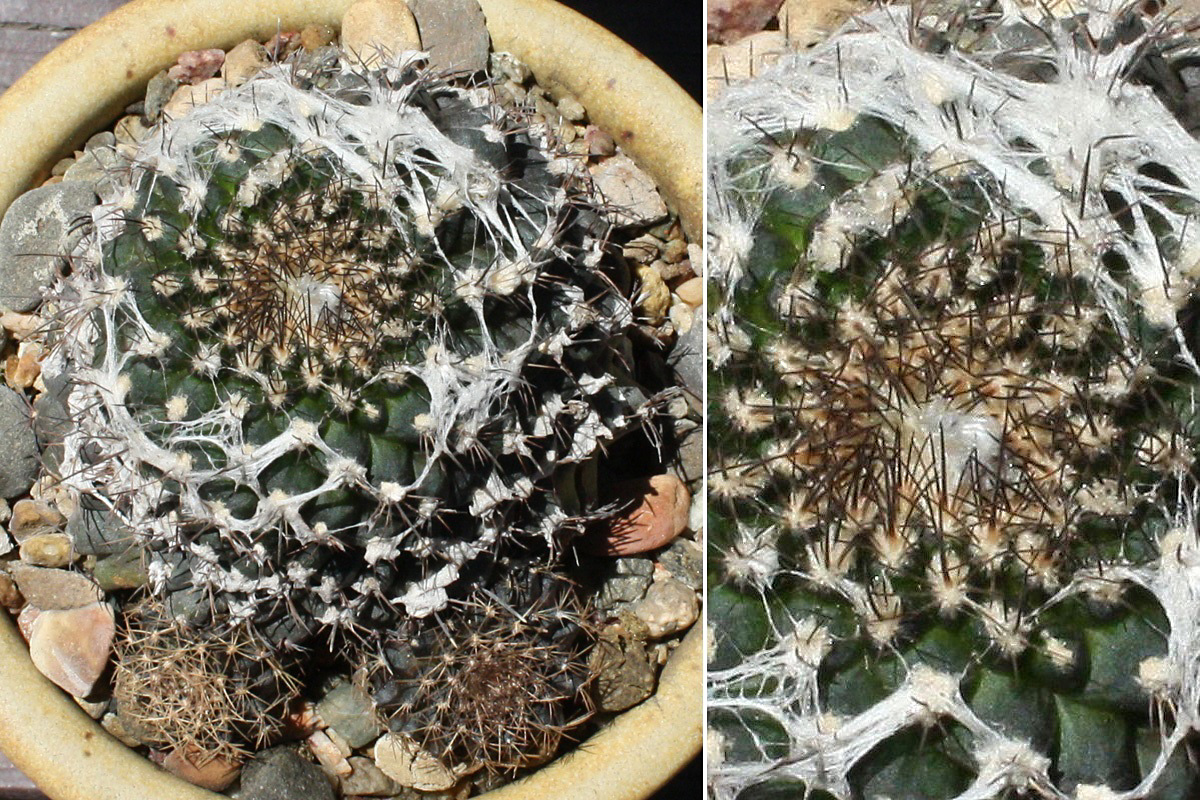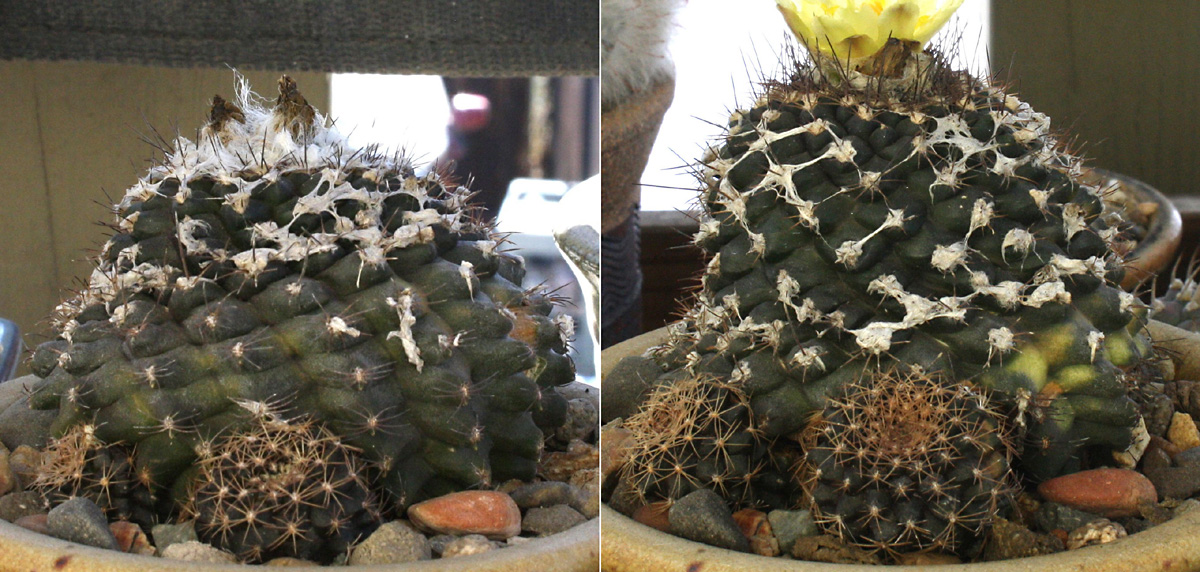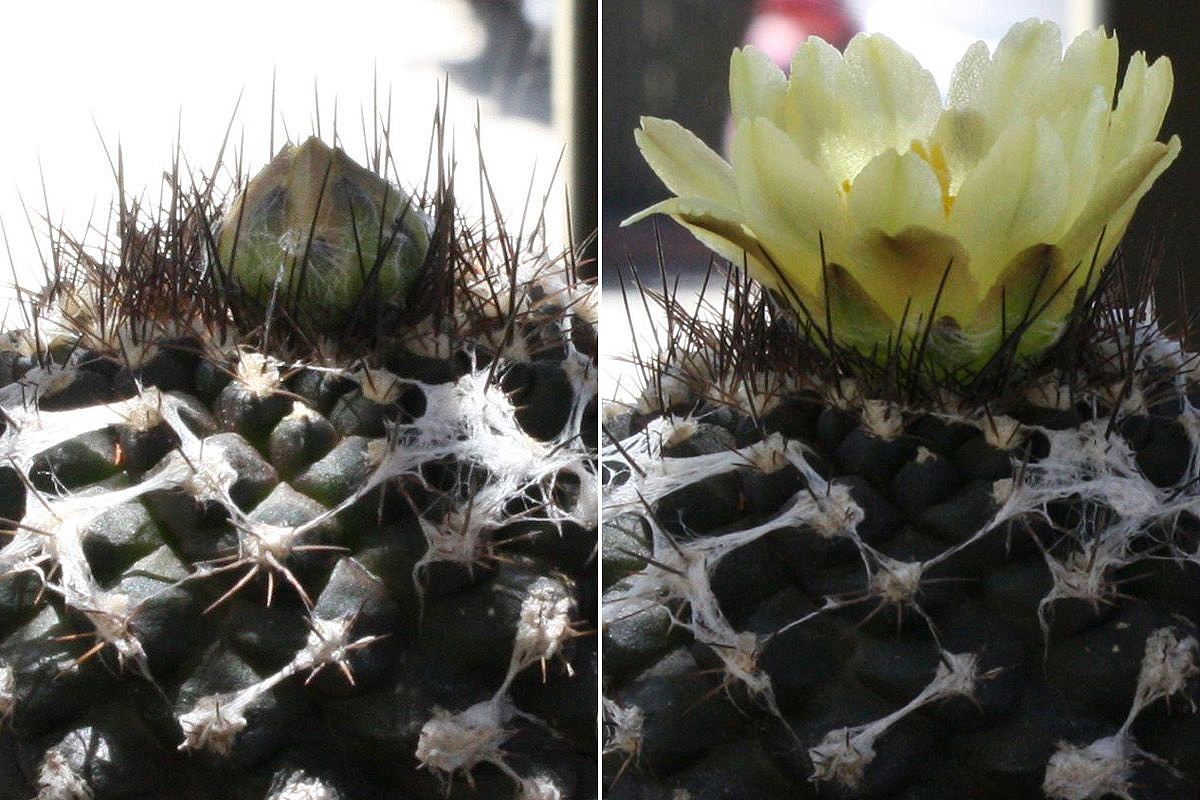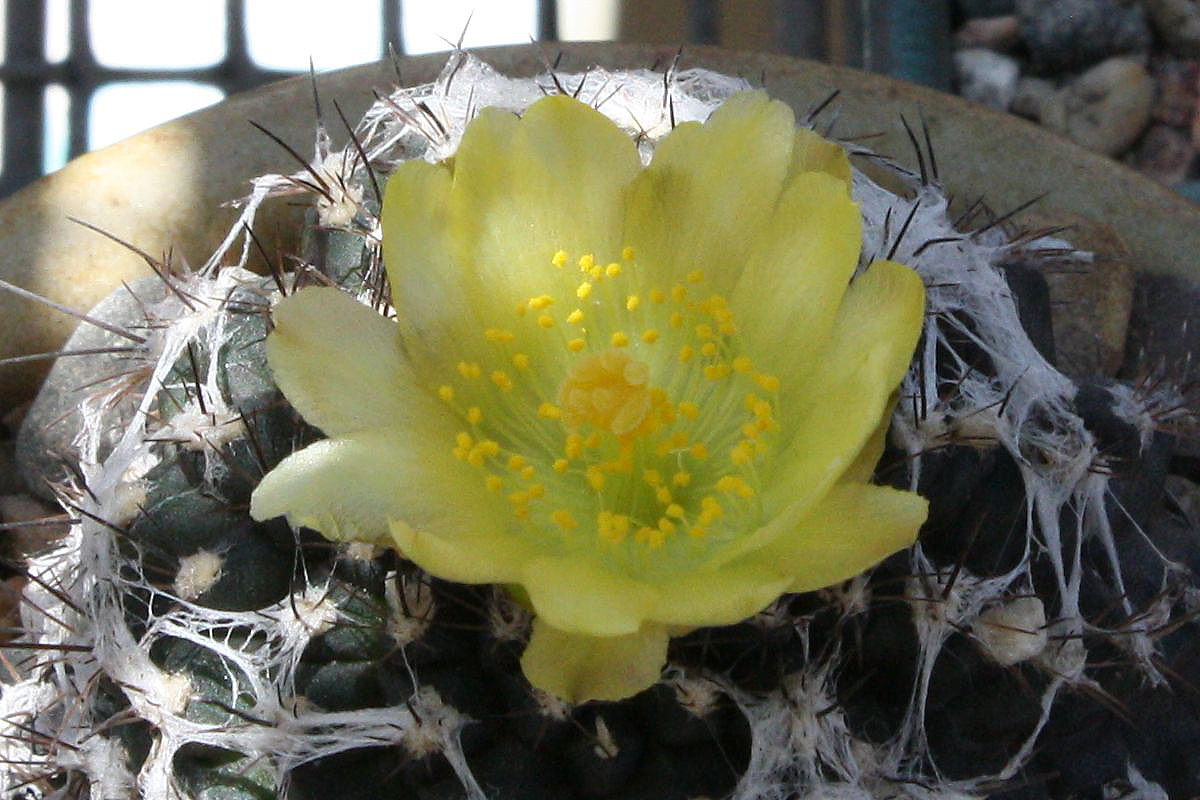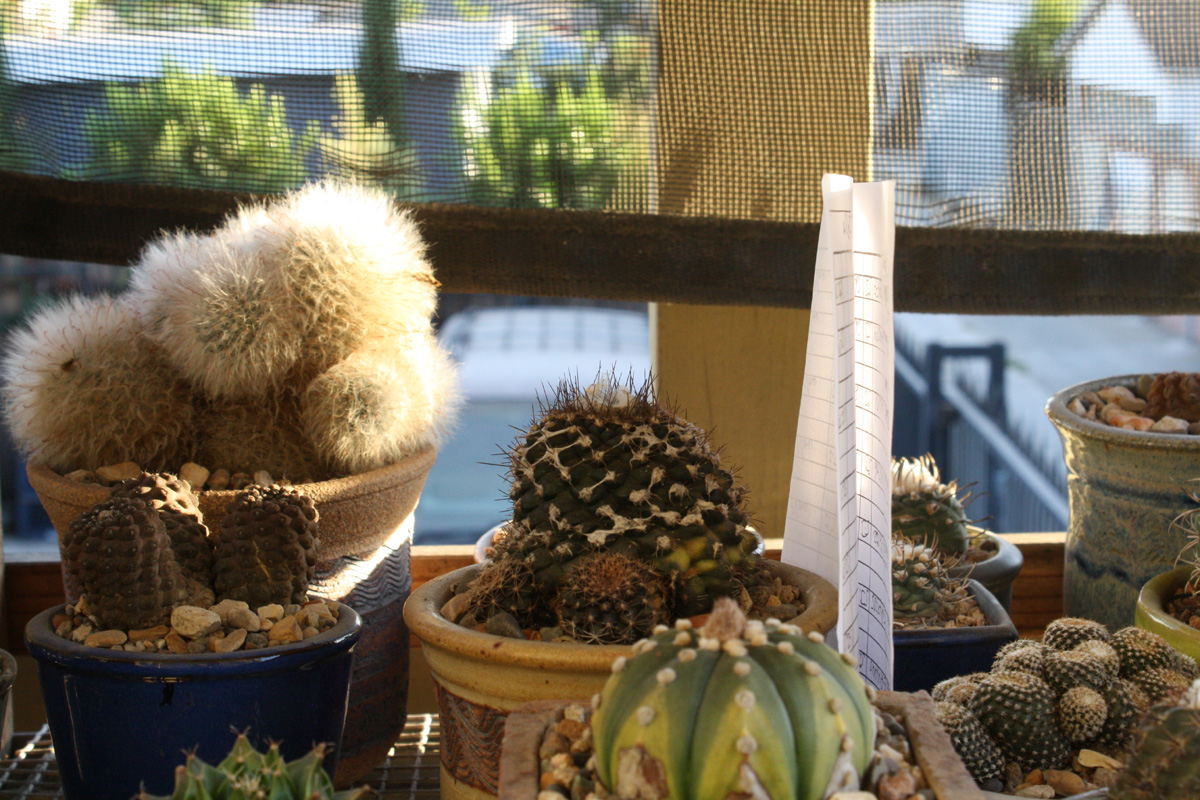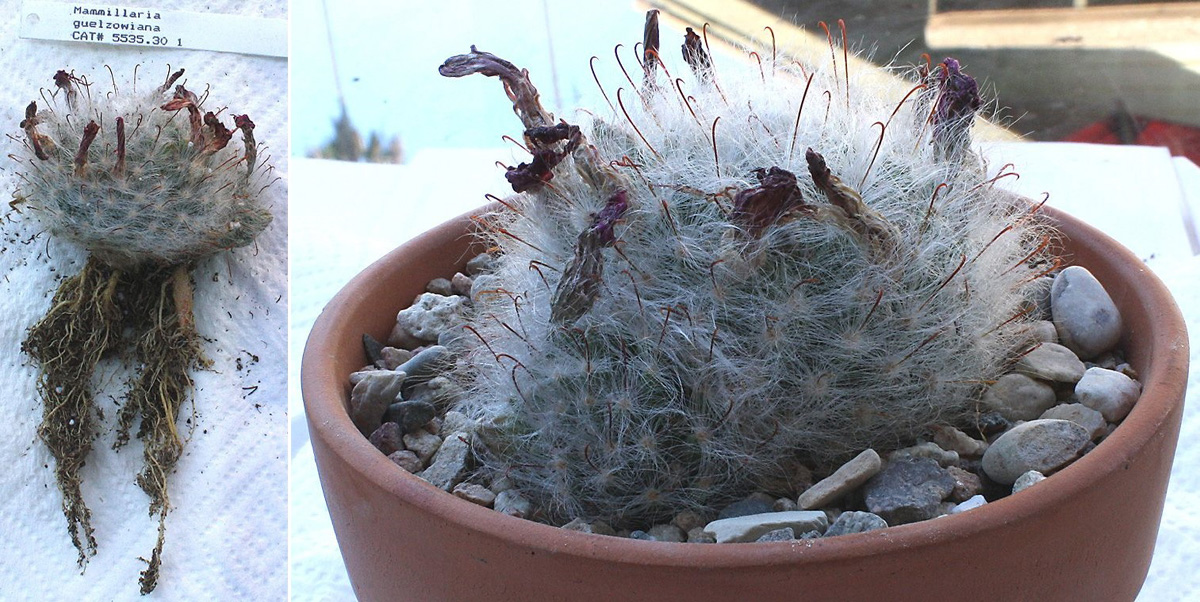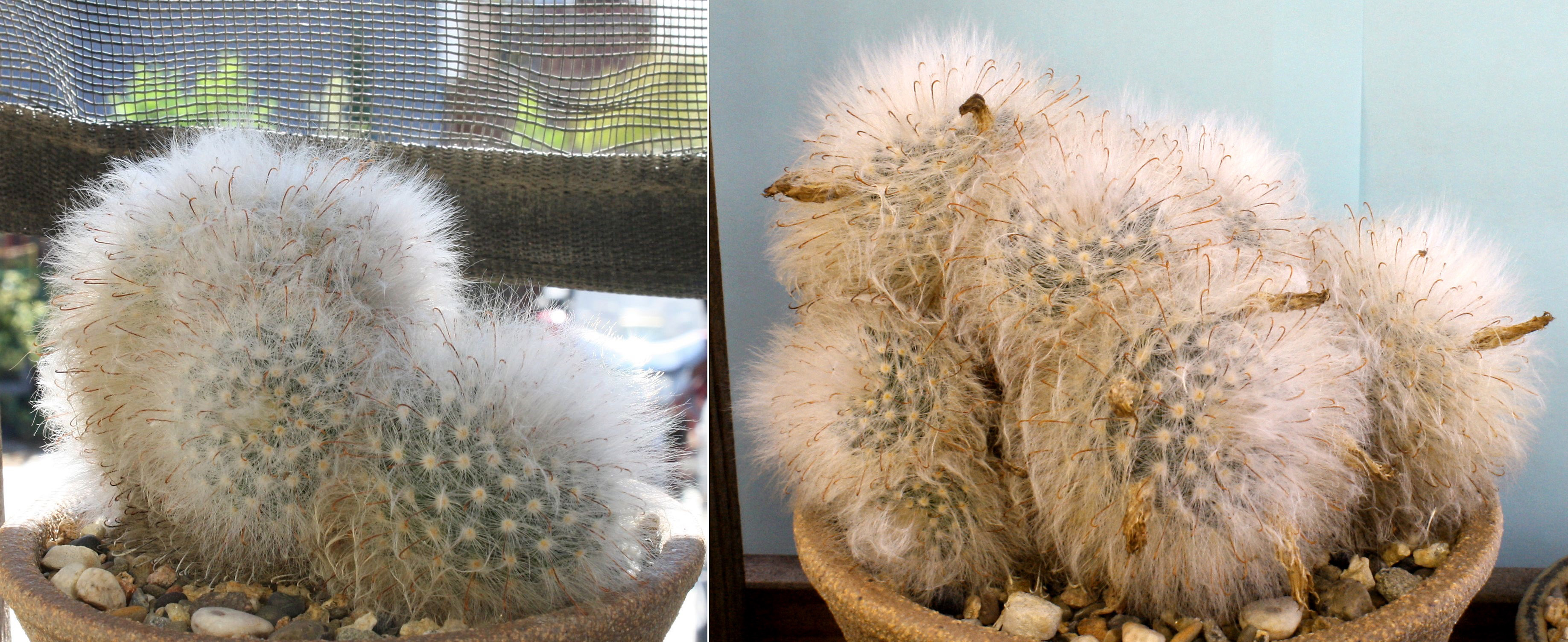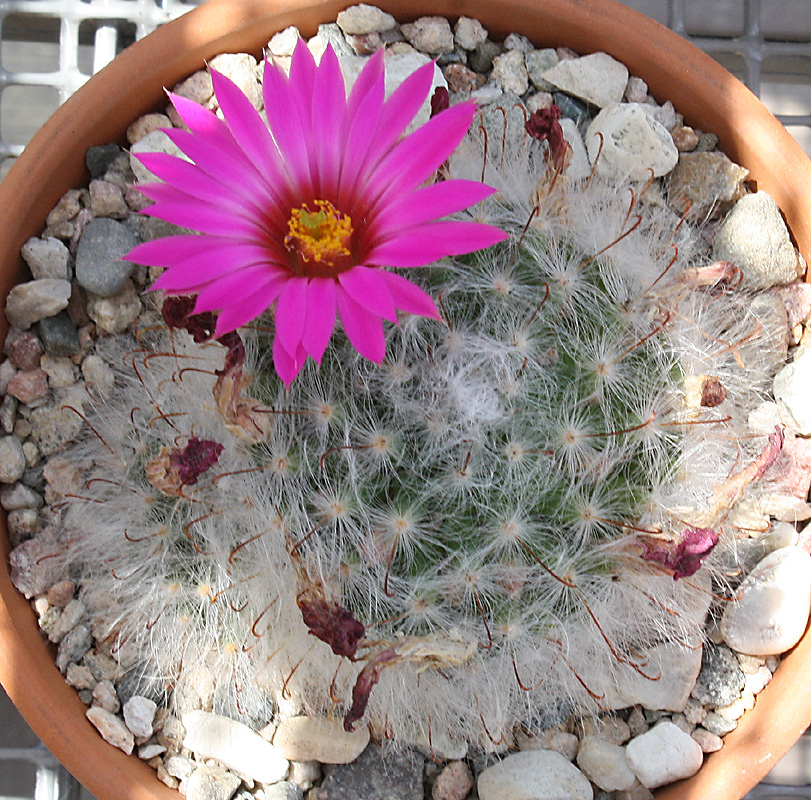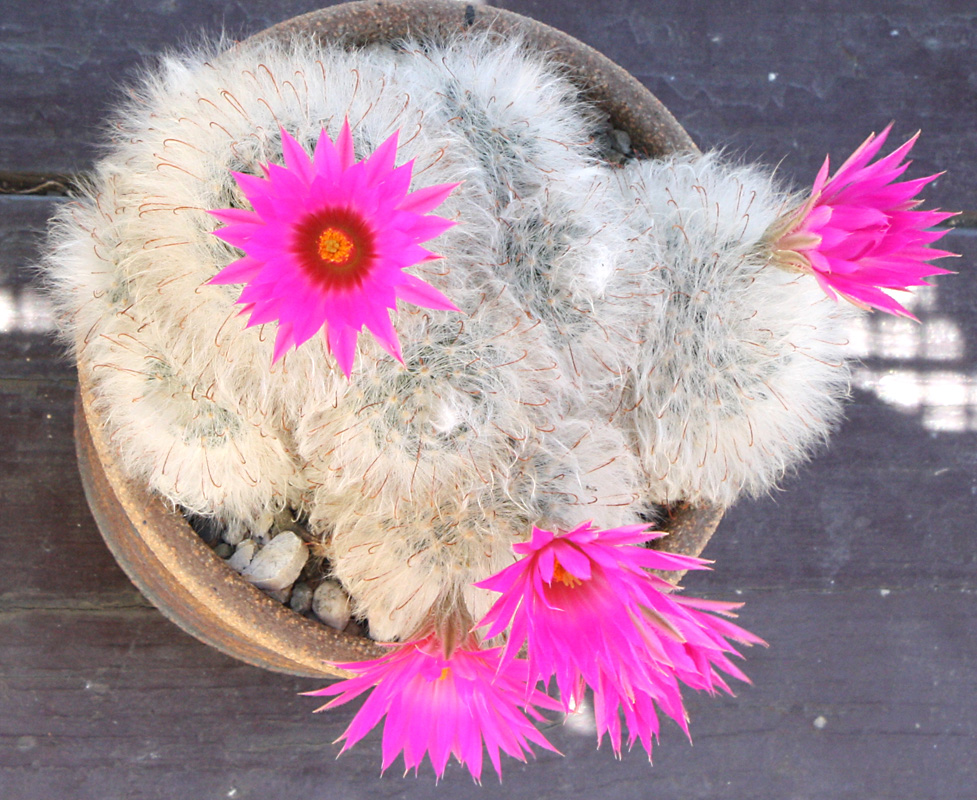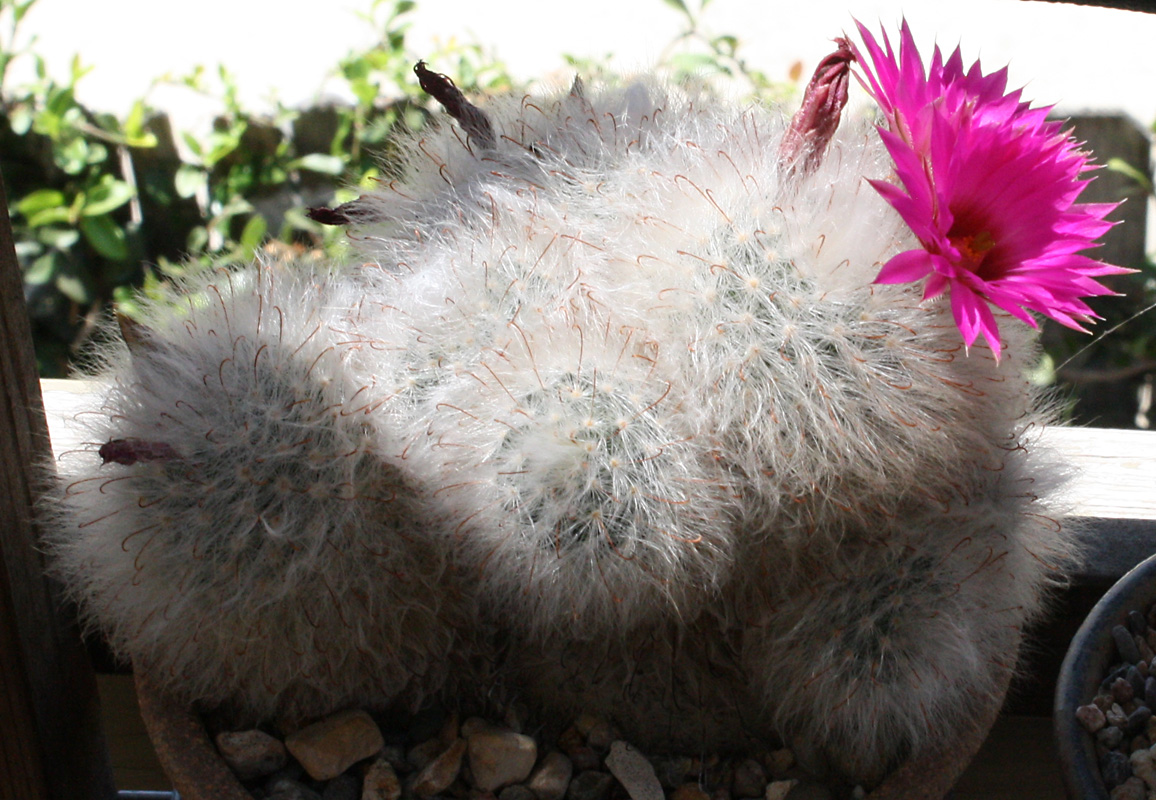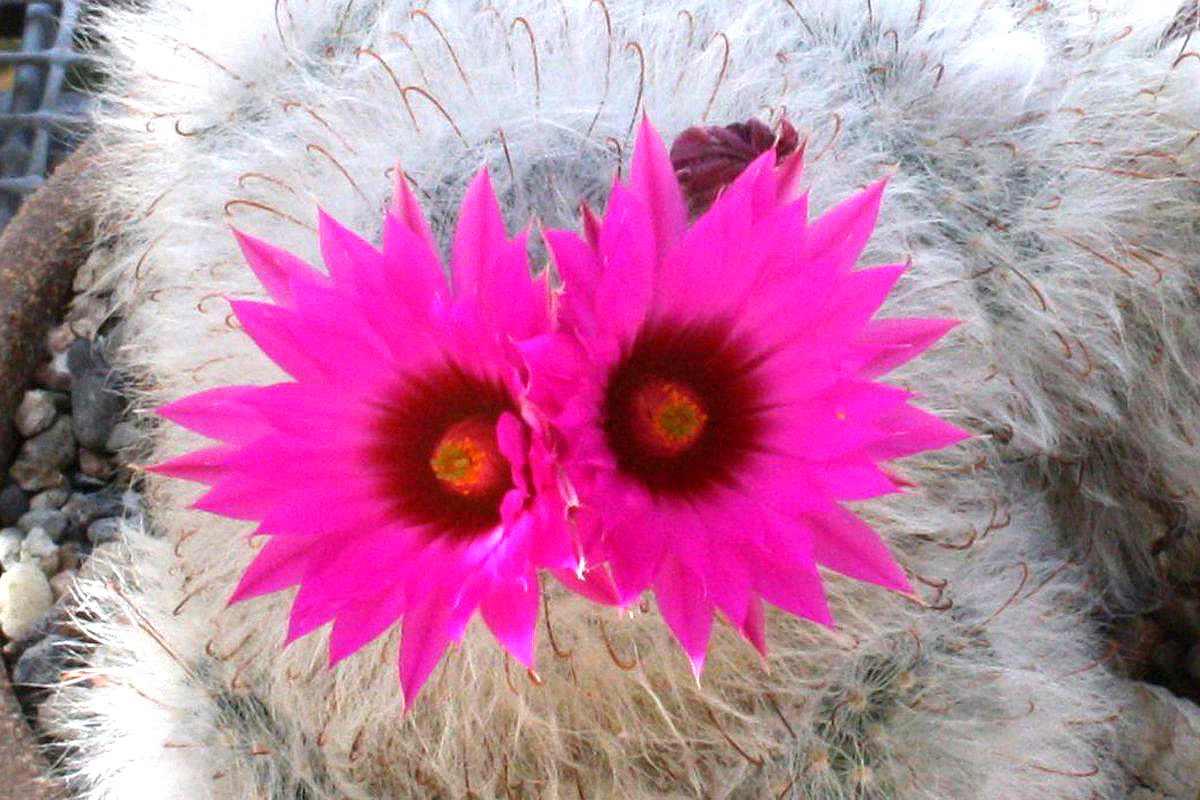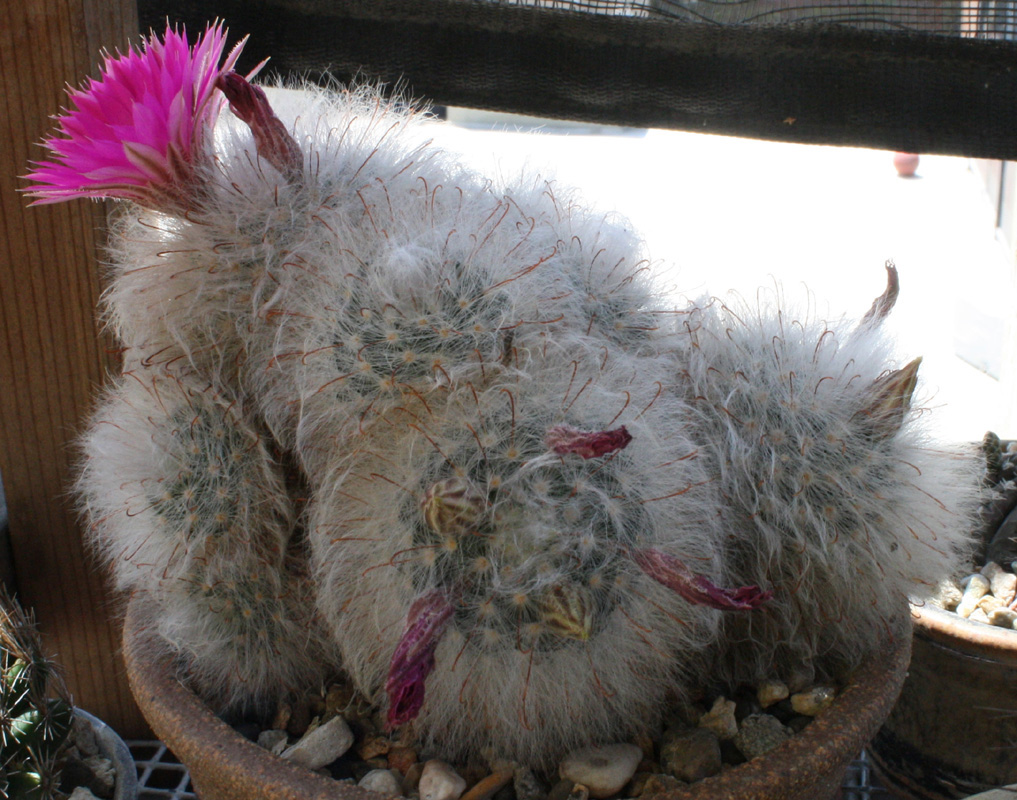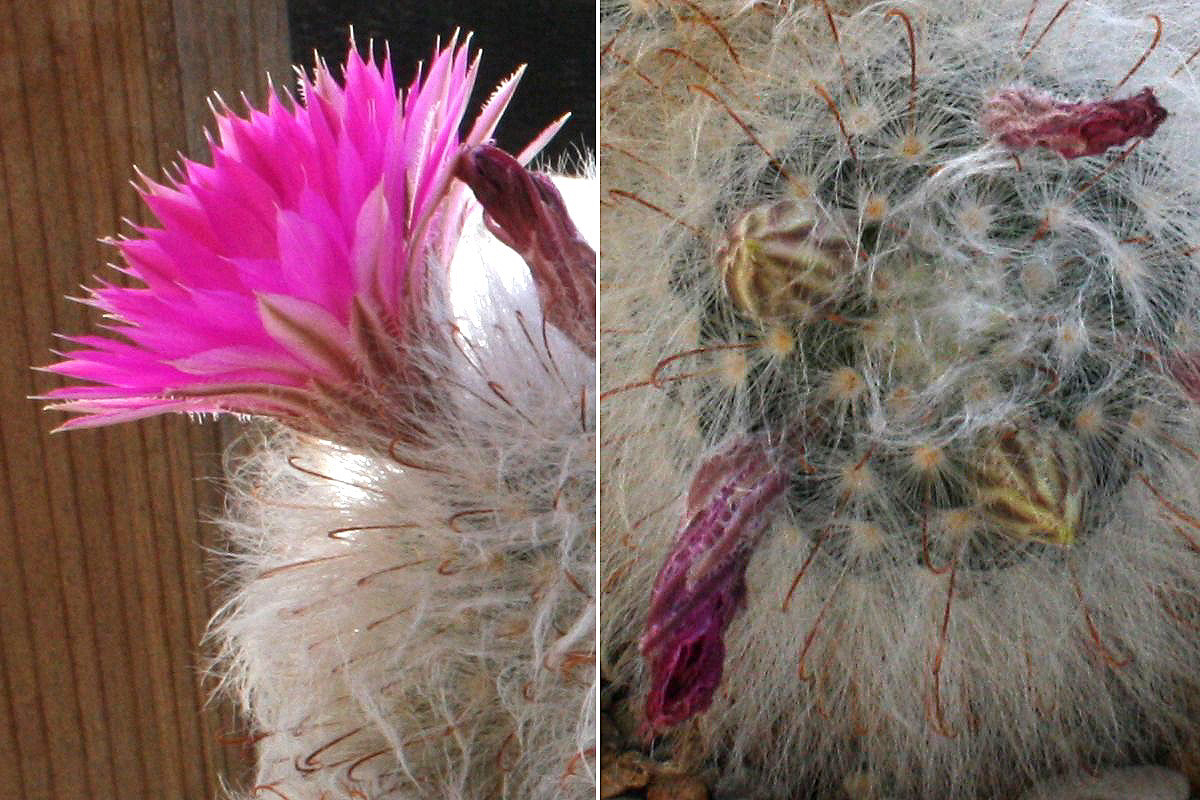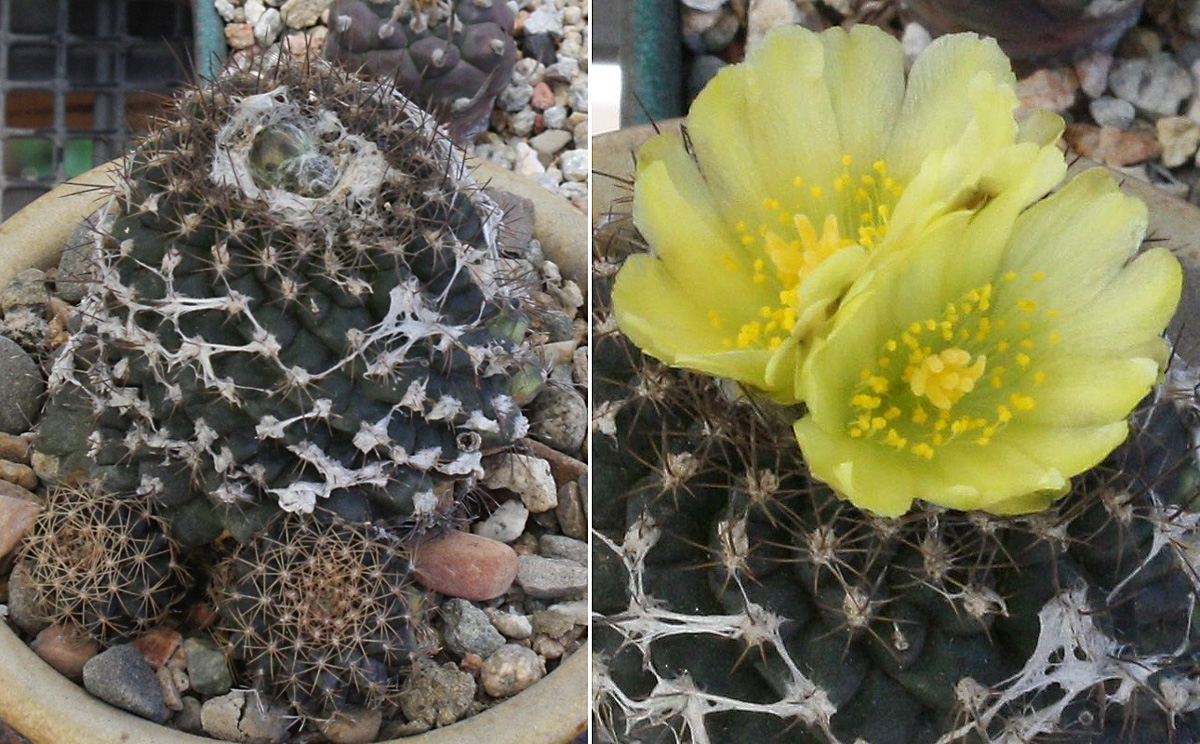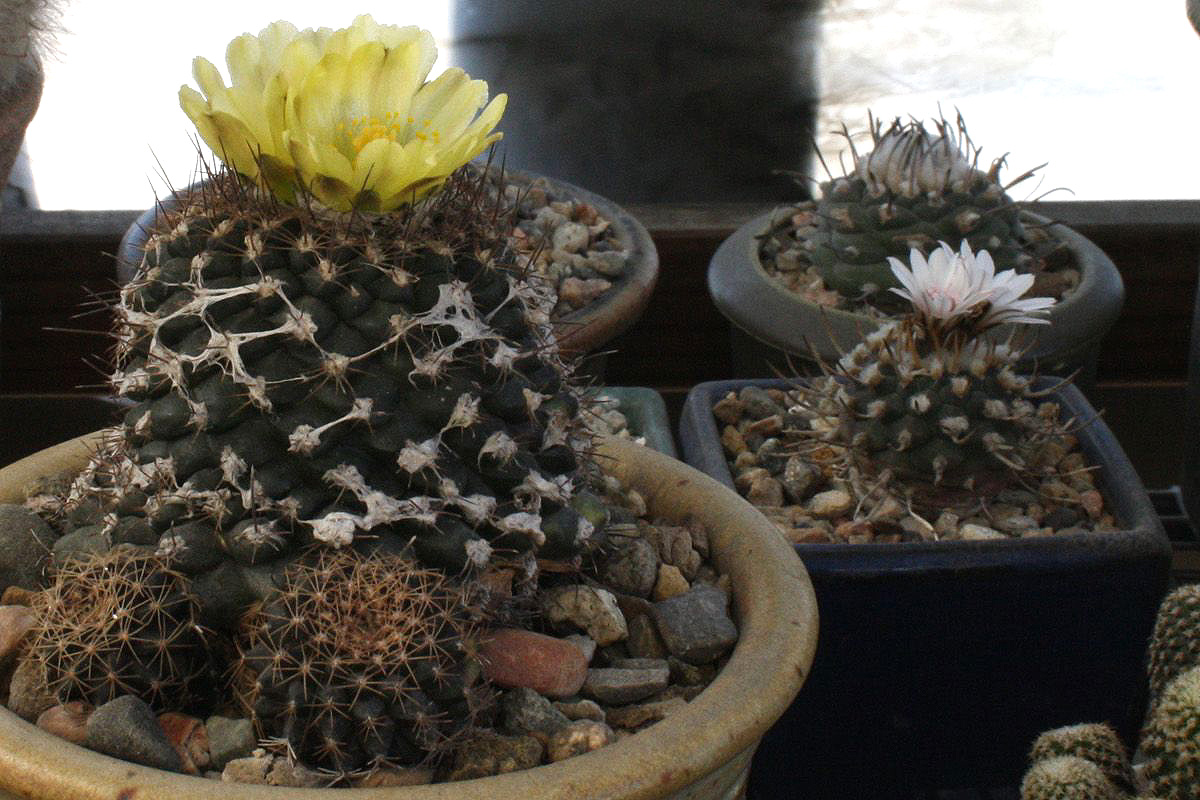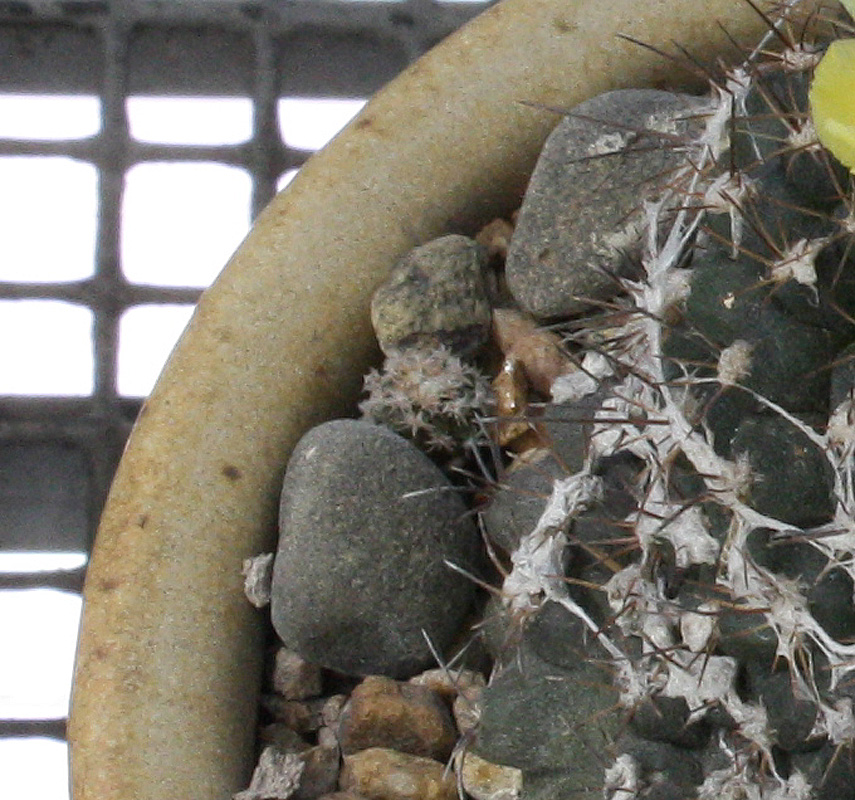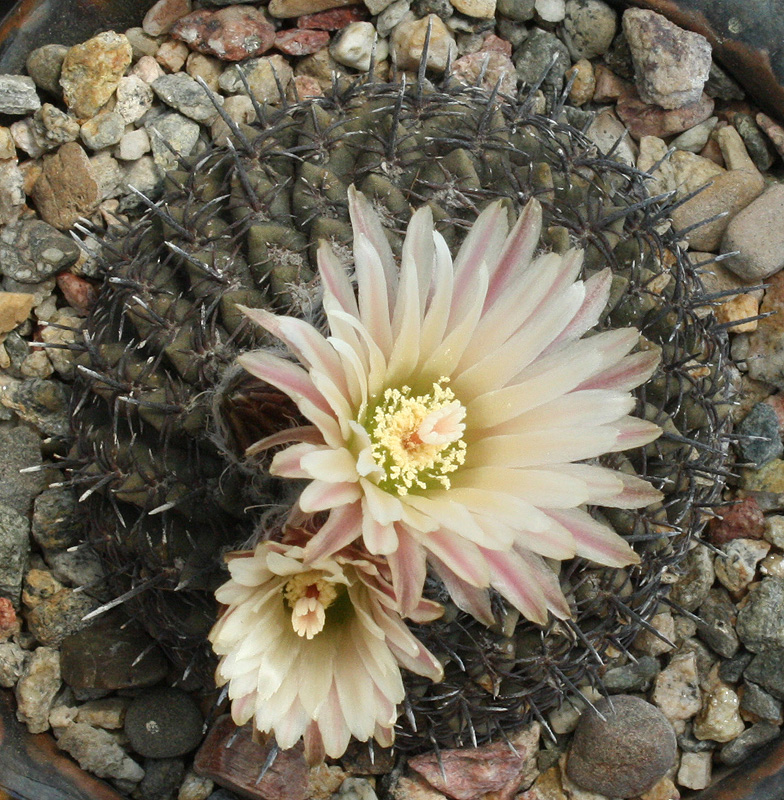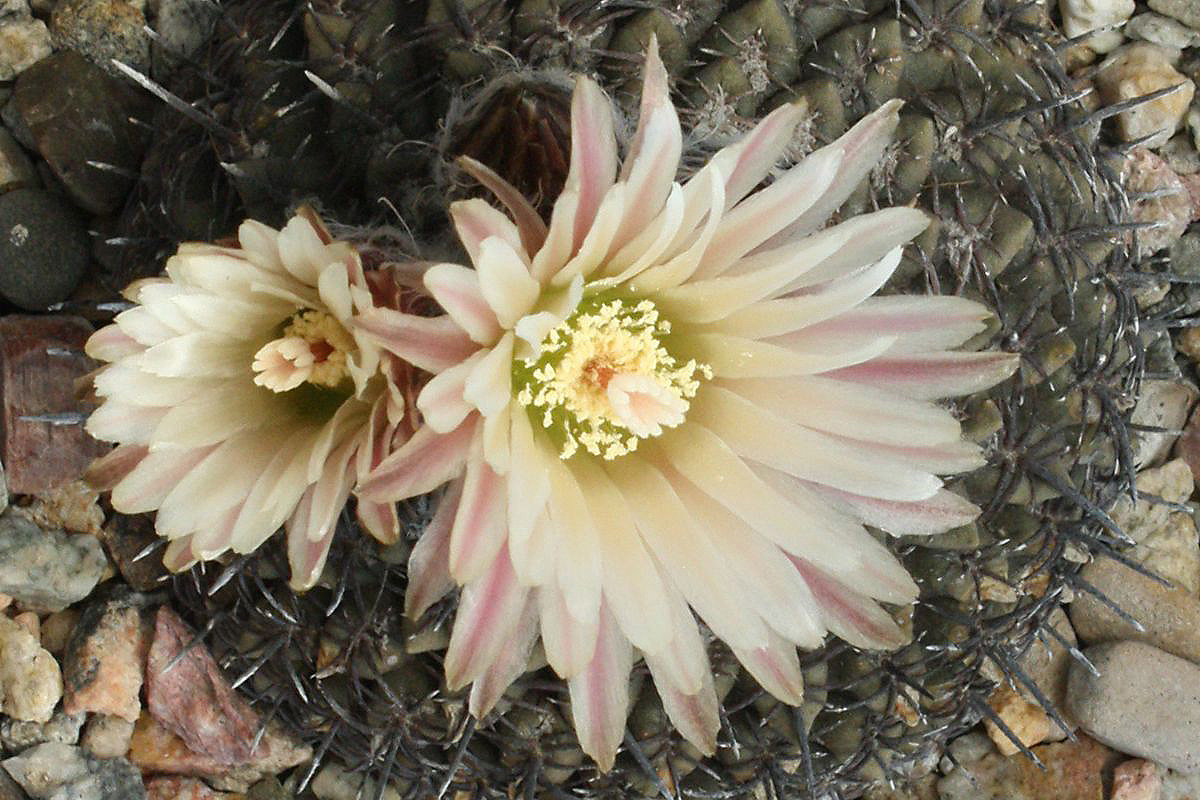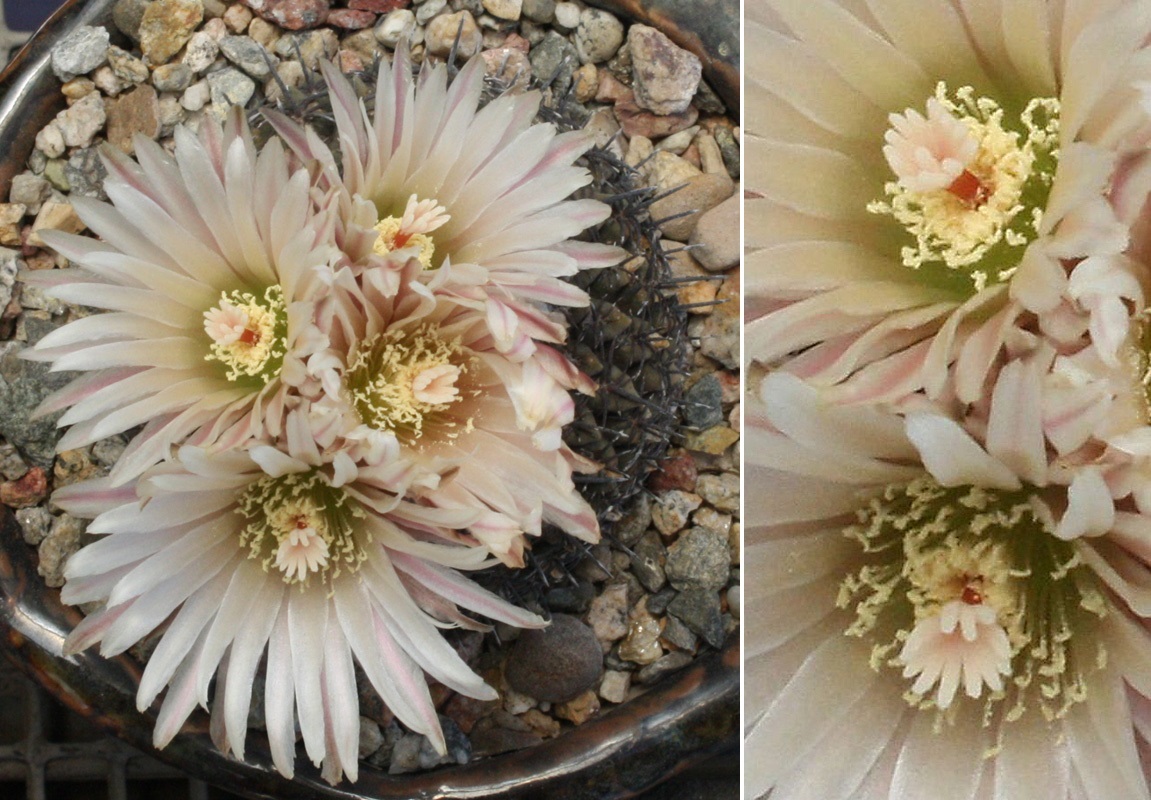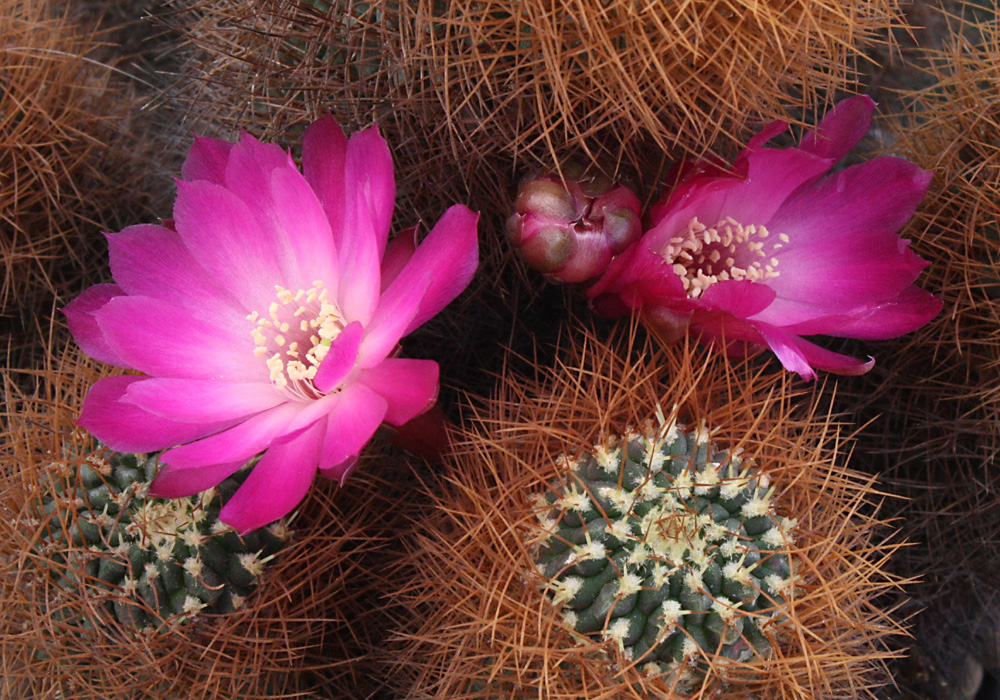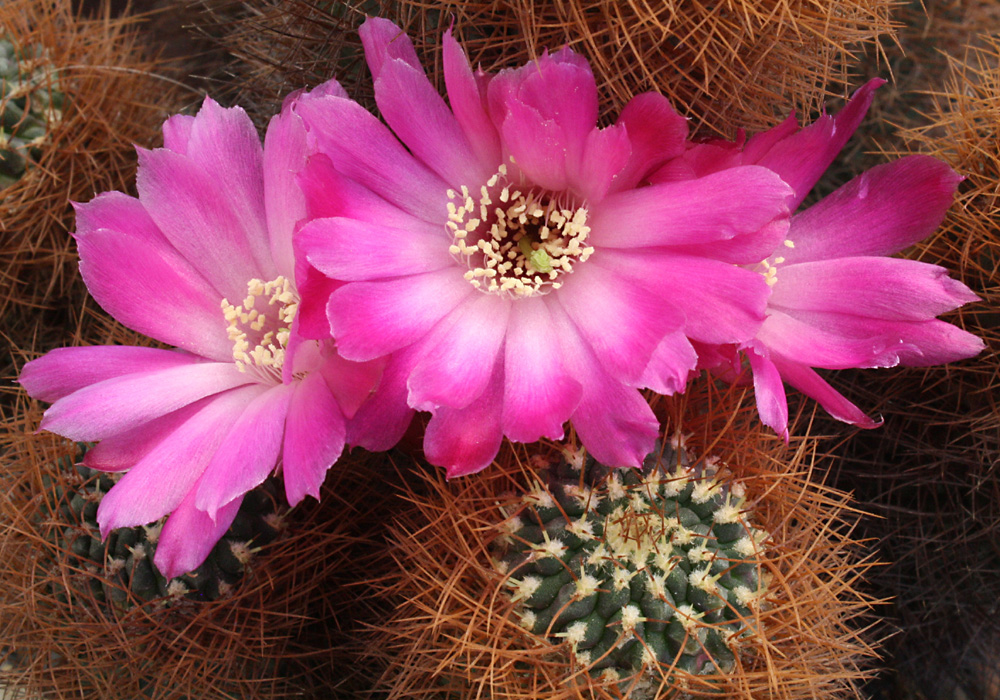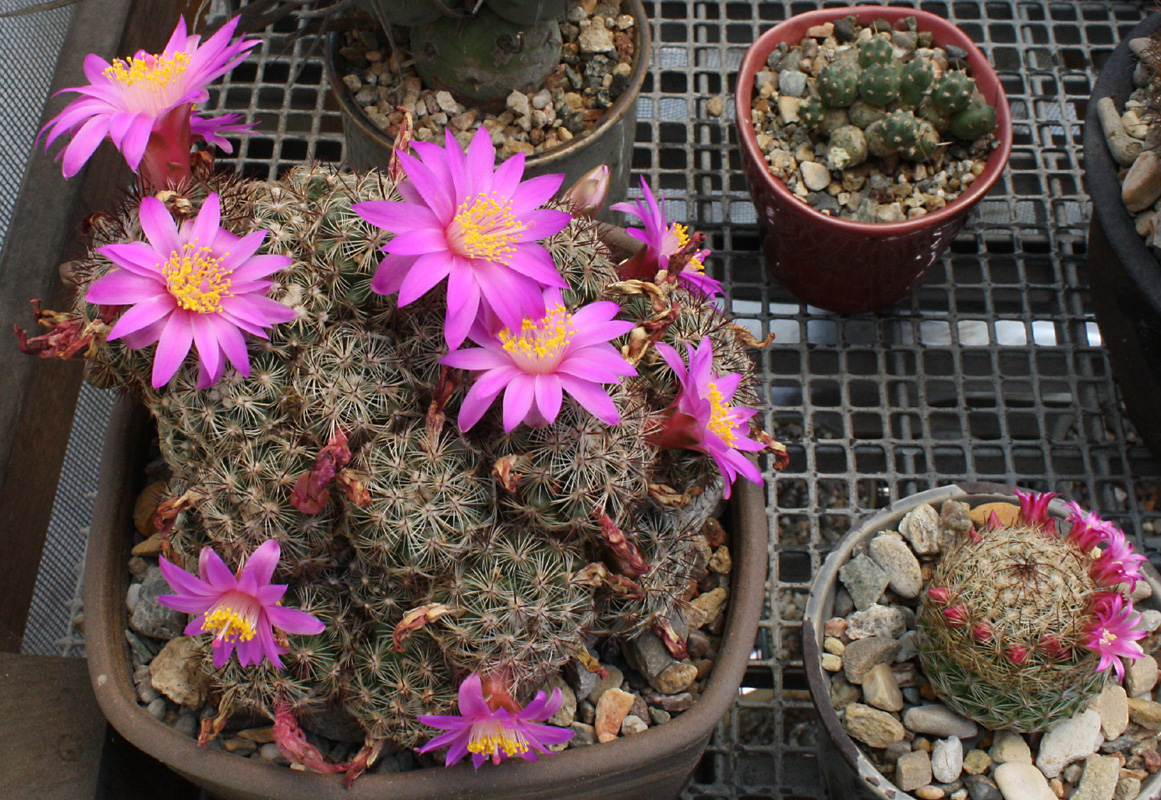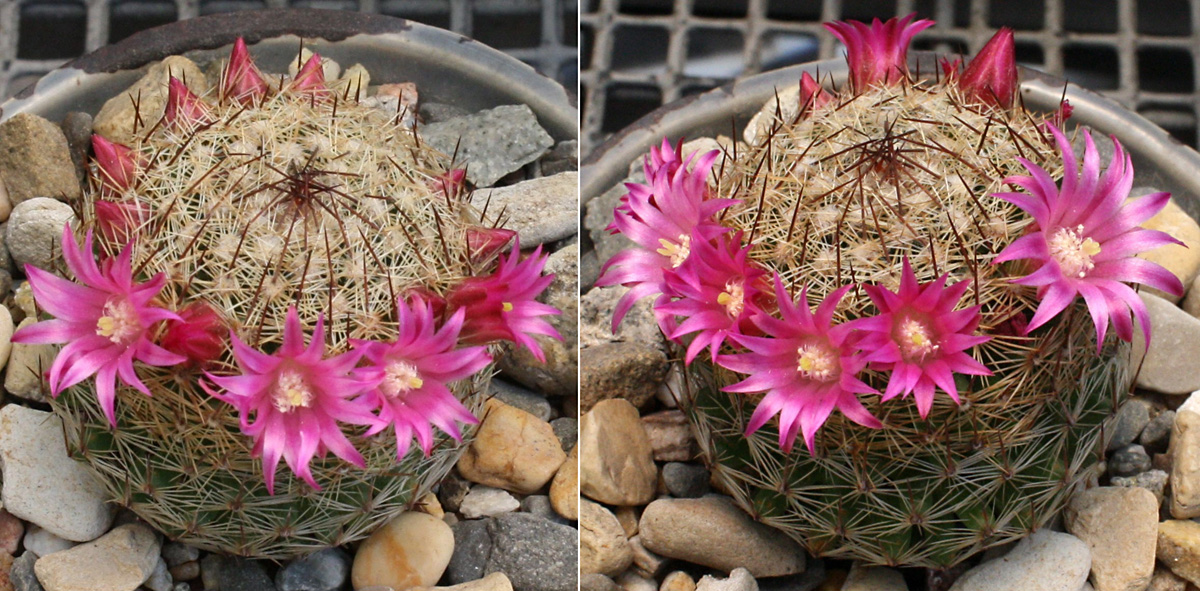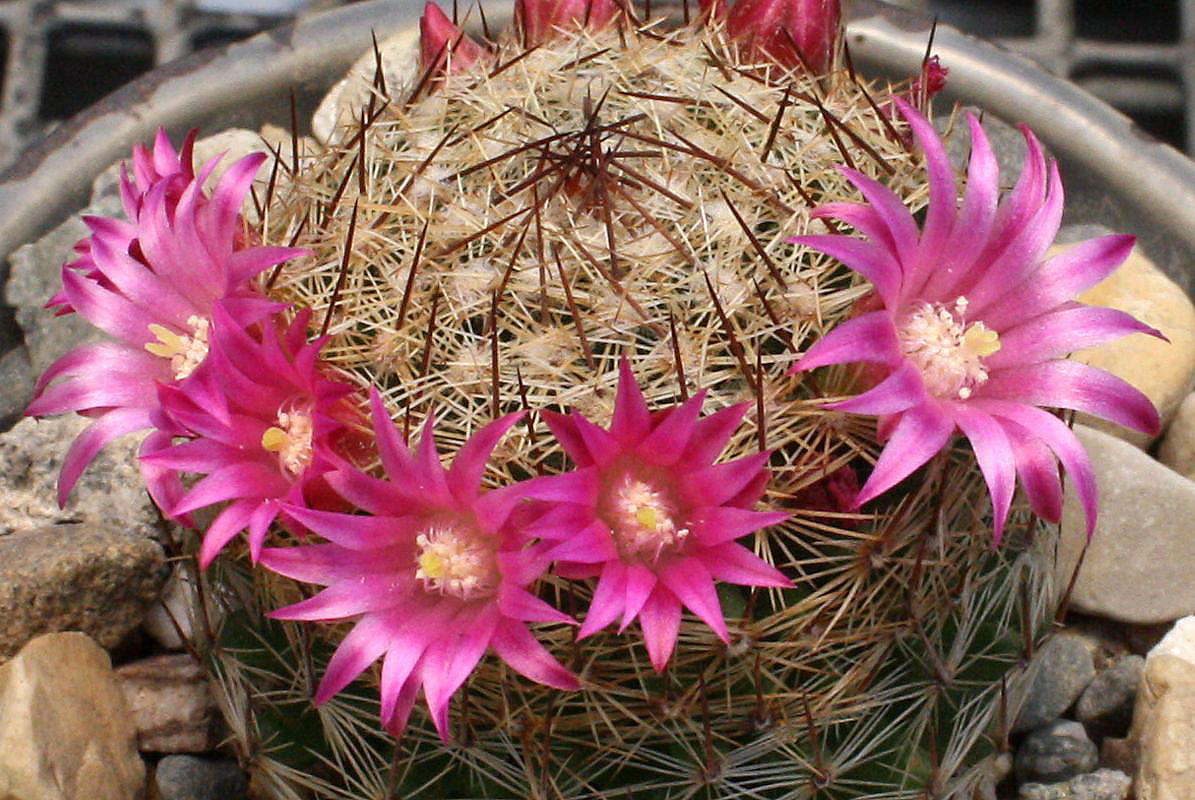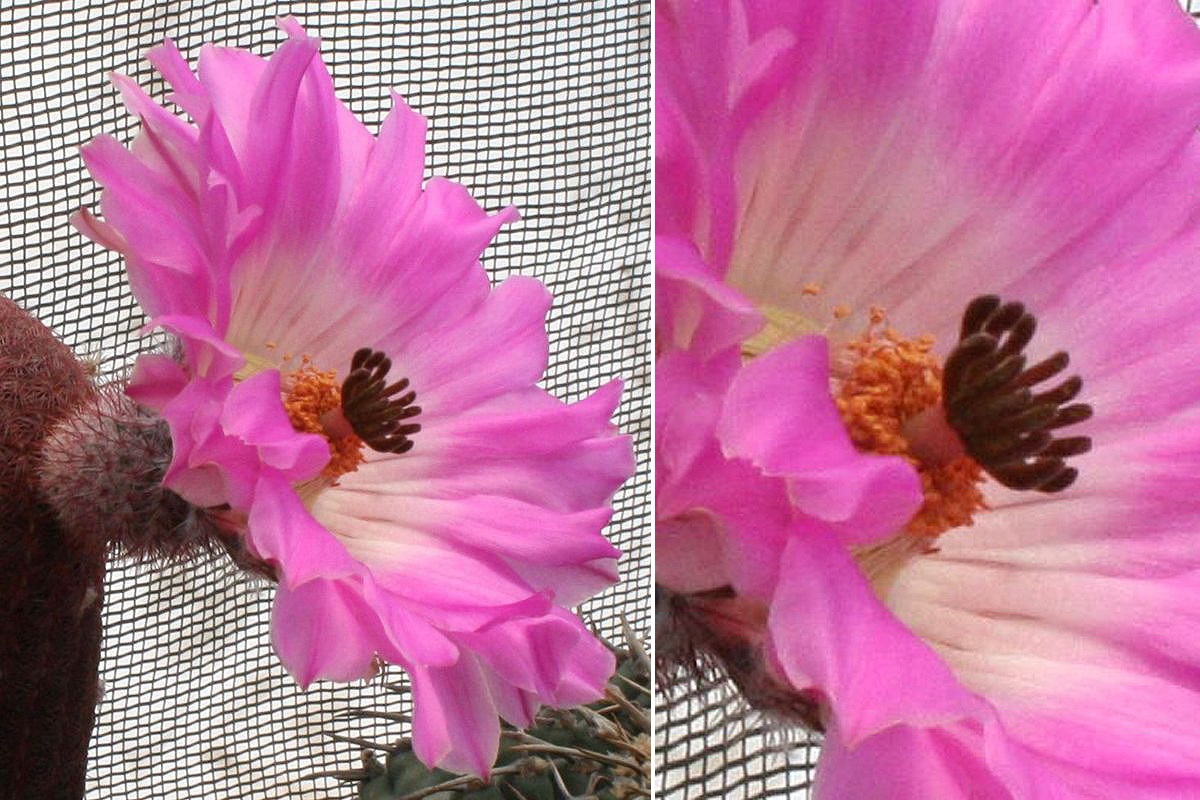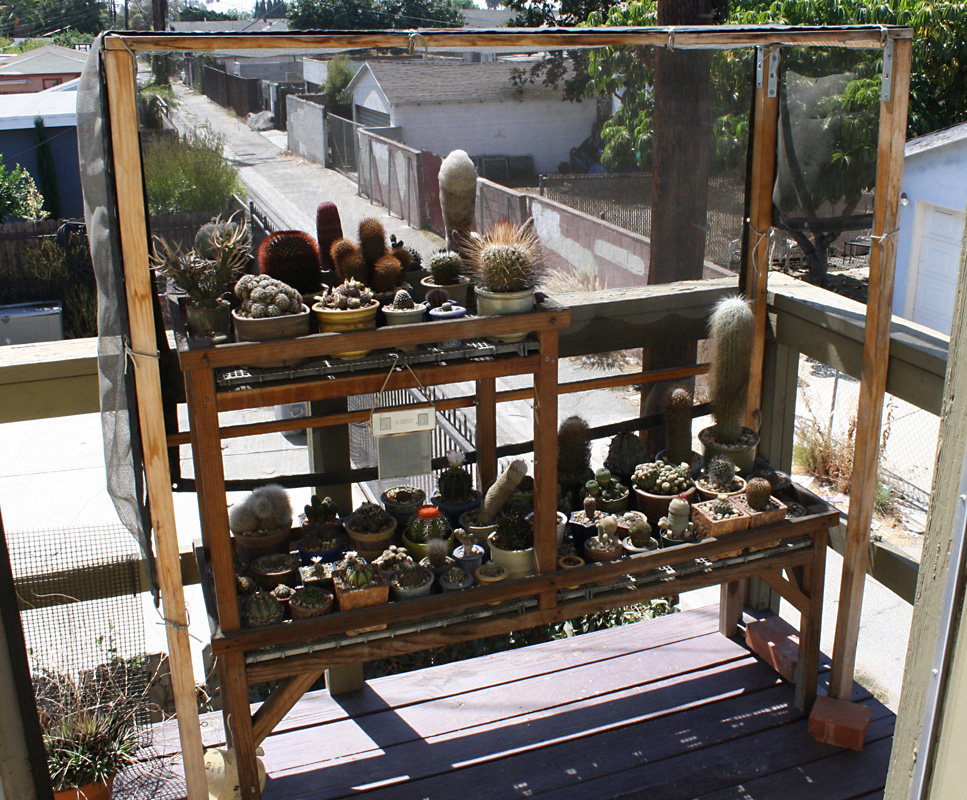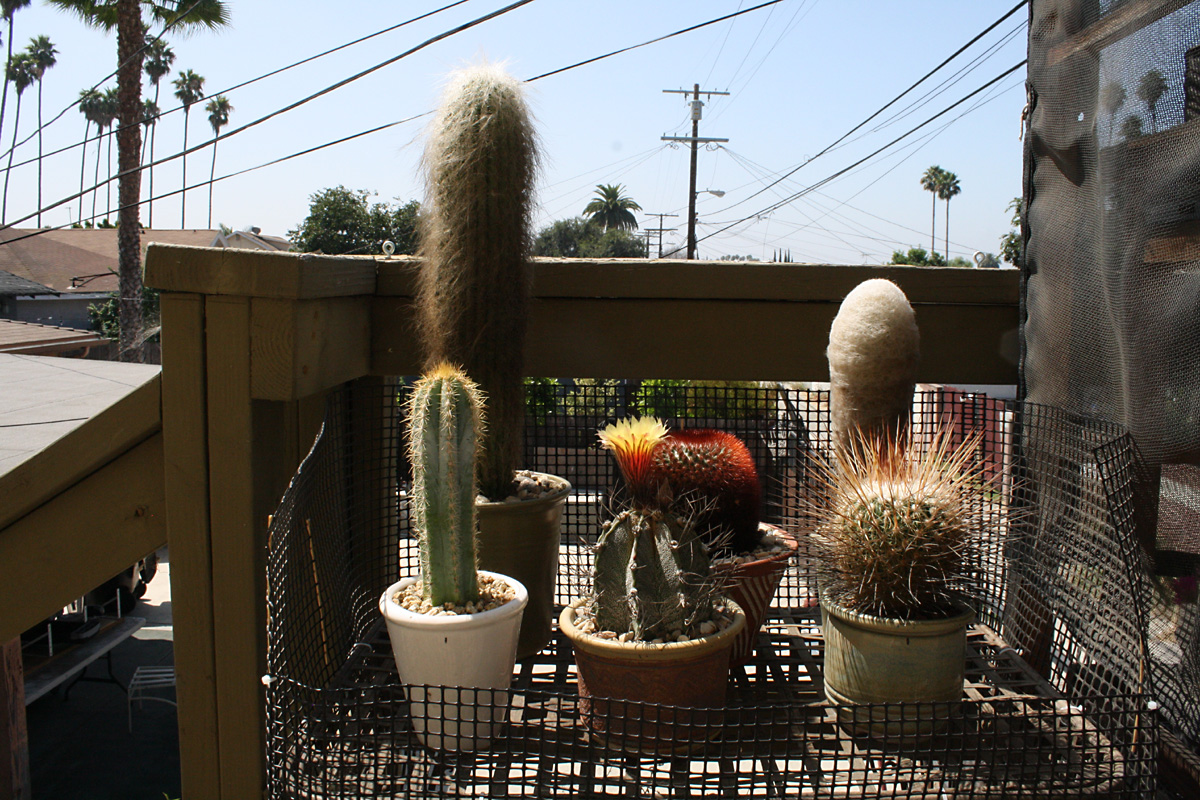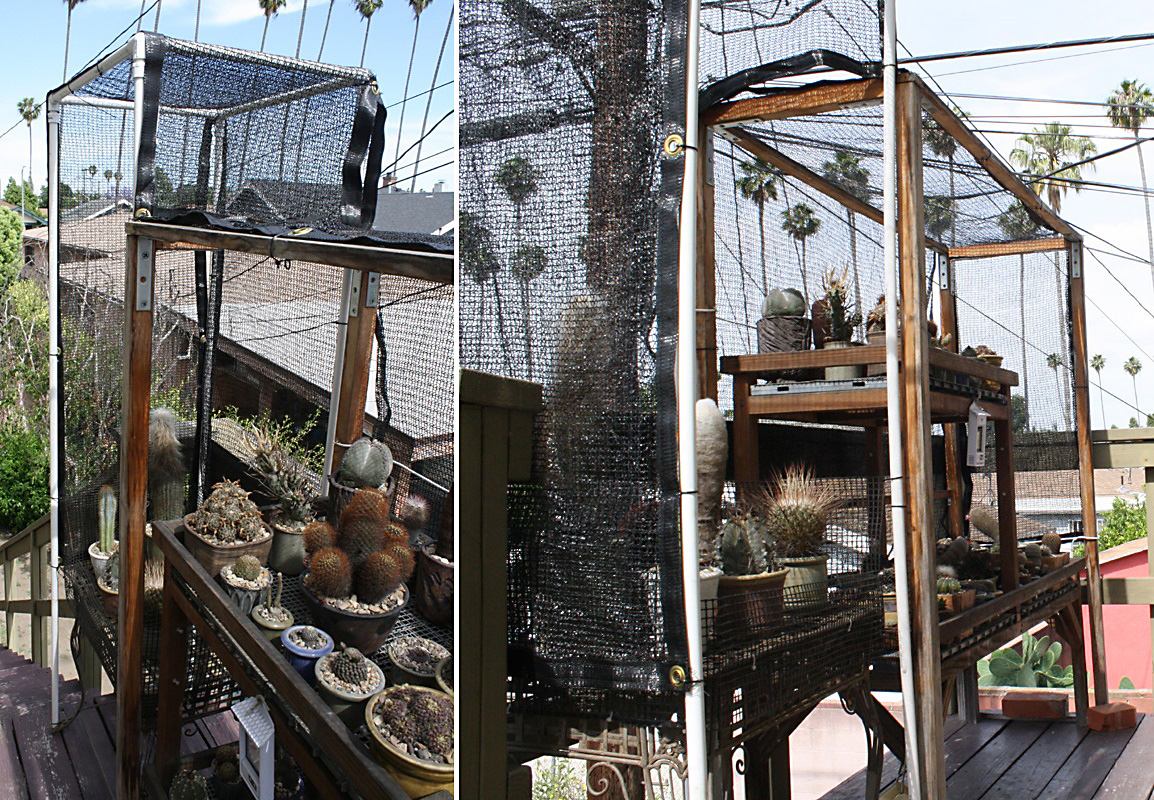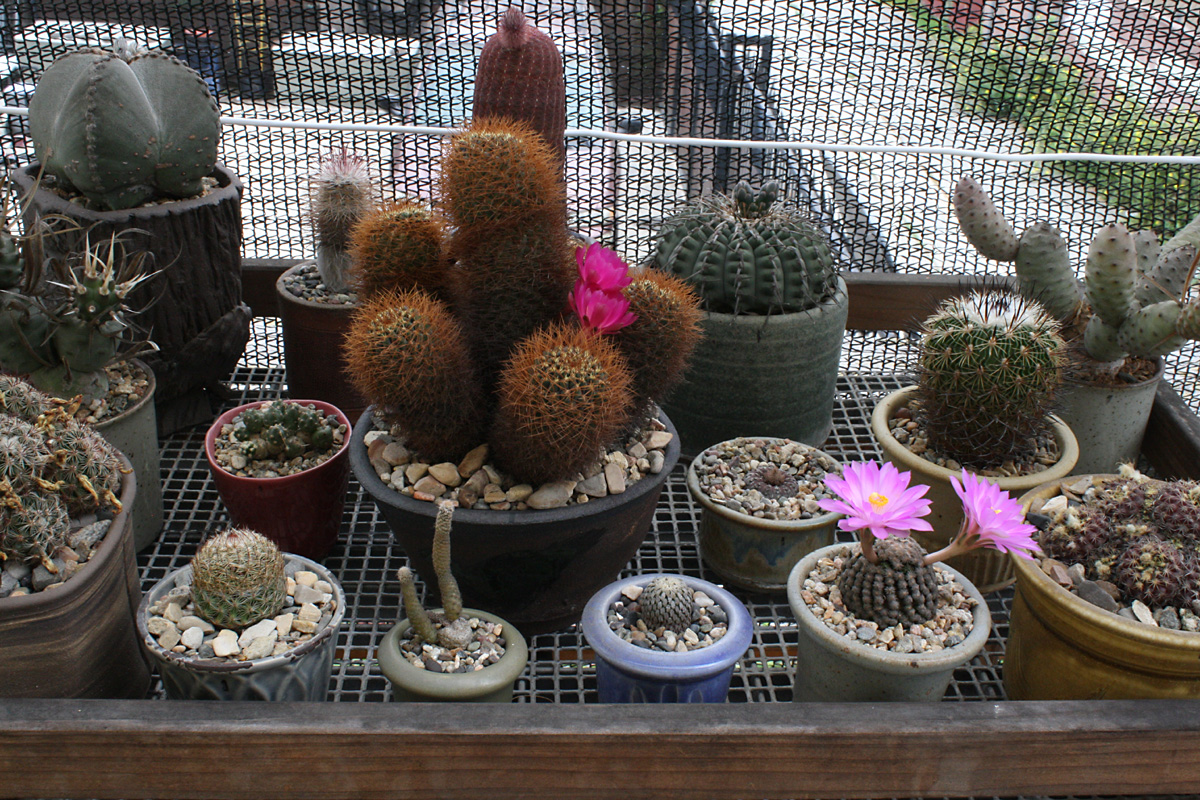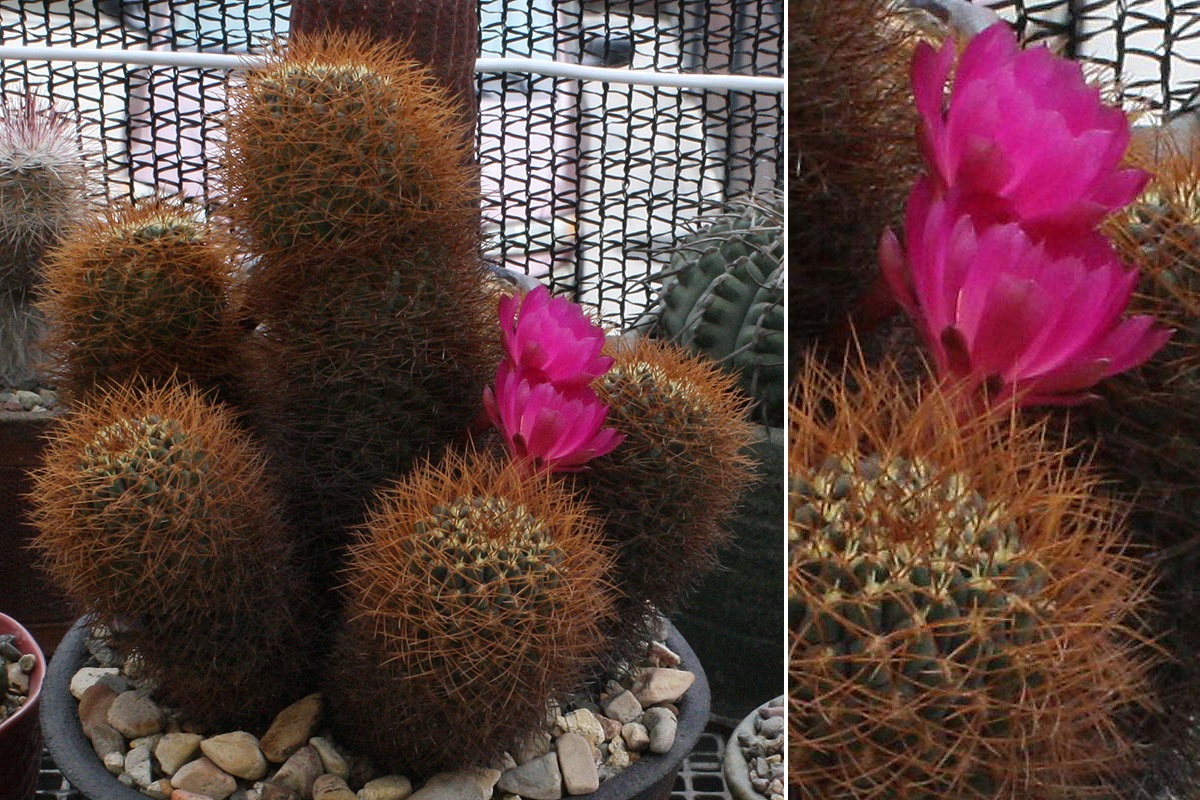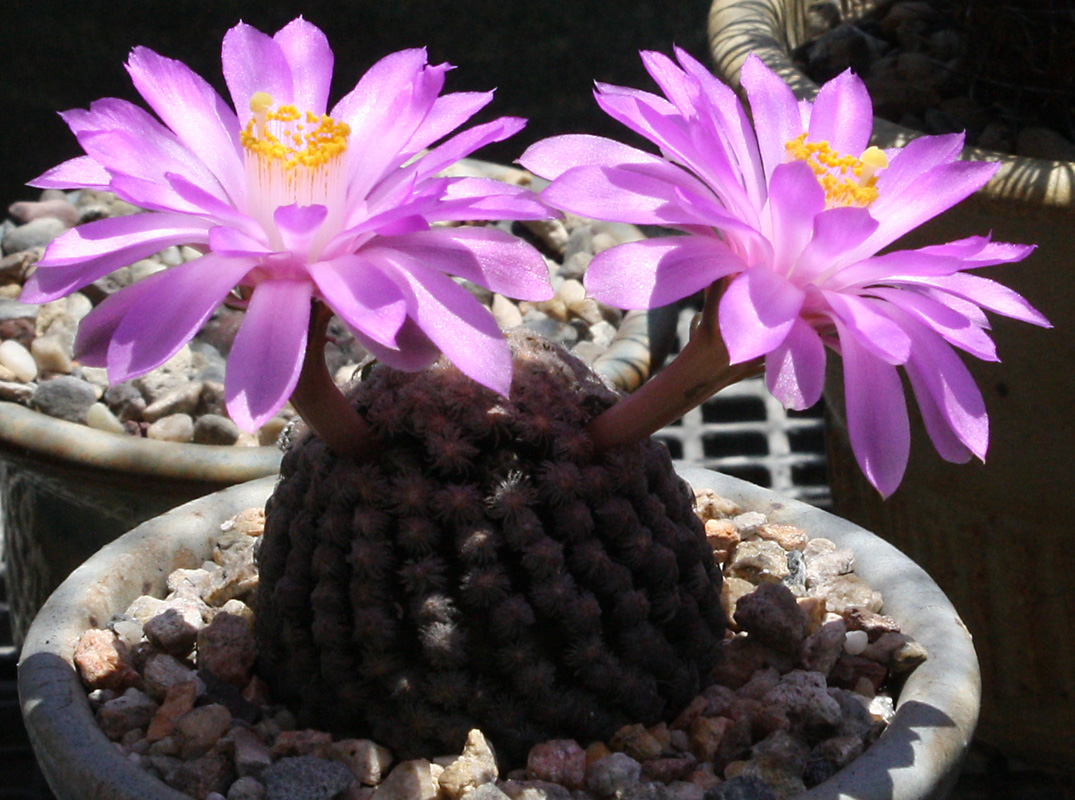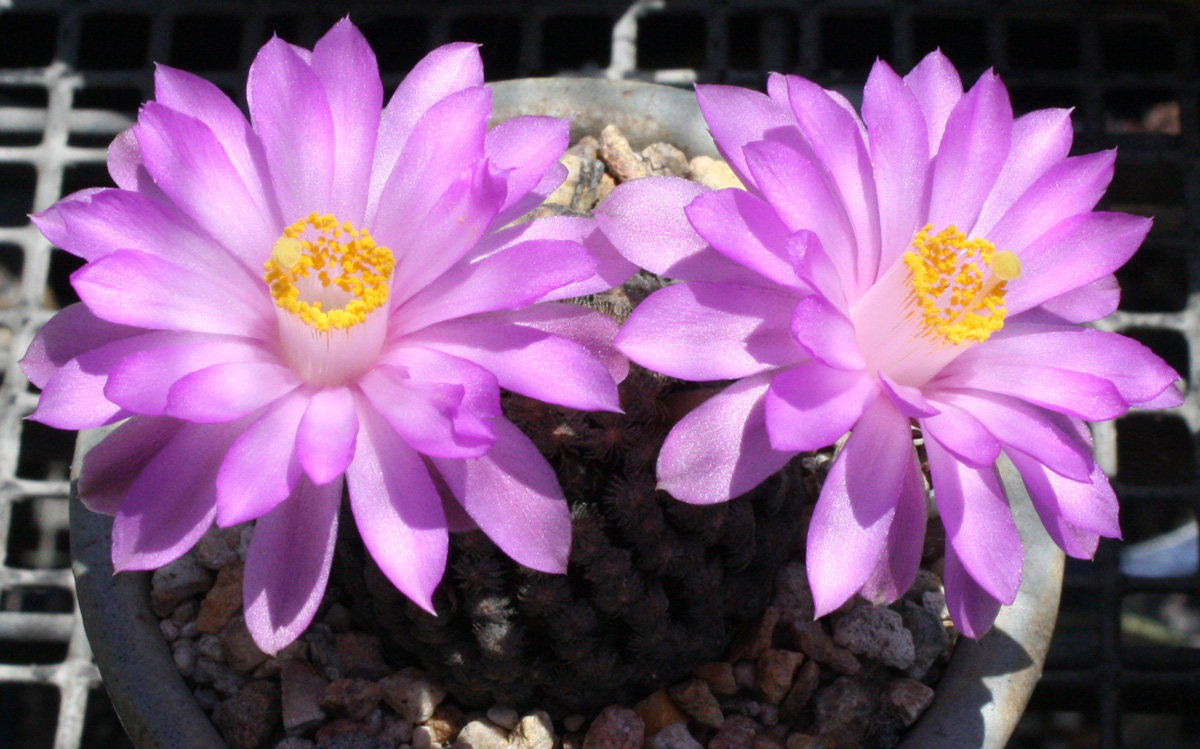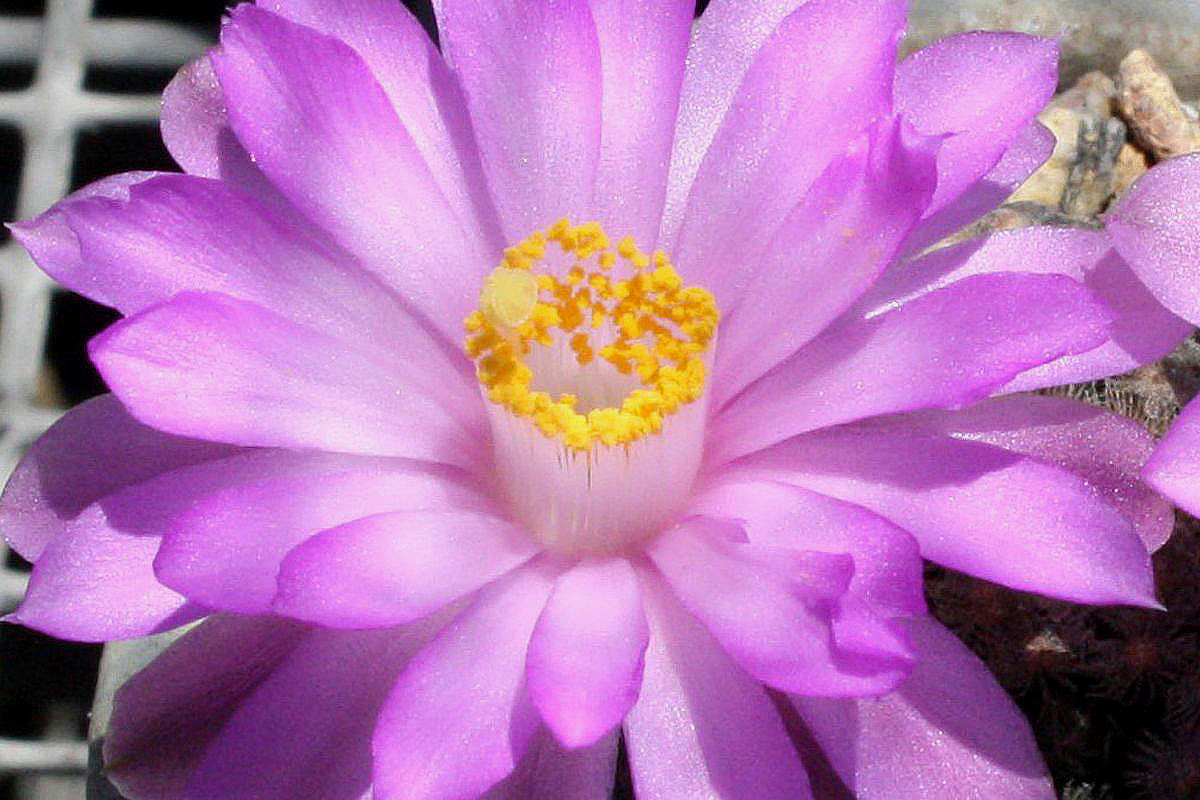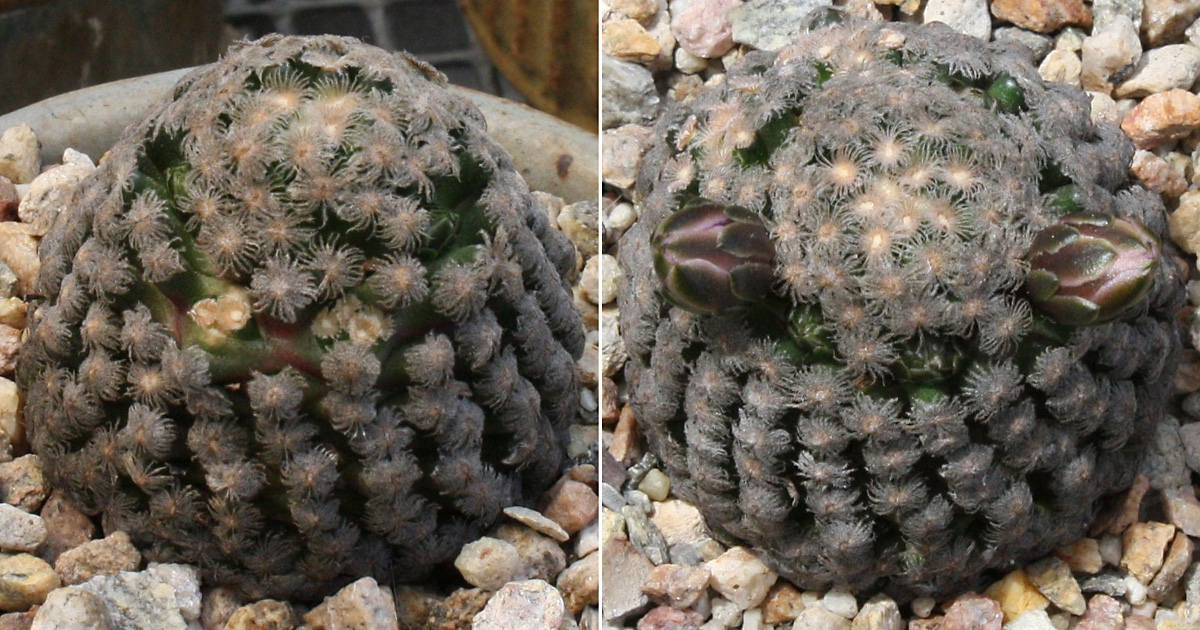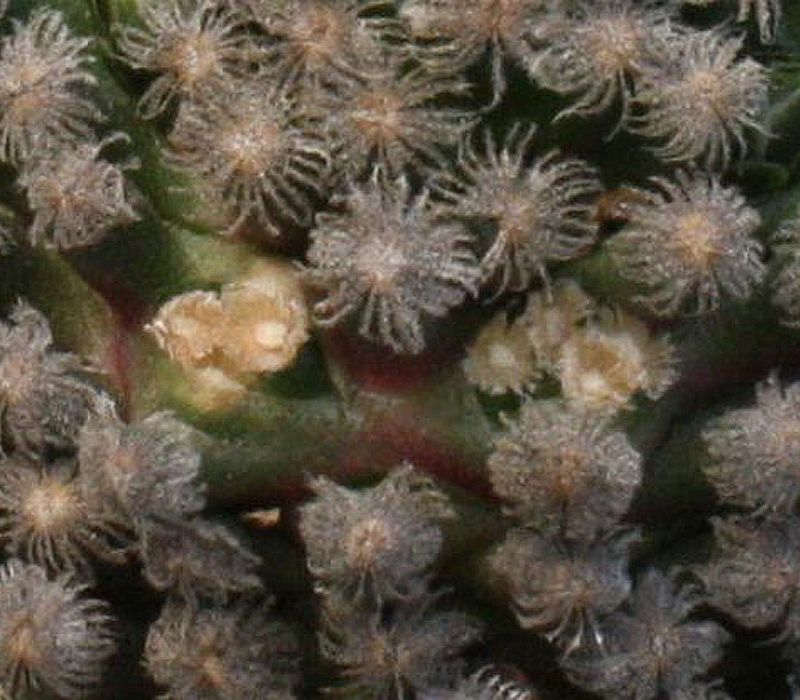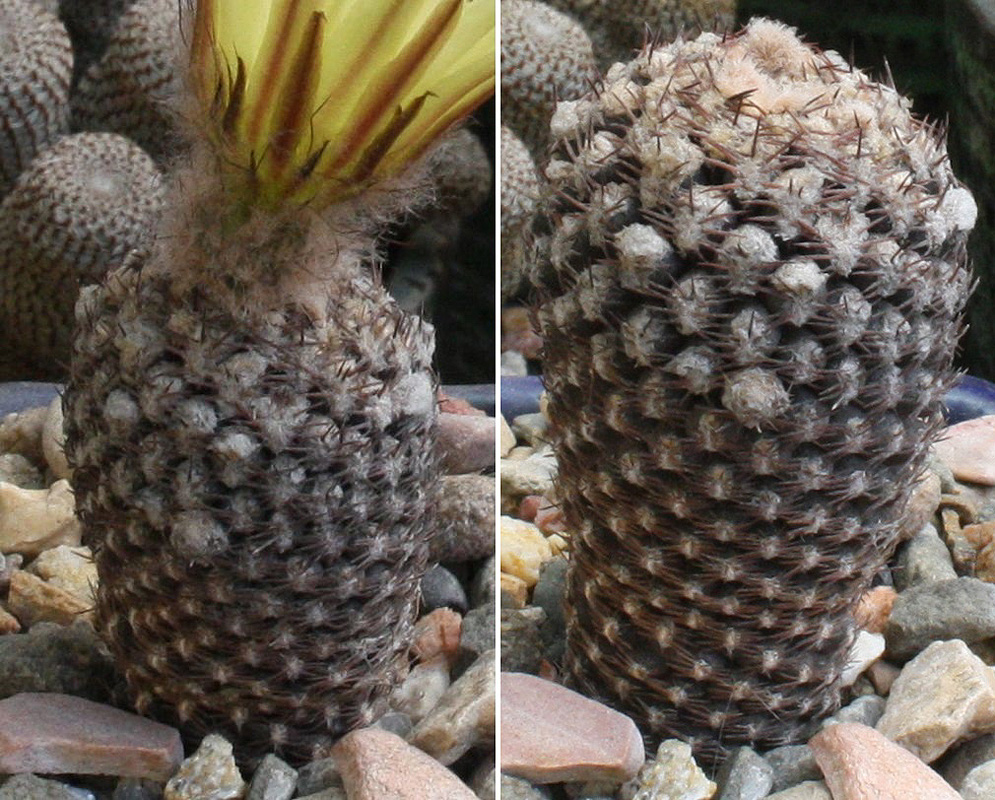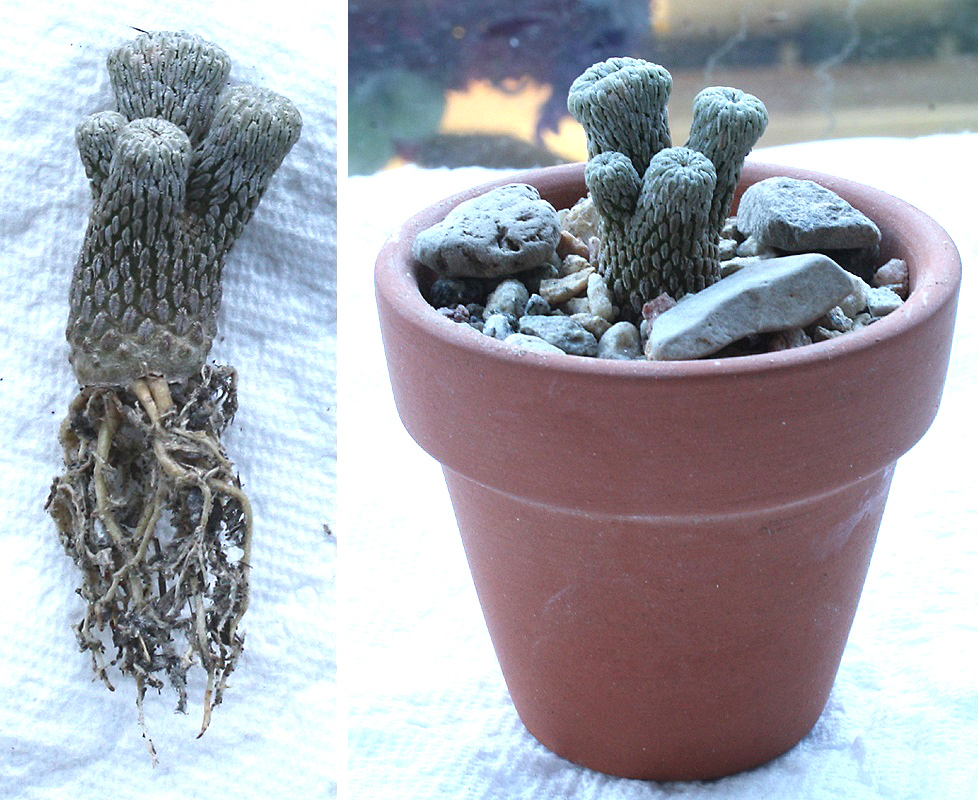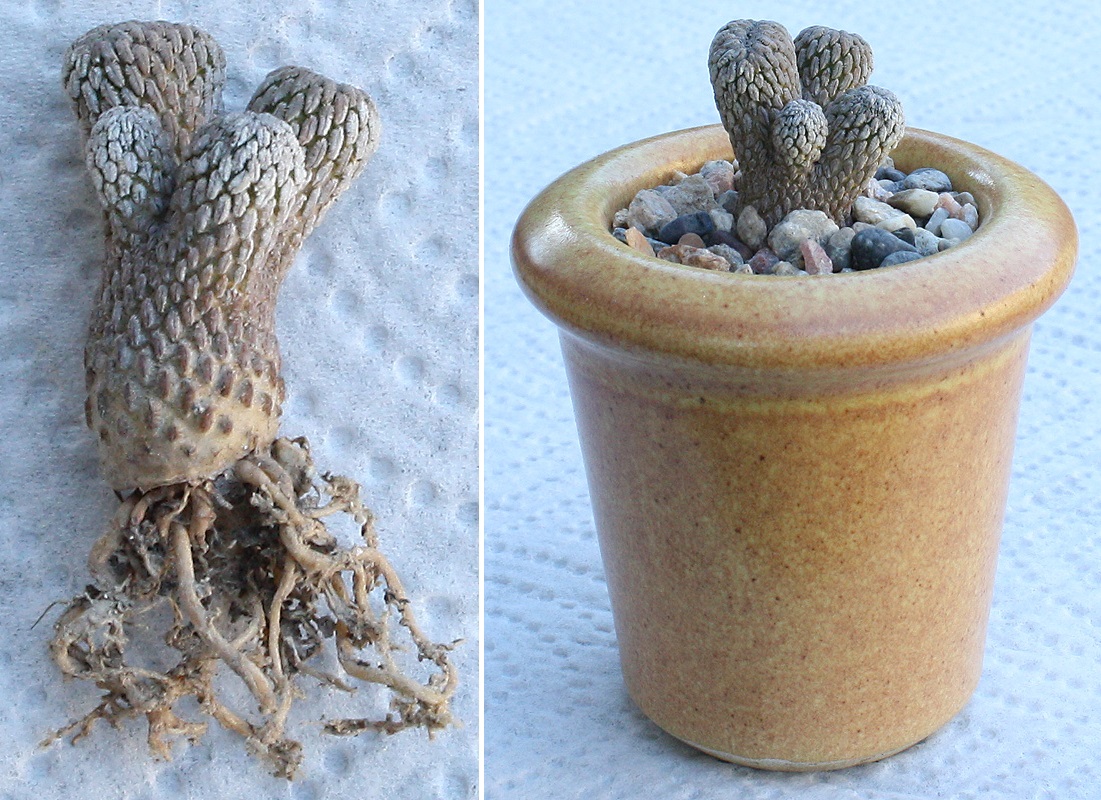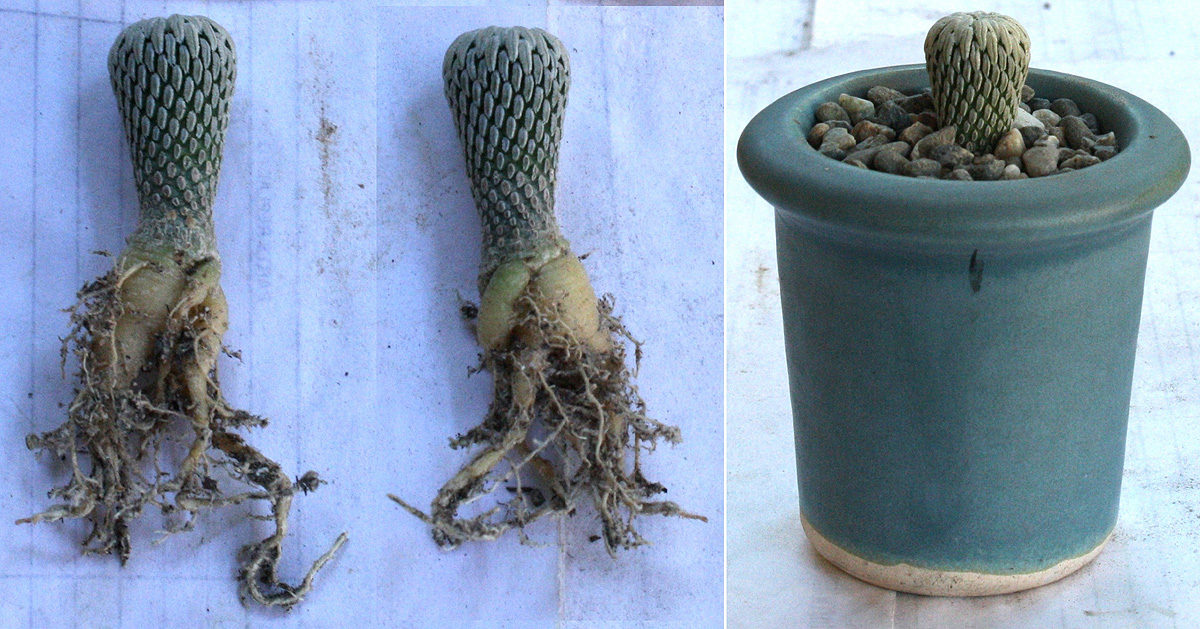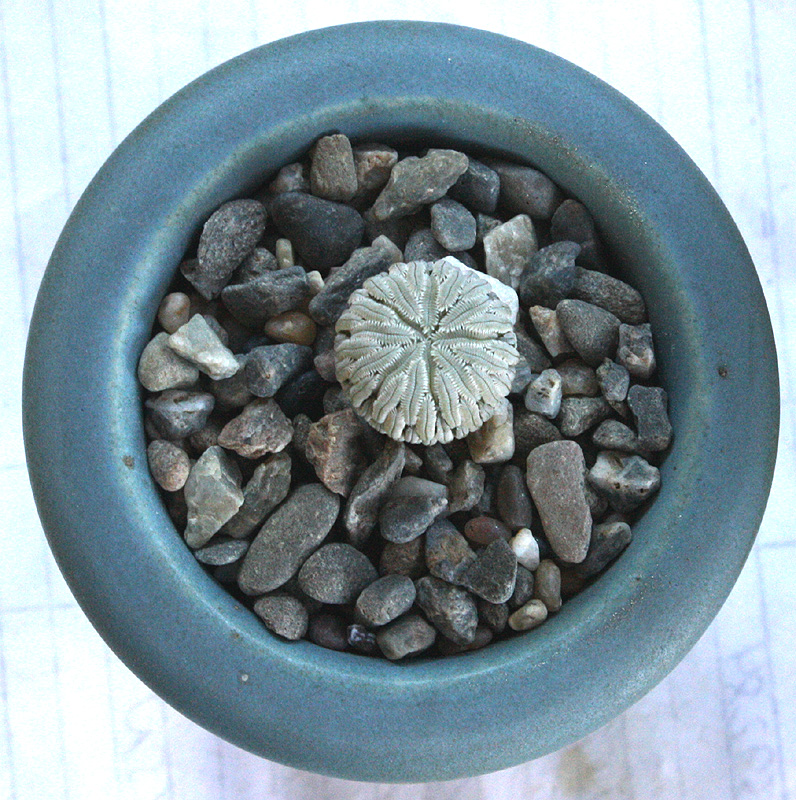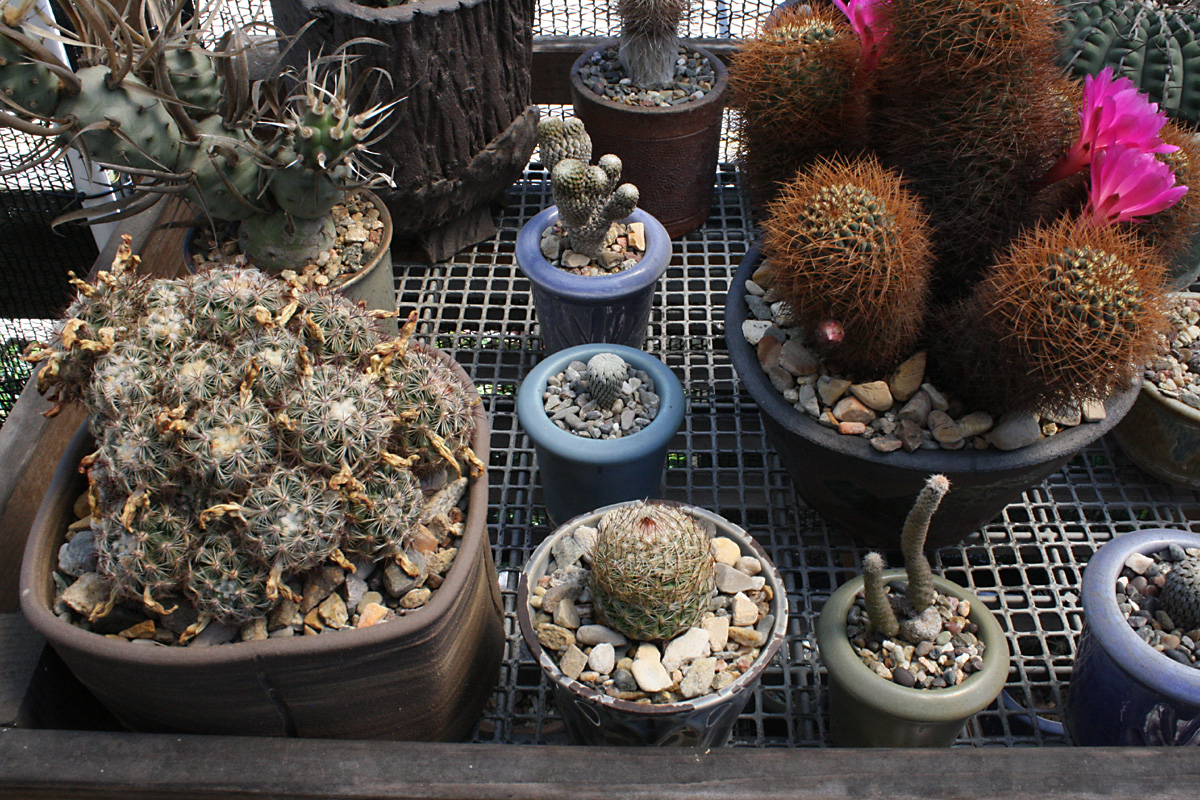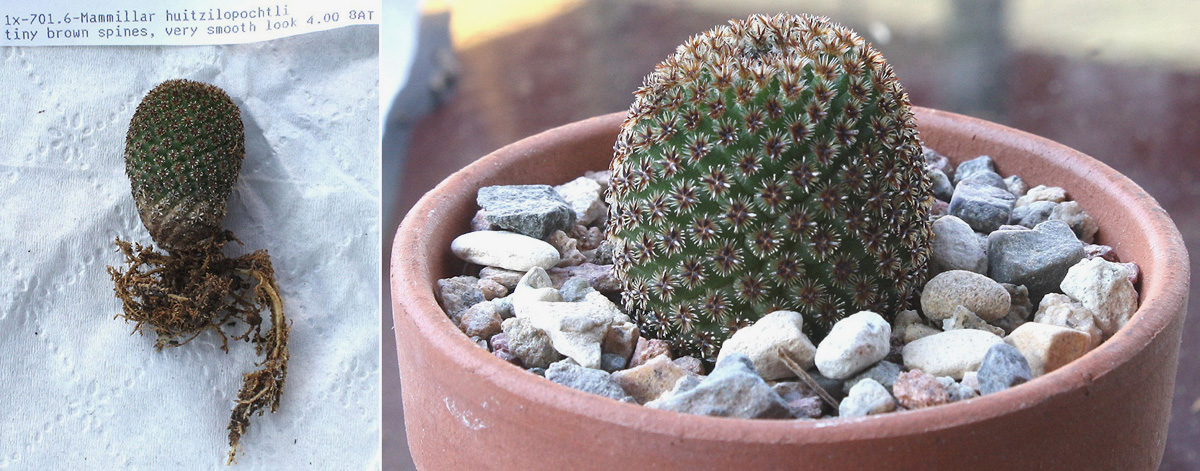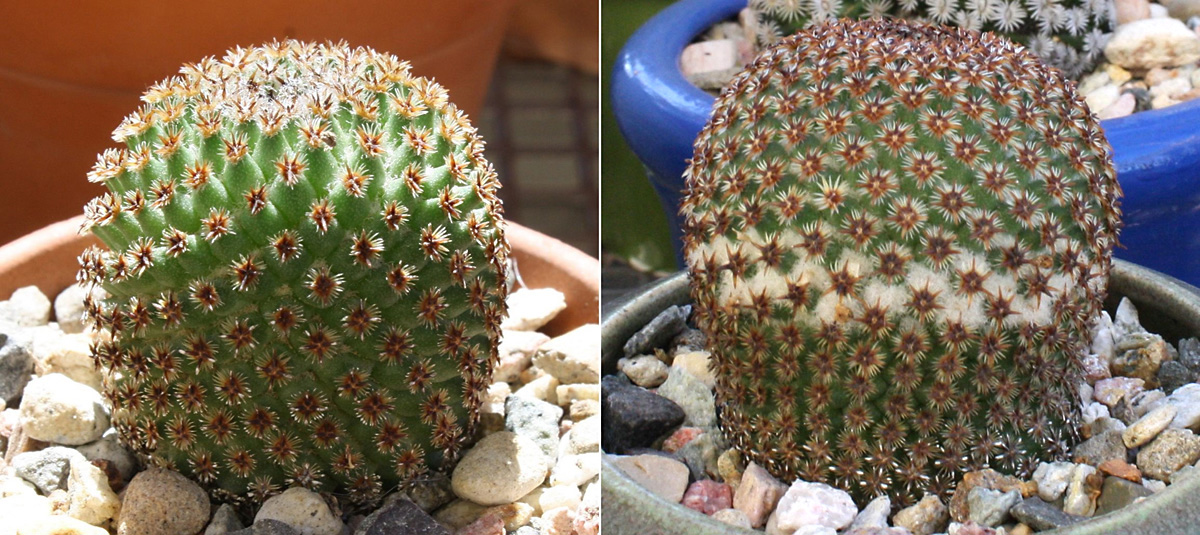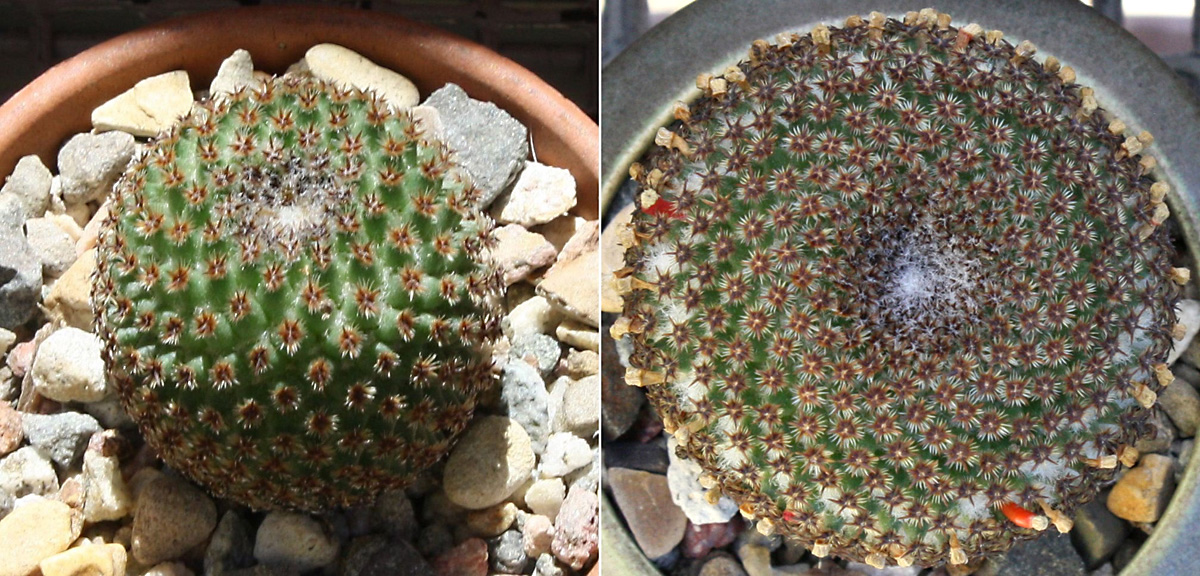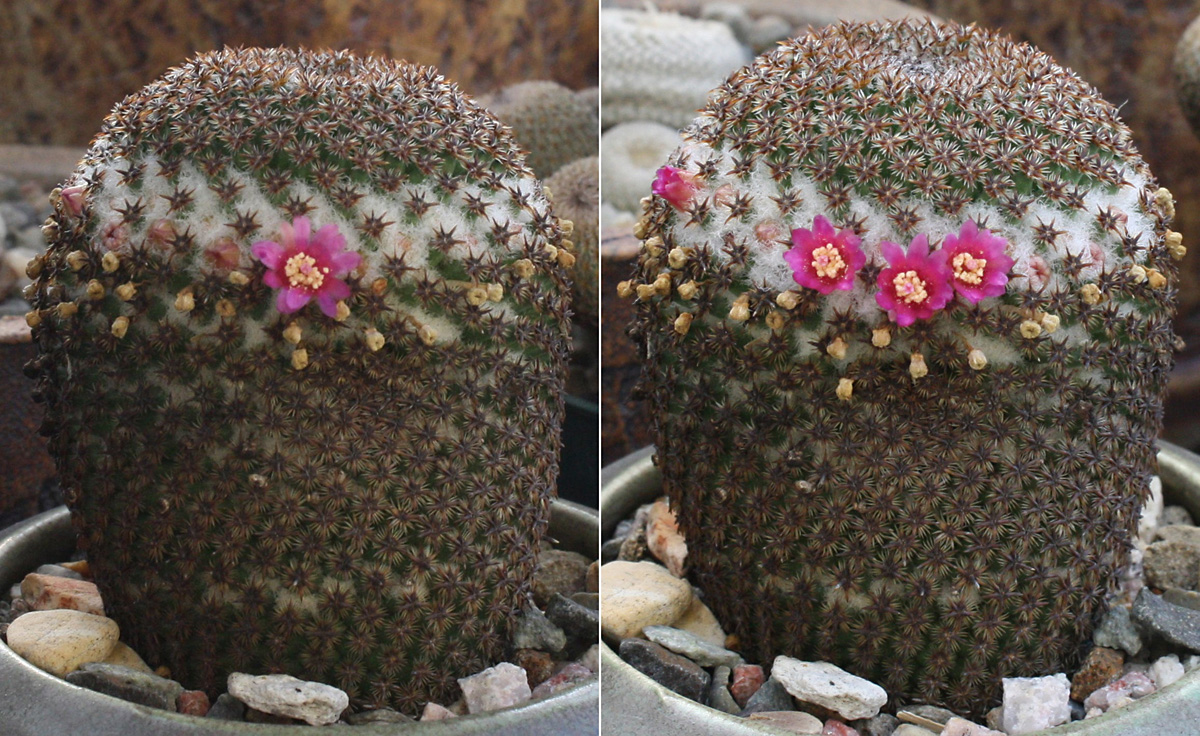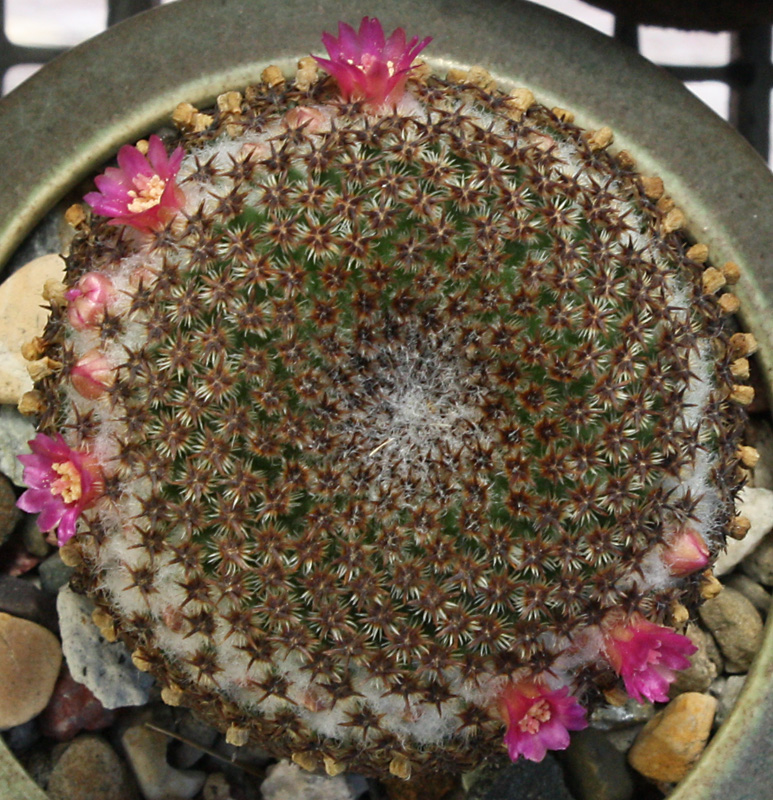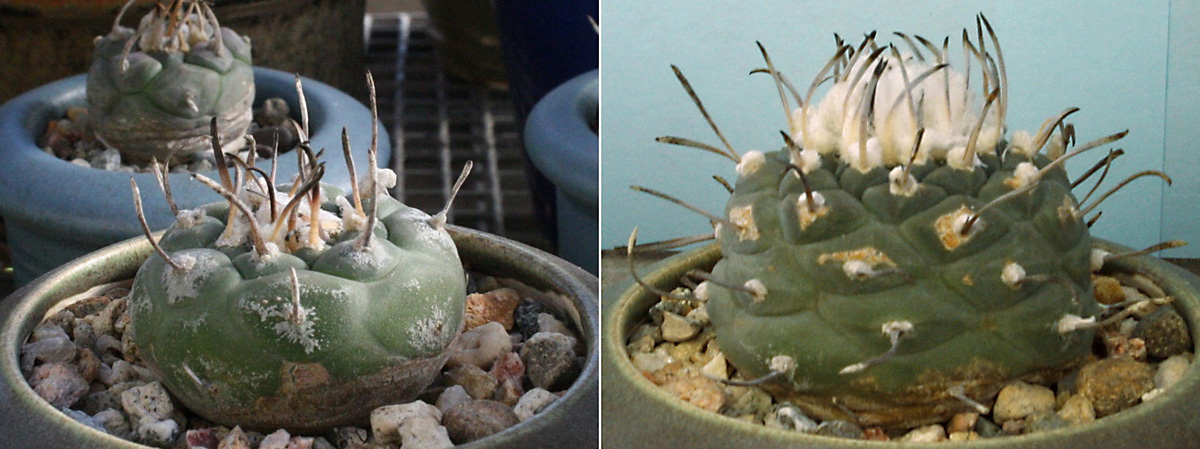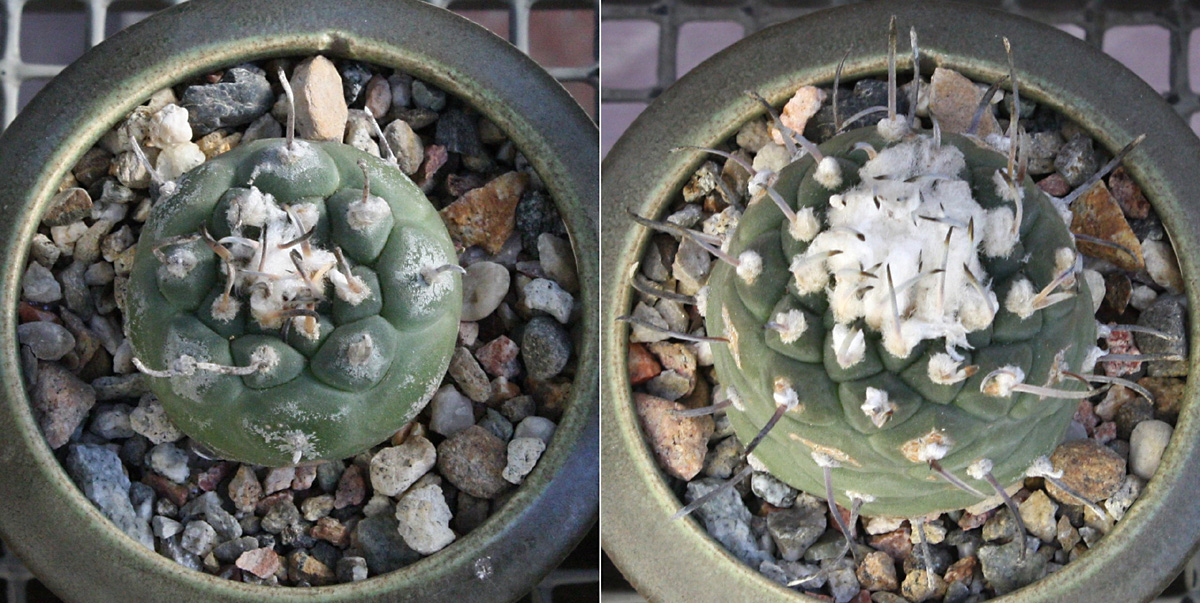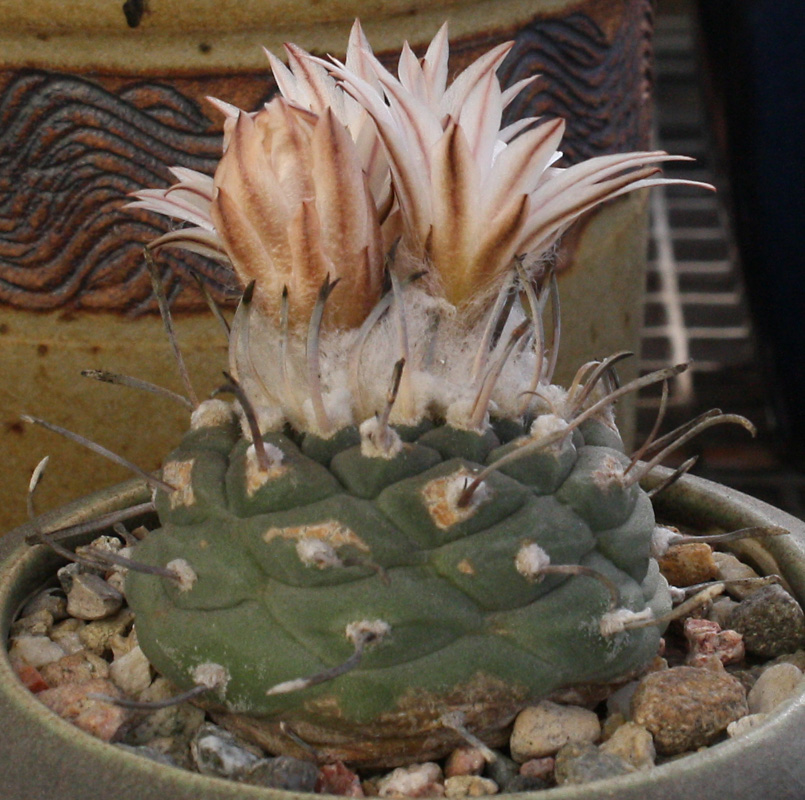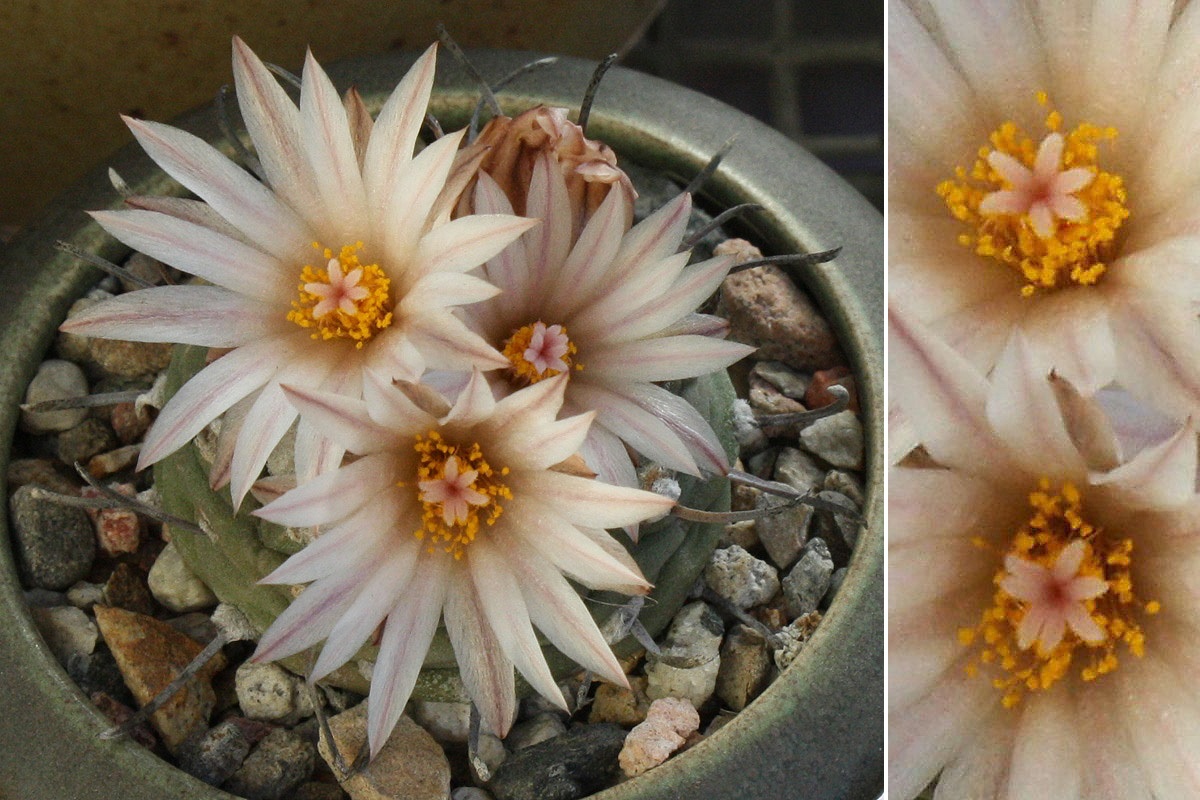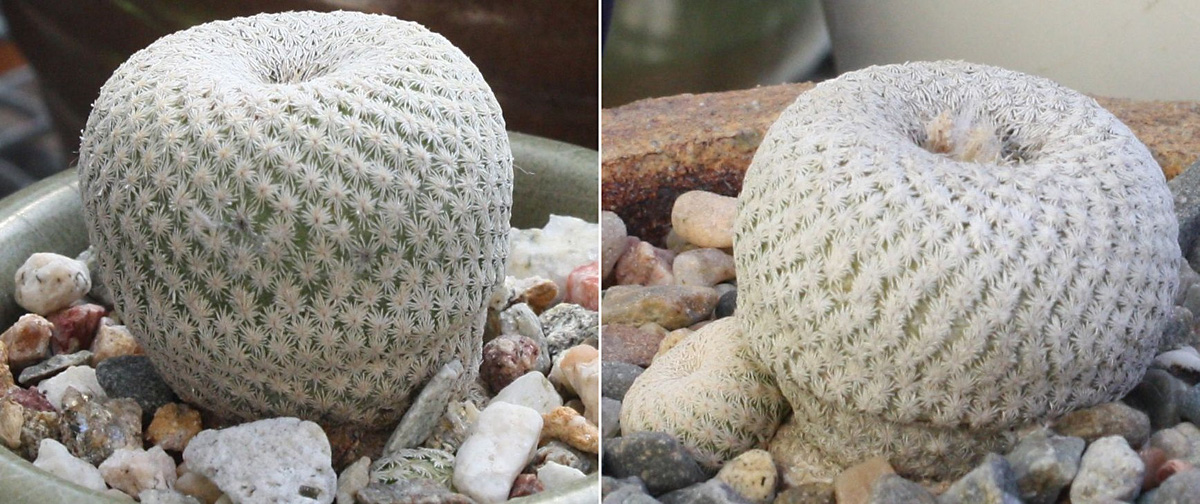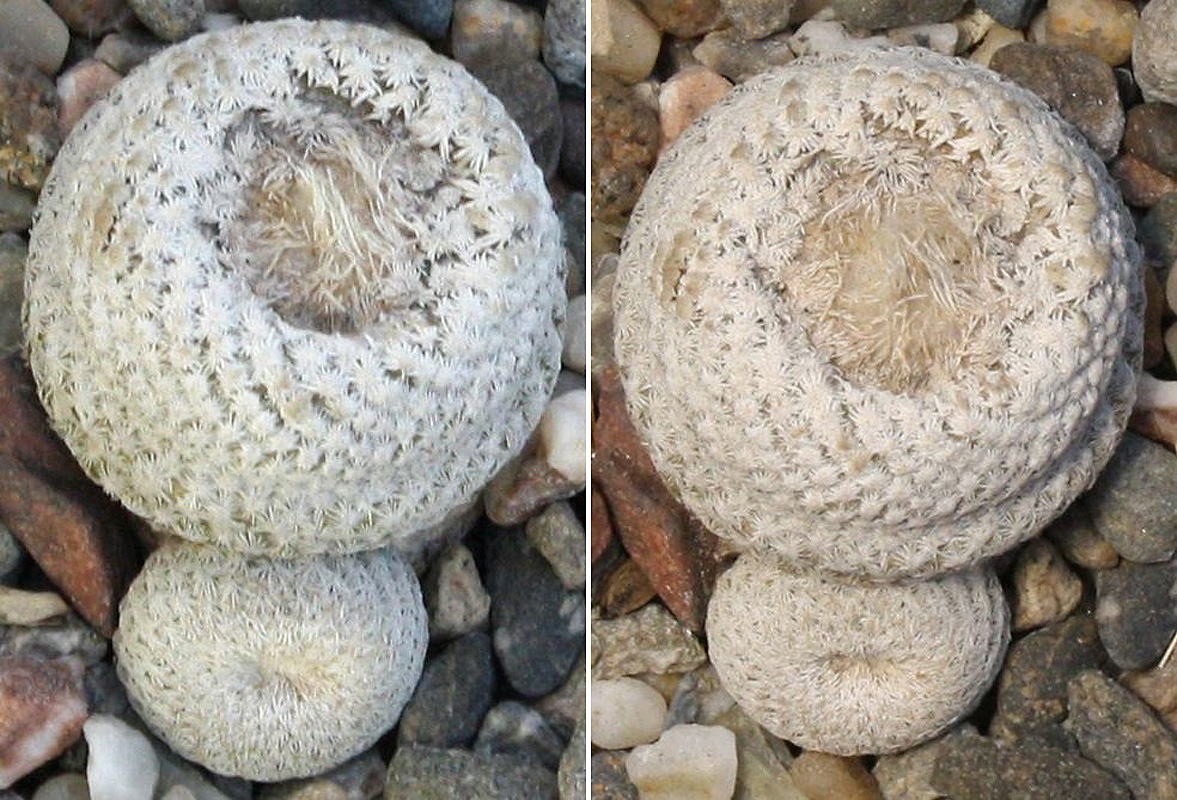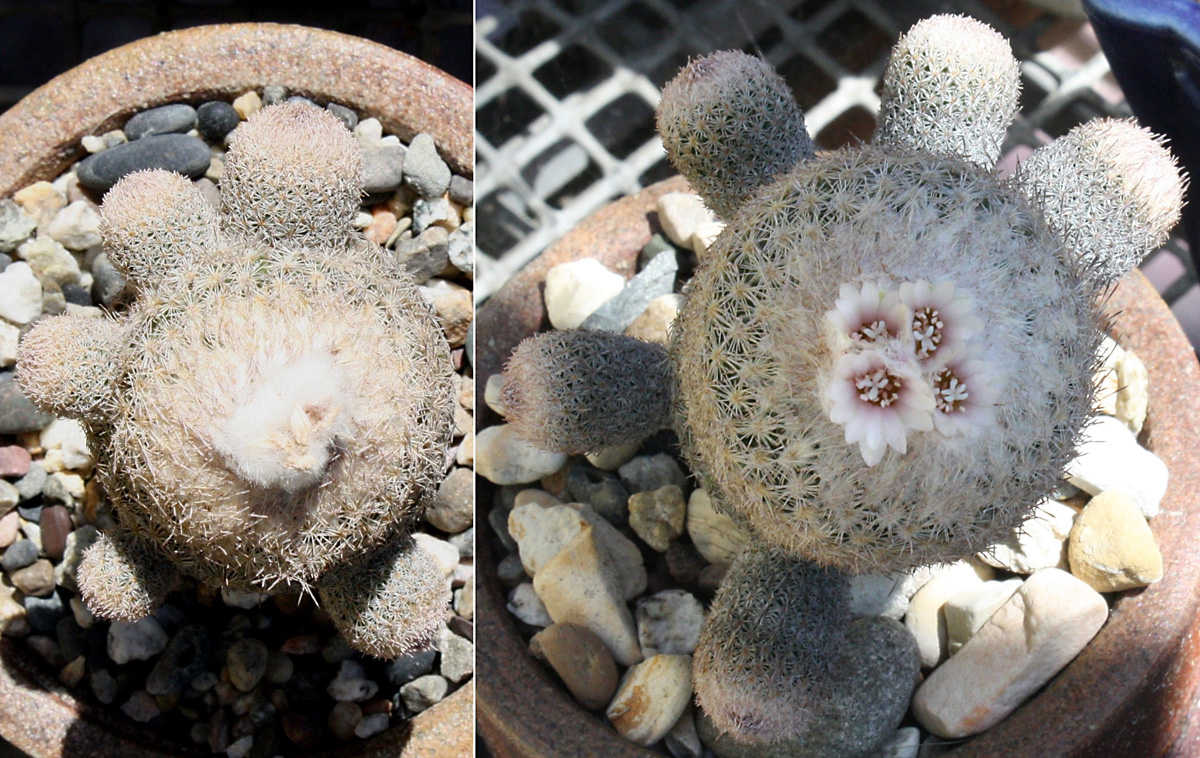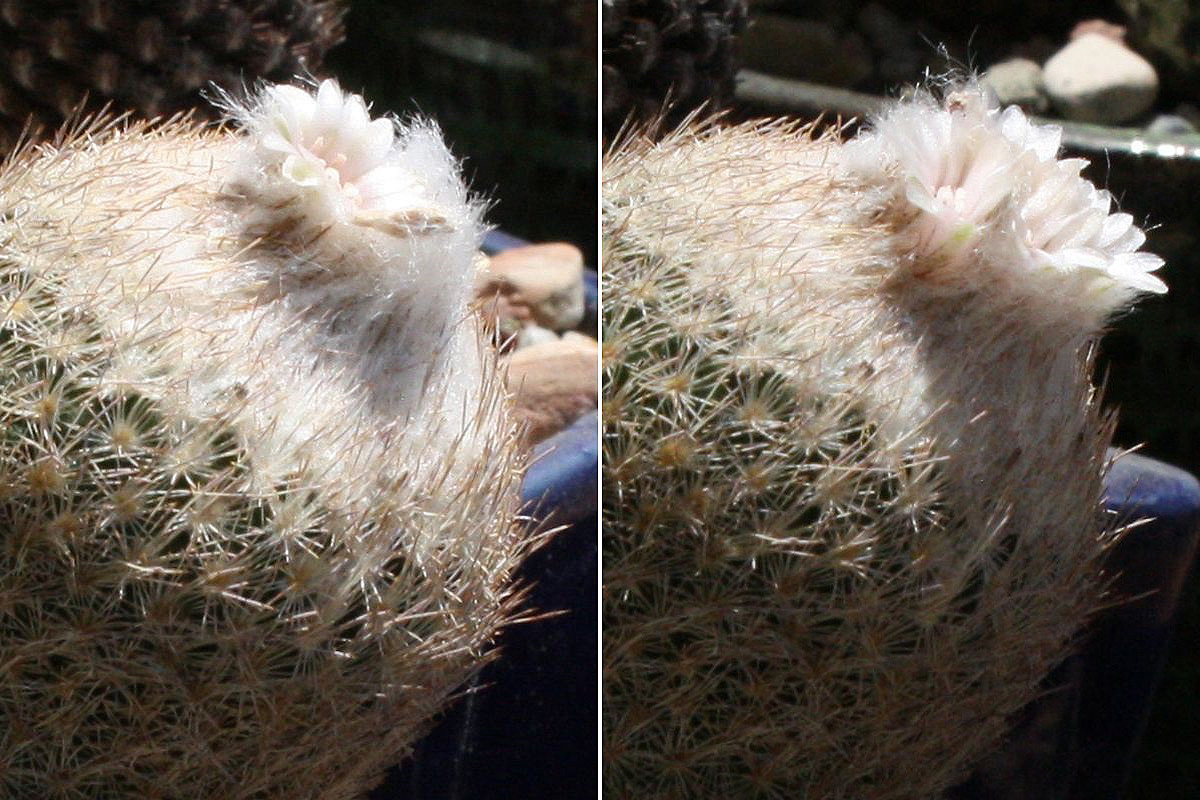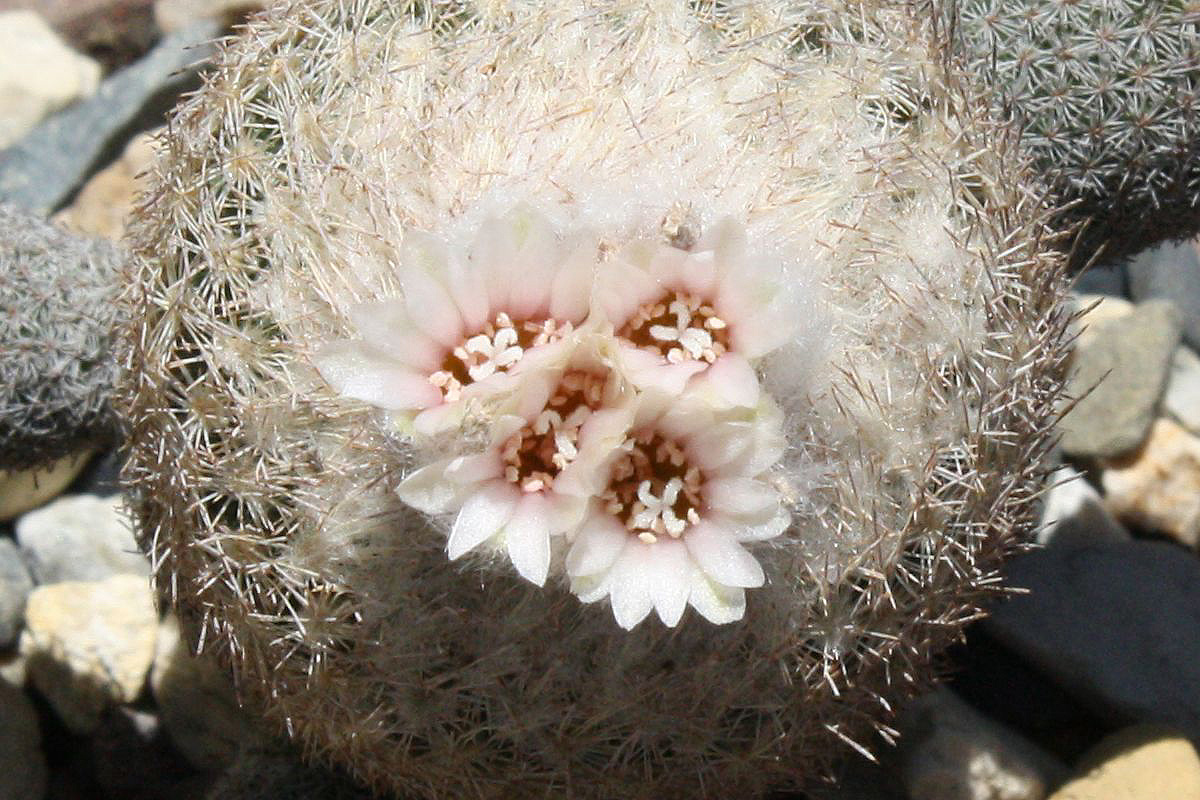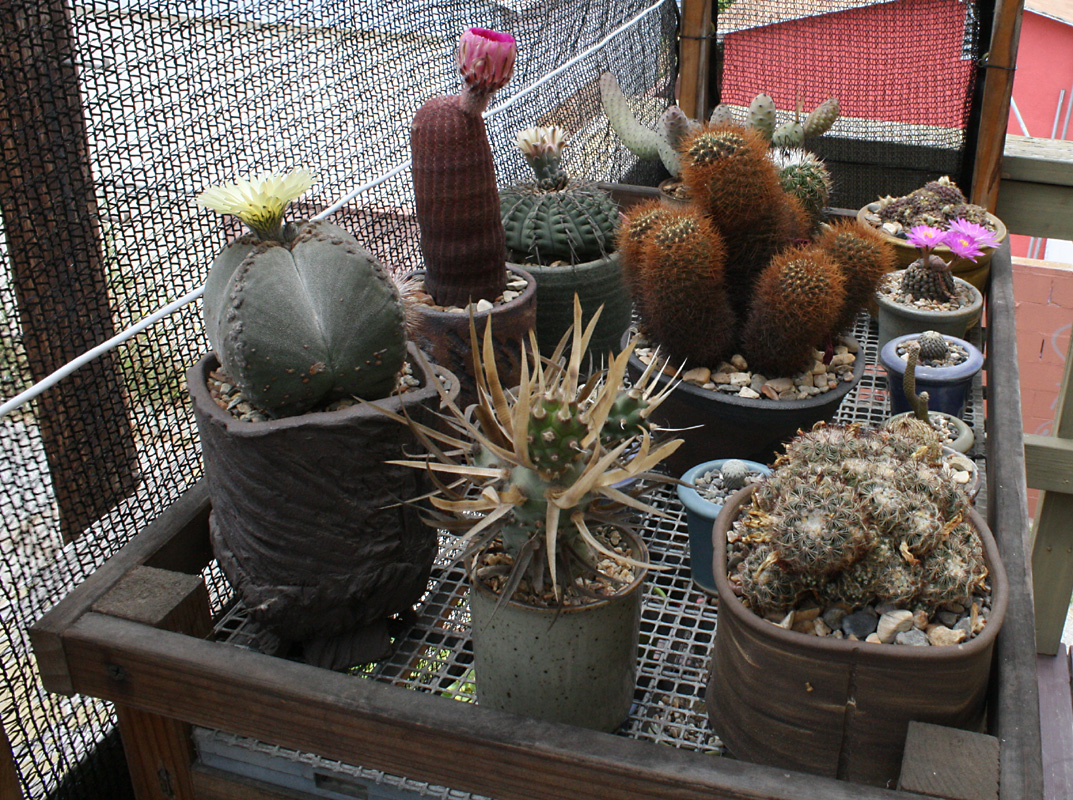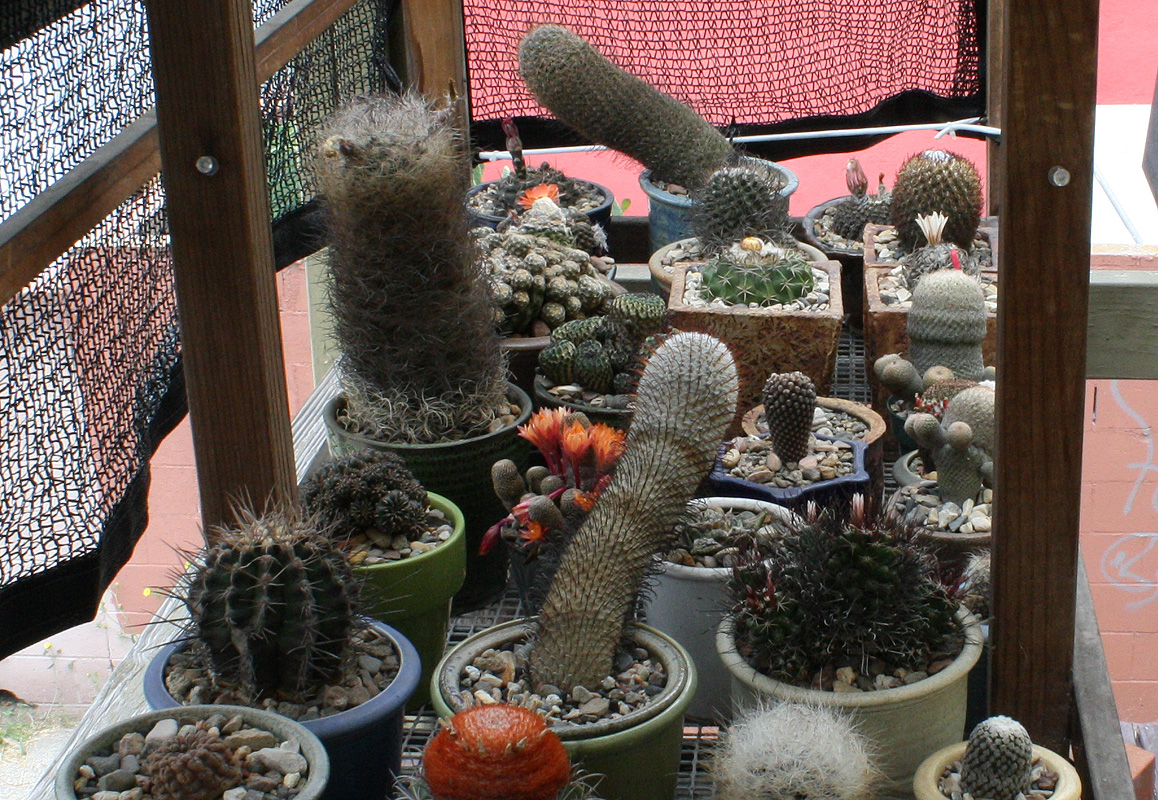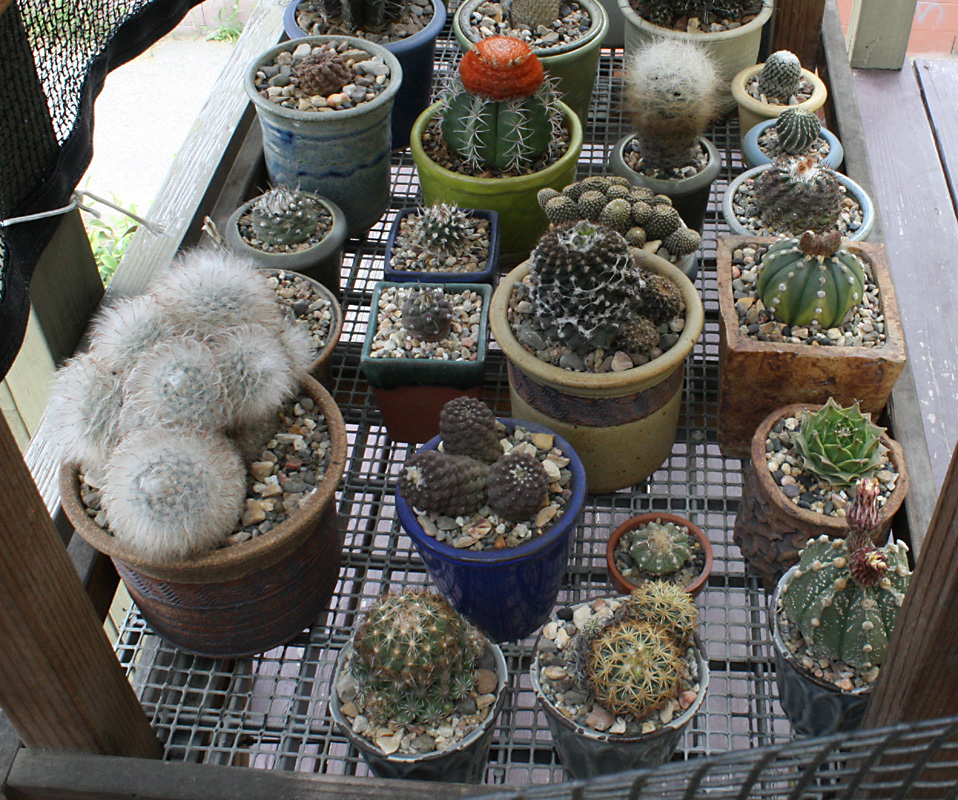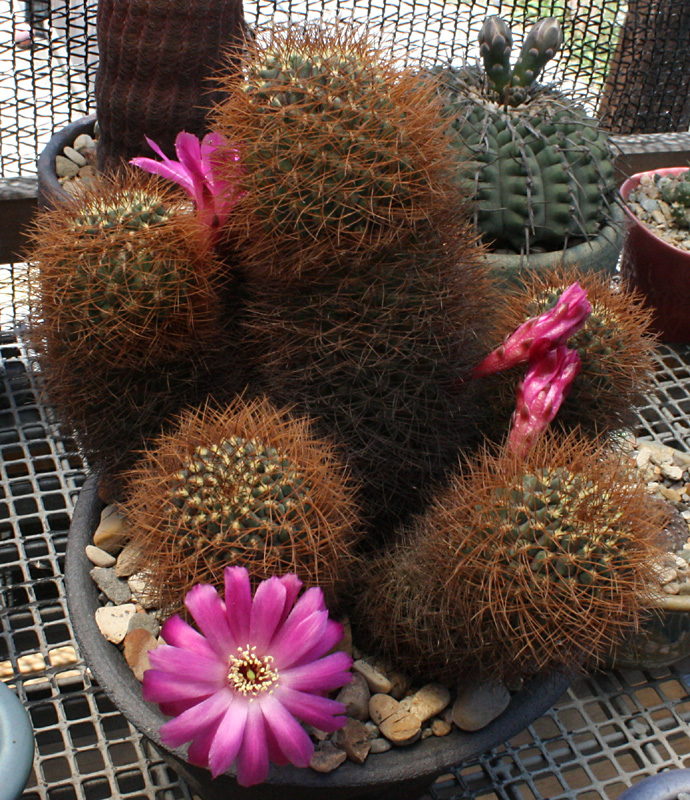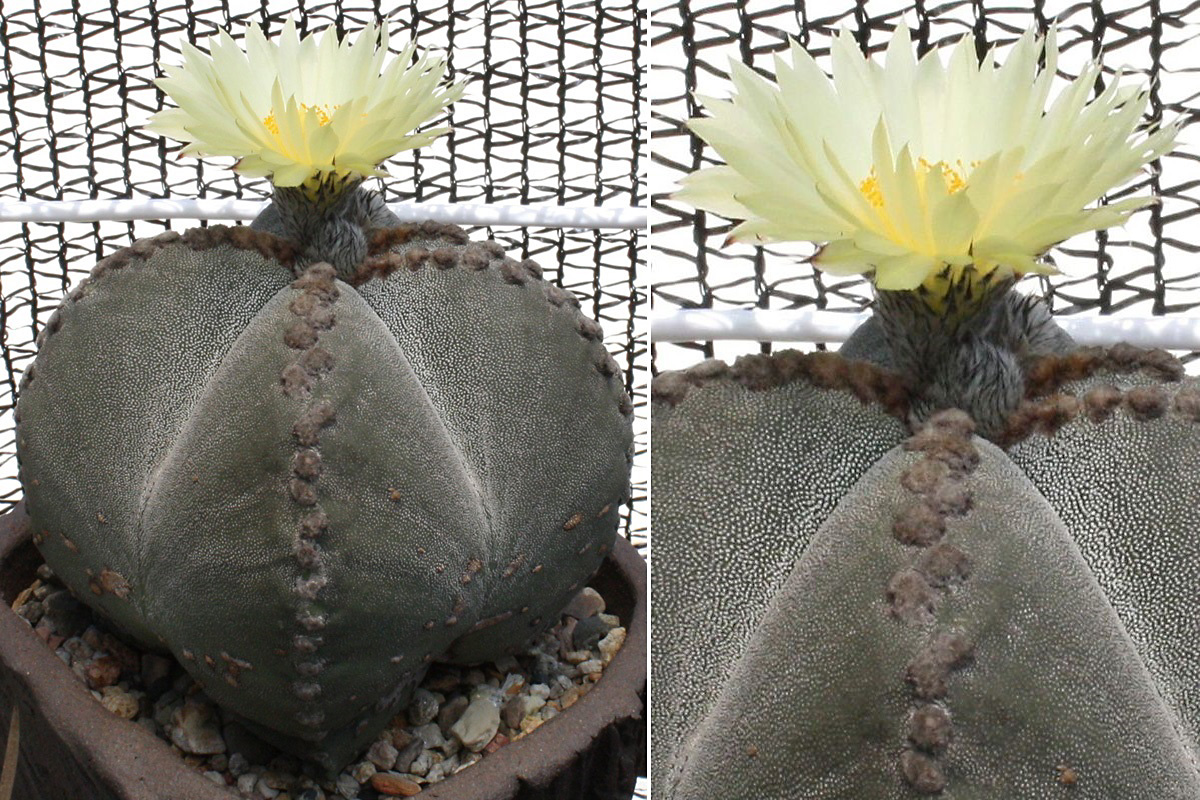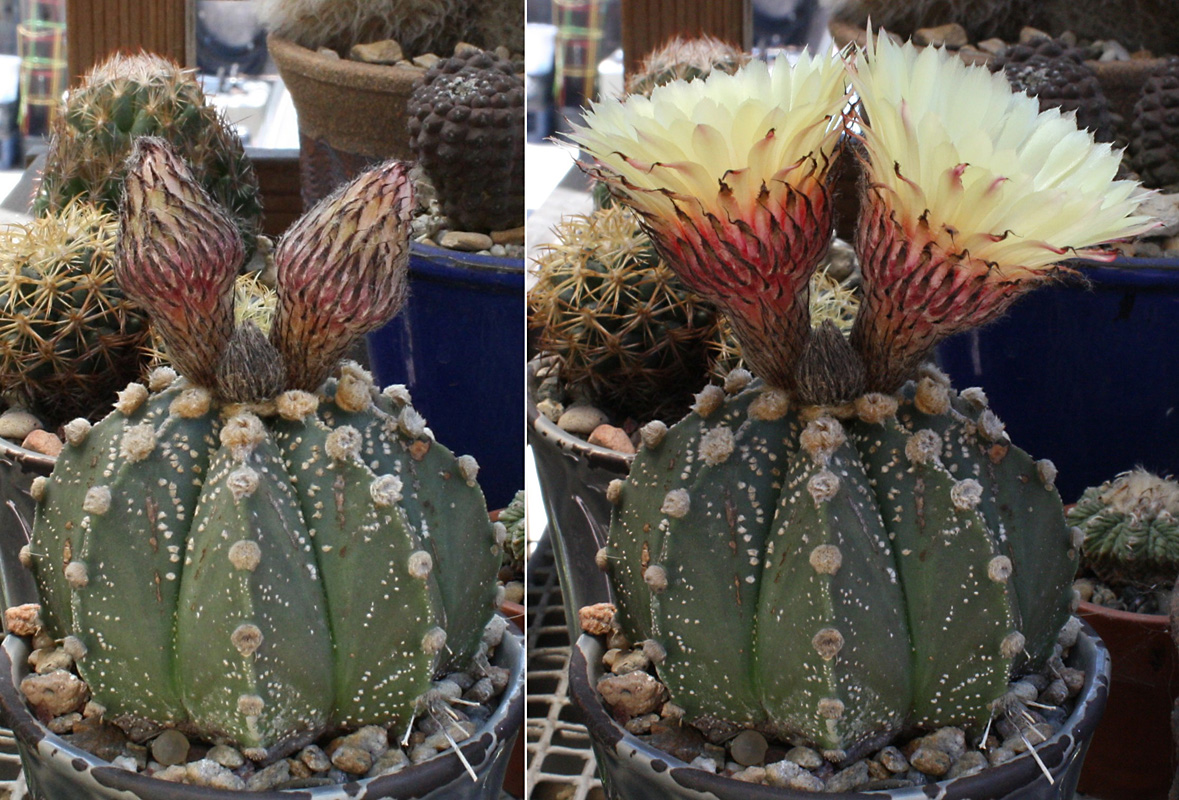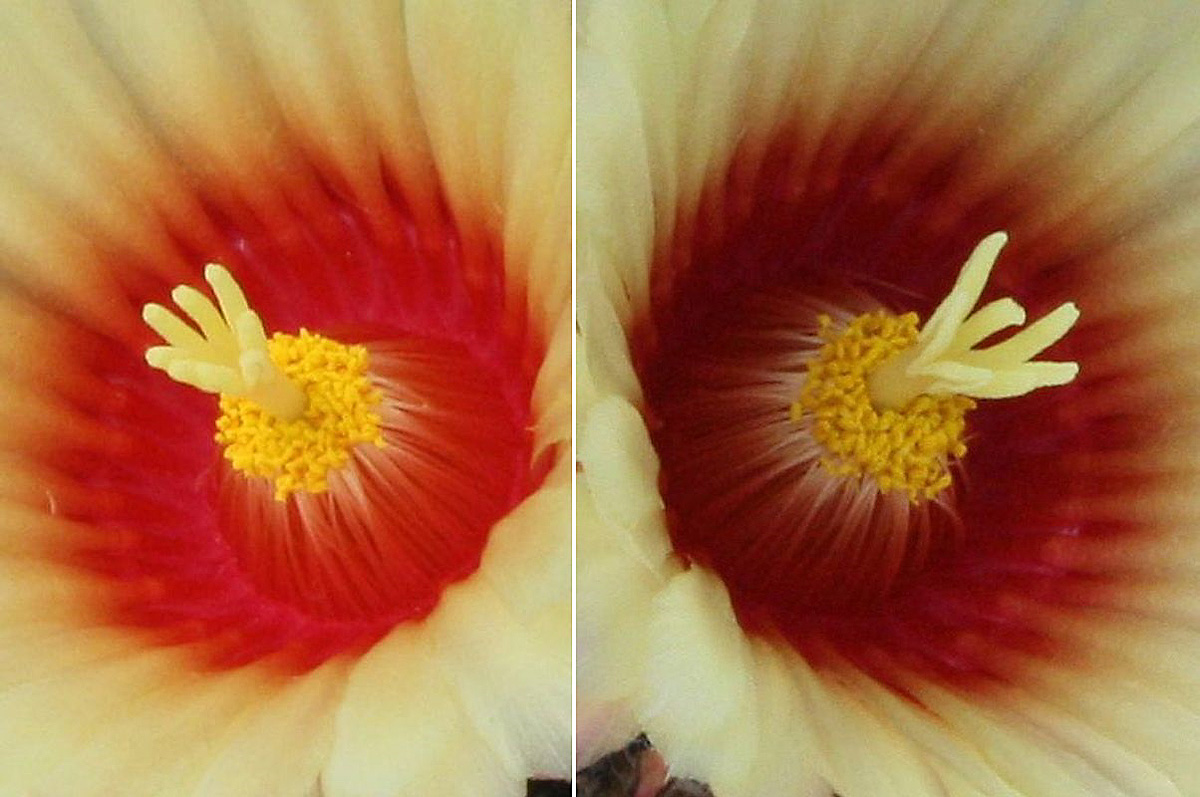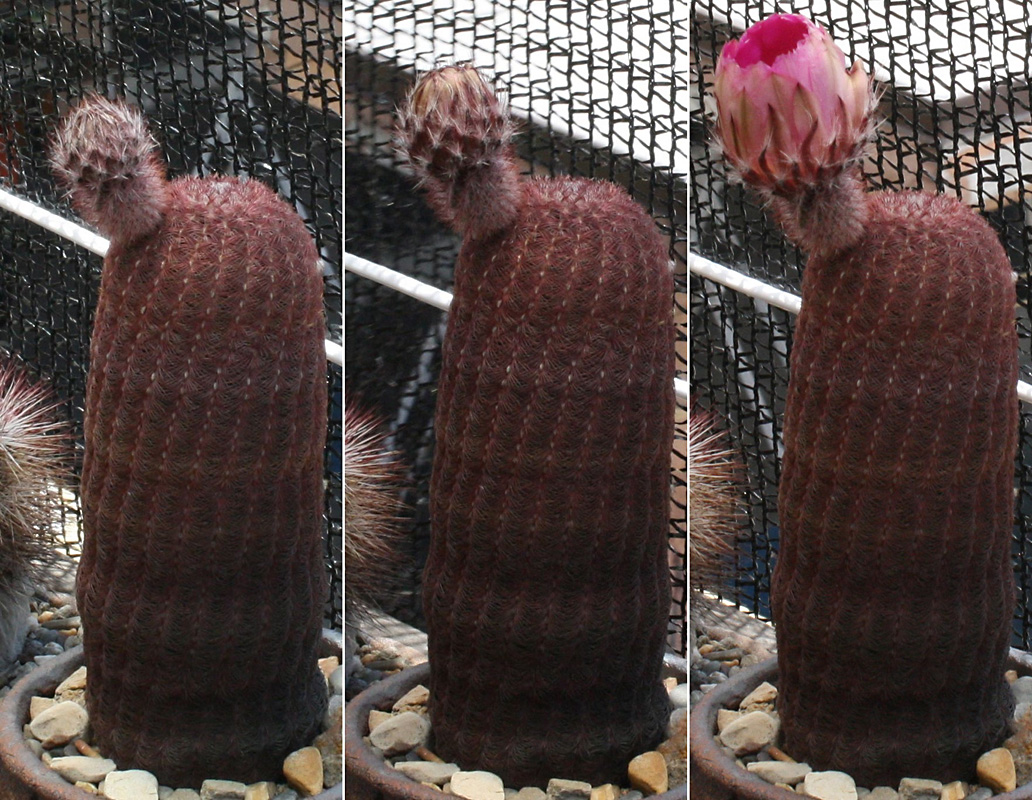2013 was a pretty big year, when my small collection expanded as I installed a new 2-shelf plant bench that June. Plenty of space to fill, so we'll start filling it with...
Another CoronaCactus summer
Wow, 7 months to wrap that review up? Amazing how long it takes to get these things done, although I hope it won't take quite as long to put this one to bed. But I digress...
Anywho, the Ario's first photo on 7/13/13:
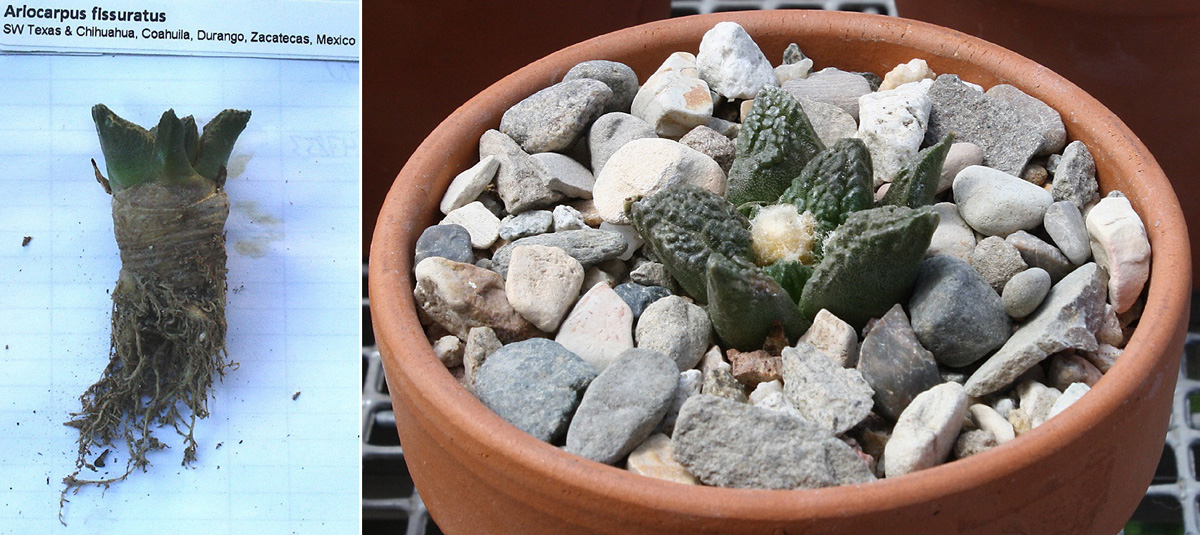
A. fissuratus is a very slow grower, so we'll get to see how slow it is on 10/27/13, 9/19/15, 9/17/17, and 10/13/19:
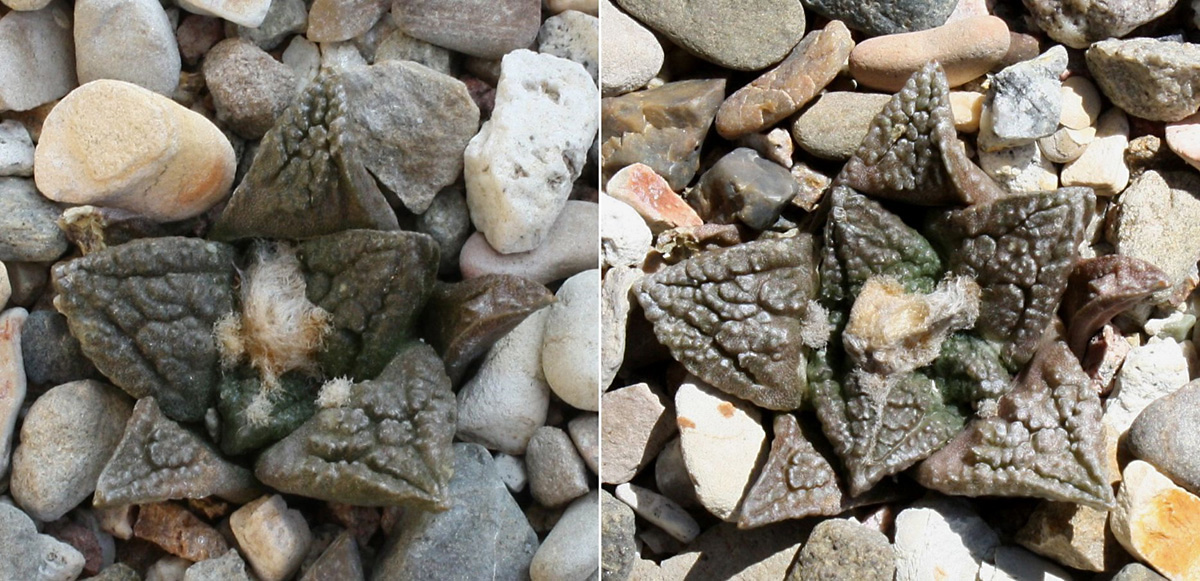

Not bad, actually. However, I made a small boo-boo last year when I forgot that Arios need more water in summer than they do in the spring. Watering every 2 weeks instead of every 10 days last summer, so the plant didn't grow as much as it could've. With another summer beginning in a couple of months, I won't forget this time.
First photo on 7/13/13:

The move from "dirty" mineral mix to a new and deeper pot with clean mix on 5/9/15:

The glabrescens is an "earth cactus"
par excellence with most of the plant growing below-ground, so that deep pot is perfect for the roots. Now we'll follow up on what I posted in the 2018 review...
The plant on 10/7/18 and 10/13/19:
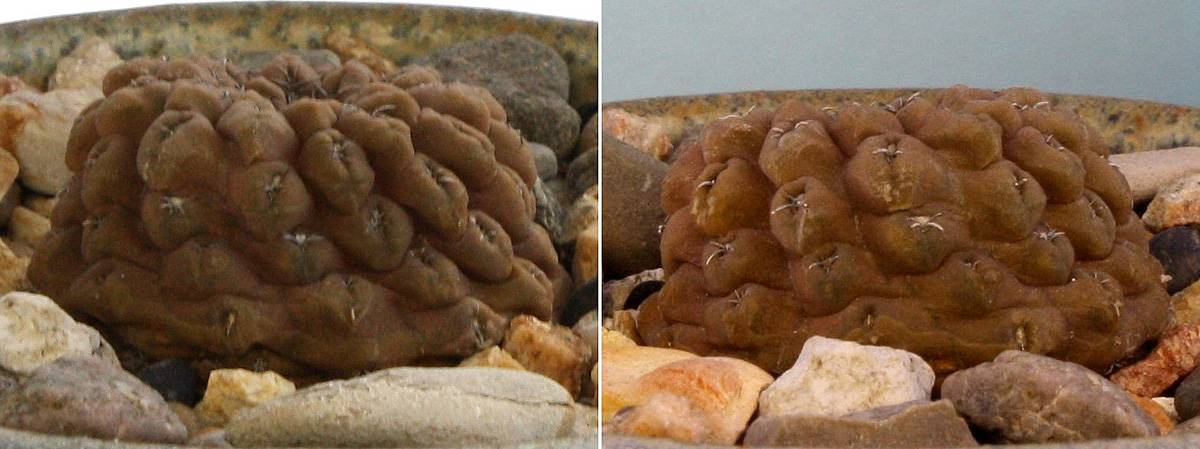
In both of these side shots, the tubercles are nice and plump, so we know that the roots are alive and taking up water. Not sure if there's any growth above-ground, so let's try a view from above with the same dates:
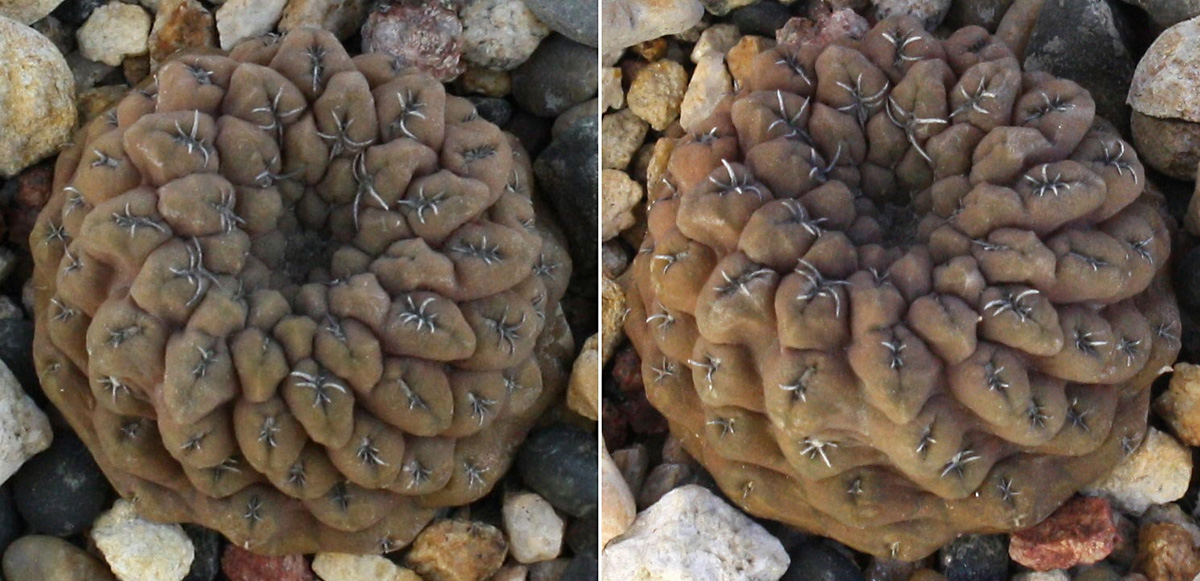
If you're like "Mr. OCD" and your powers of observation are keen, you'll notice that the glabrescens is indeed growing just a little bit. Comparing notes with what I said in the 2018 review, any thoughts I had about giving it to Desert Creations are gone -- yeah, I'll keep it.
Item #3 coming out of the CoronaCactus Nursery box:
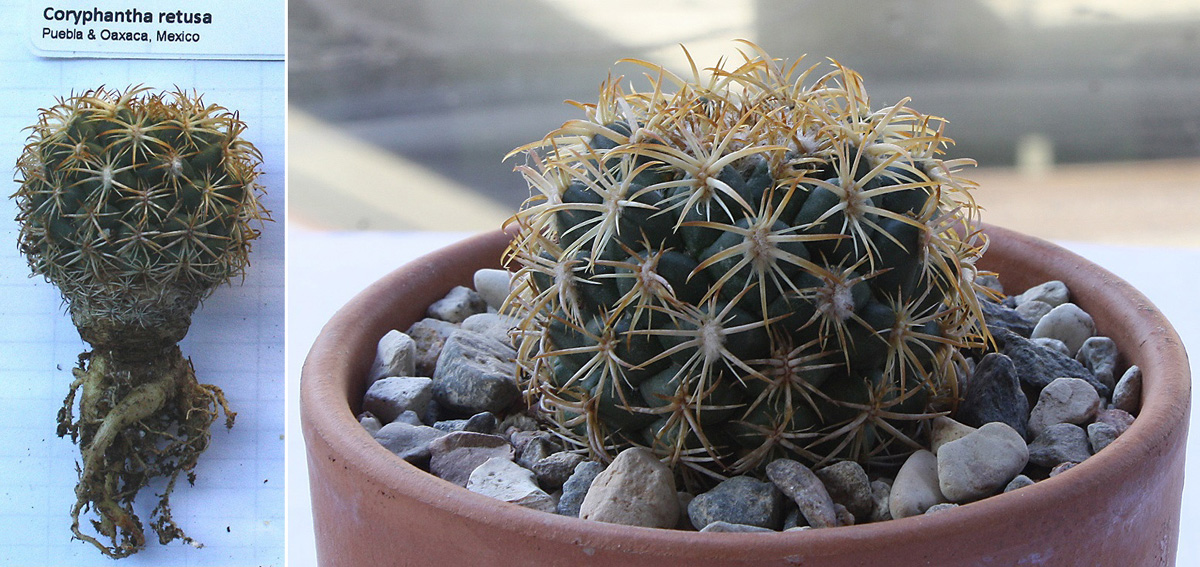
The retusa on 9/24/16, 10/9/17, 10/21/18, and 10/13/19:
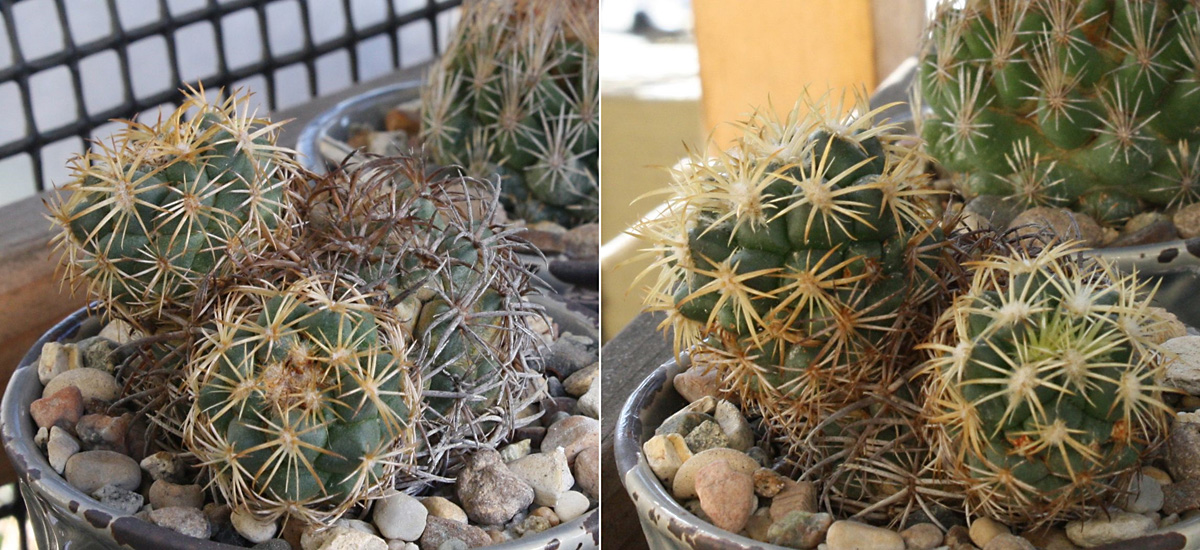
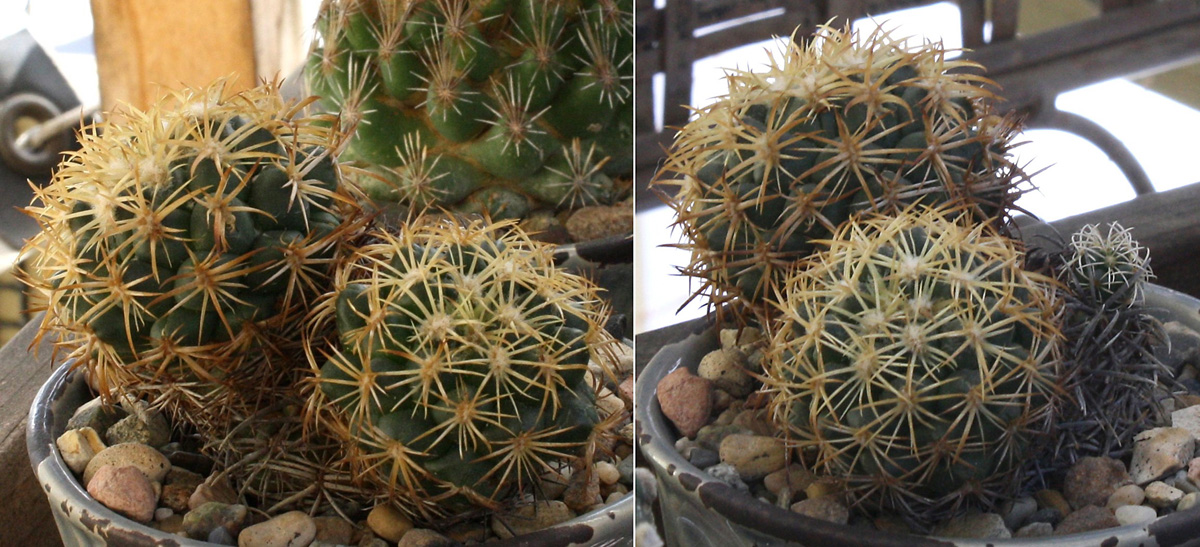
I posted a pic of the new pup in my 2018 review, so we'll do a zoom-in on 10/21/18 and 10/13/19:

A bird's-eye view of the entire plant on 10/9/17 and 10/13/19:

Last item from the wilds of Corona arriving on 7/13:
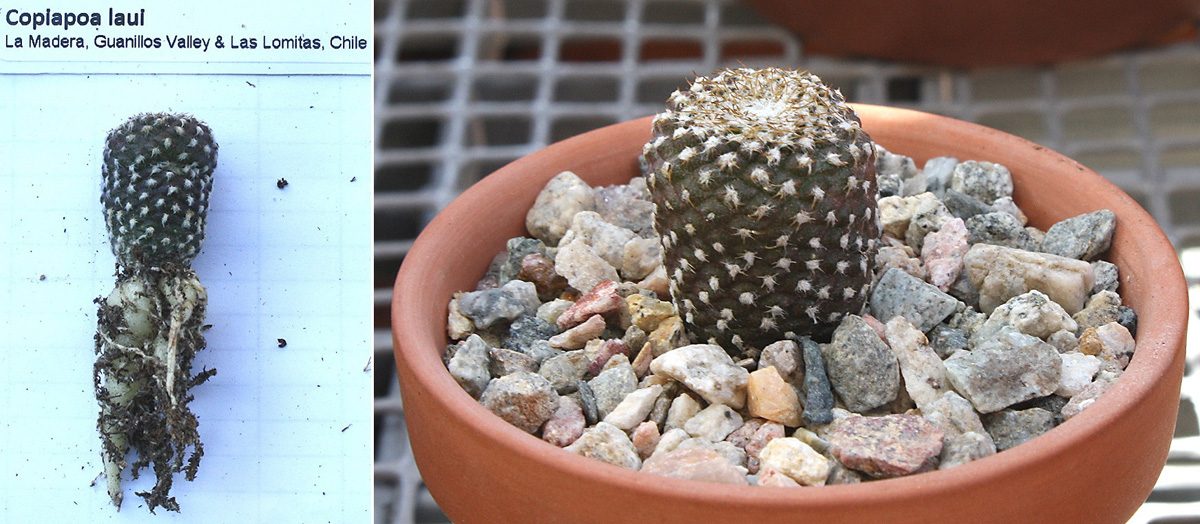
Of all the wonderful cacti Darryl Craig sent my way, this one might just take the proverbial cake -- 9/18/16, 10/8/17, 10/21/18, and 10/13/19:

Same dates with a "helicopter shot":

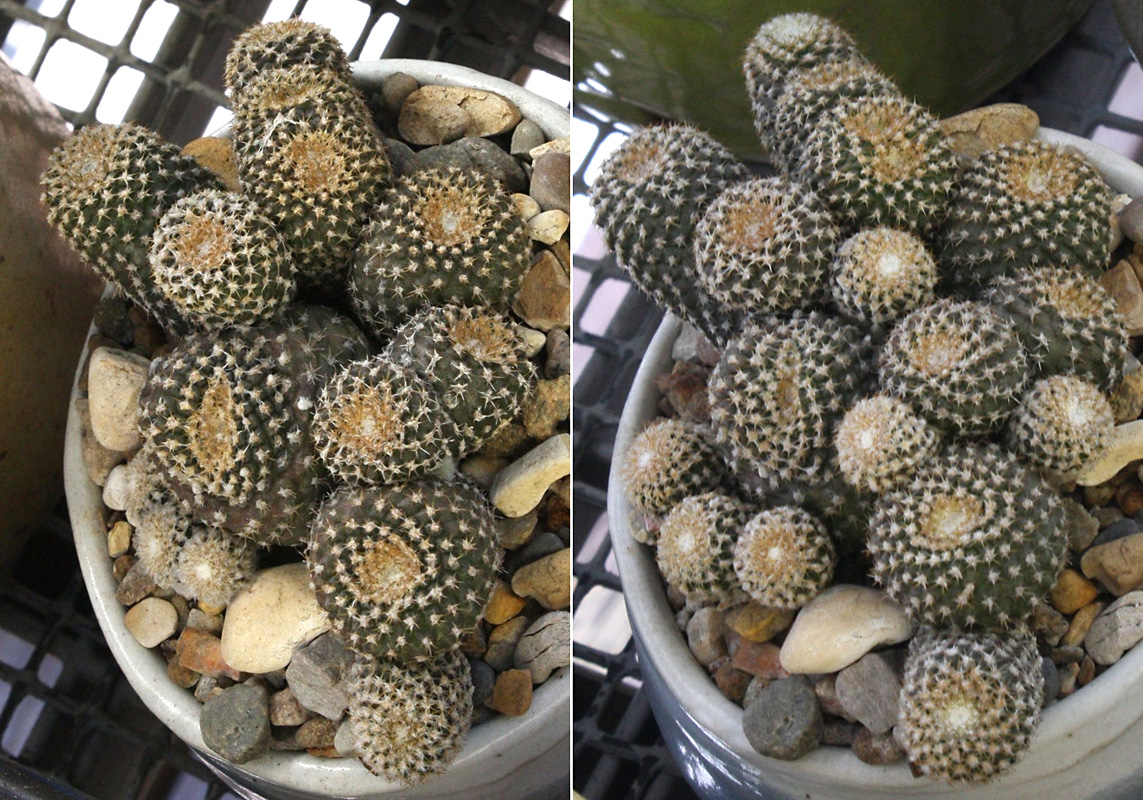 From Sunset Nursery (July 2013)
From Sunset Nursery (July 2013)
First photo on 7/7/13:
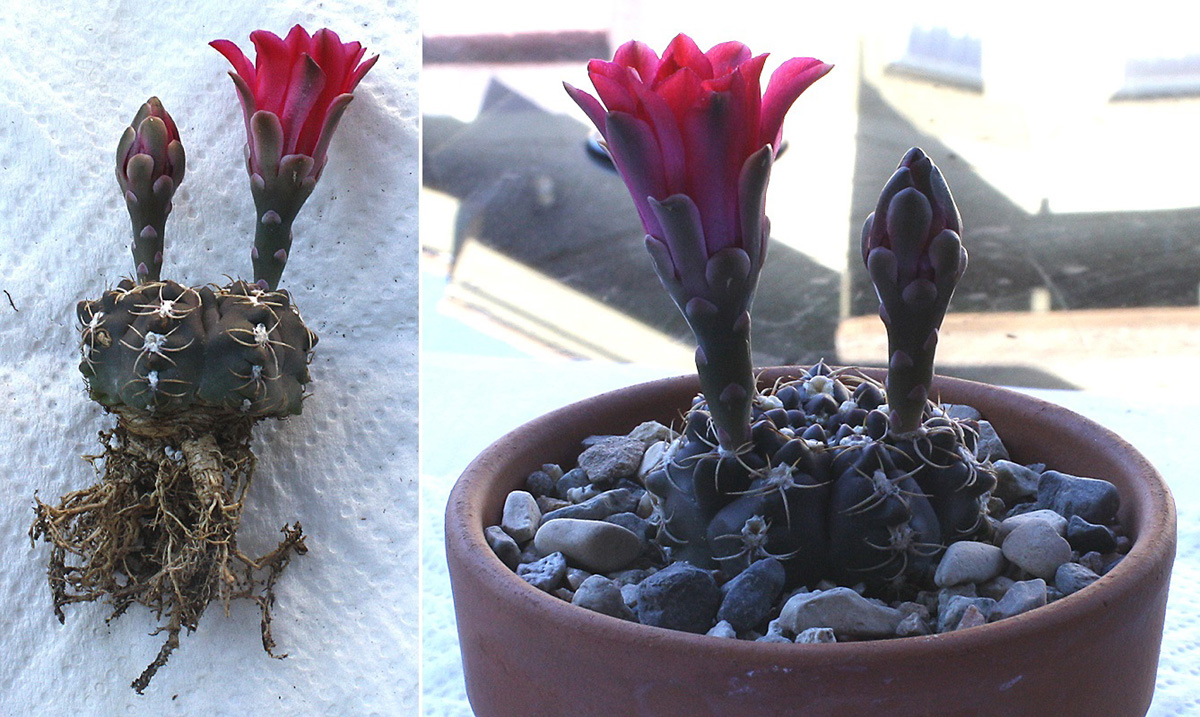
By the end of summer 2018, it became pretty apparent that the baldianum was in need of a bigger pot -- 10/6/18, and repotting day finally came on 7/21/19:
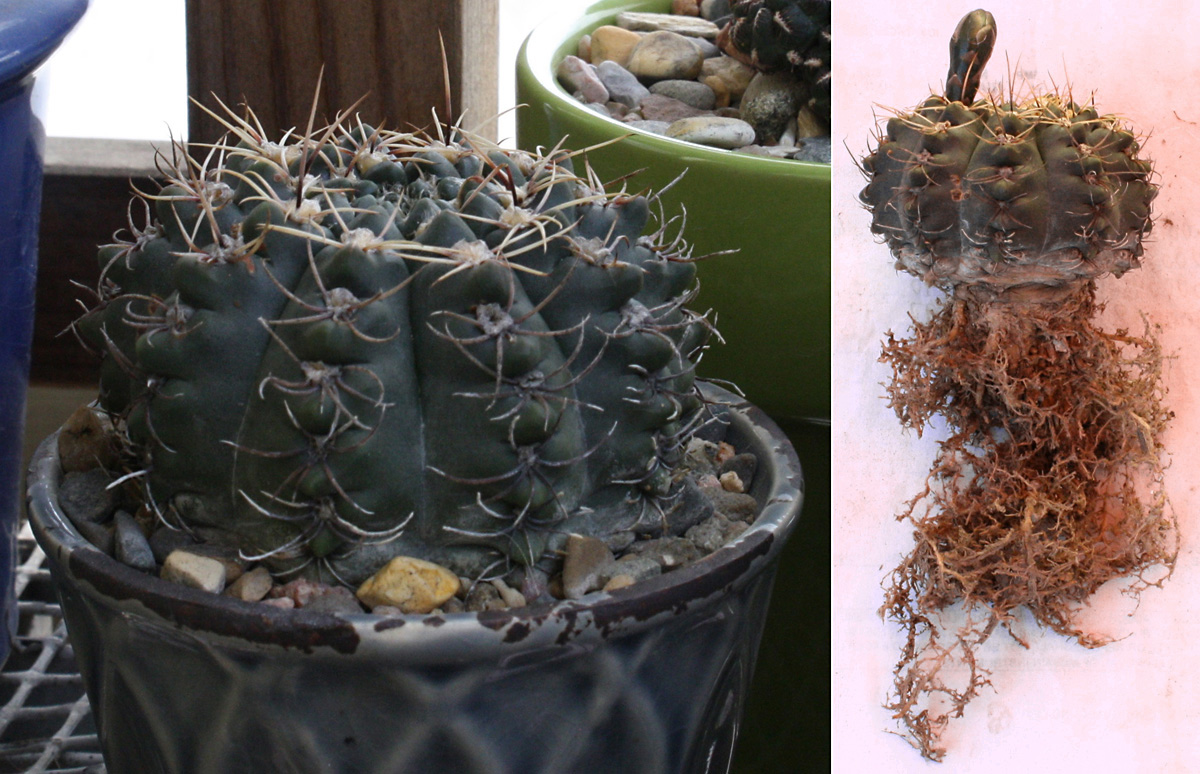
Yowza! That pot was literally filled with roots, so we can go deeper (and wider) for the plant's new pot. Done deal:

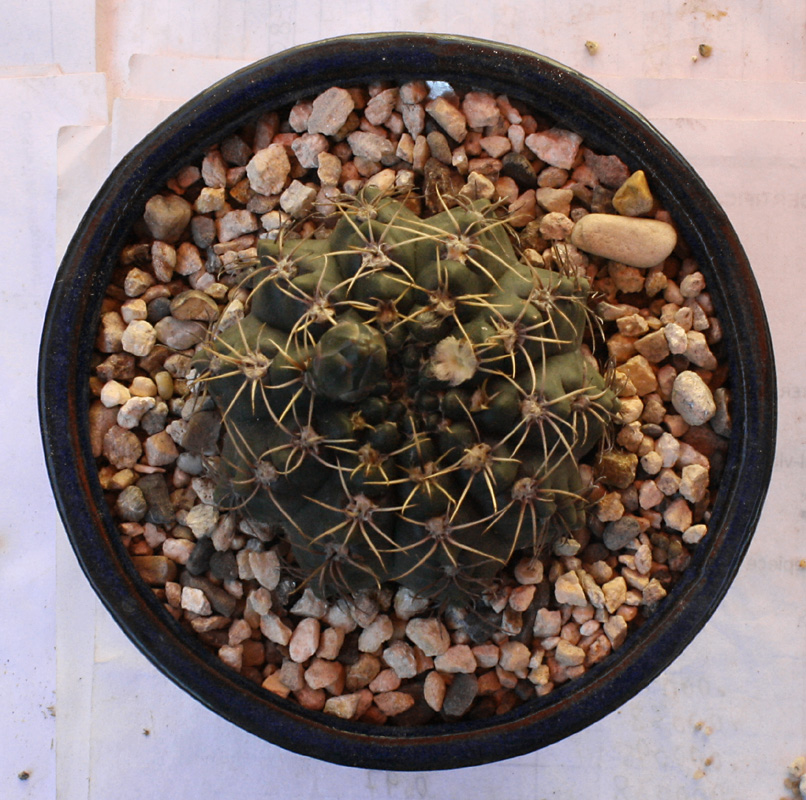
Getting from there to here on 9/25/16, 10/8/17, 10/6/18, and 10/6/19:

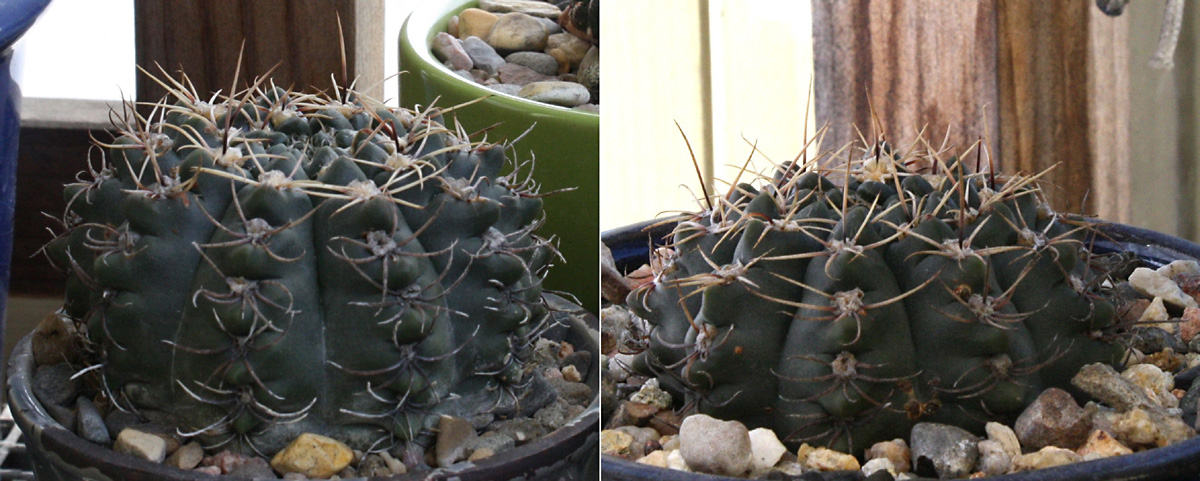
An aerial view on 3/29/15 and 10/6/19:

The baldianum had to re-establish its roots, so what I saw at the end of last summer was to be expected. Once it starts filling out again, we'll see how big the plant can get as it continues to grow over time.
A few photos left over from July 2019 -- the baldianum's first (and so far only) fruit on 7/4:
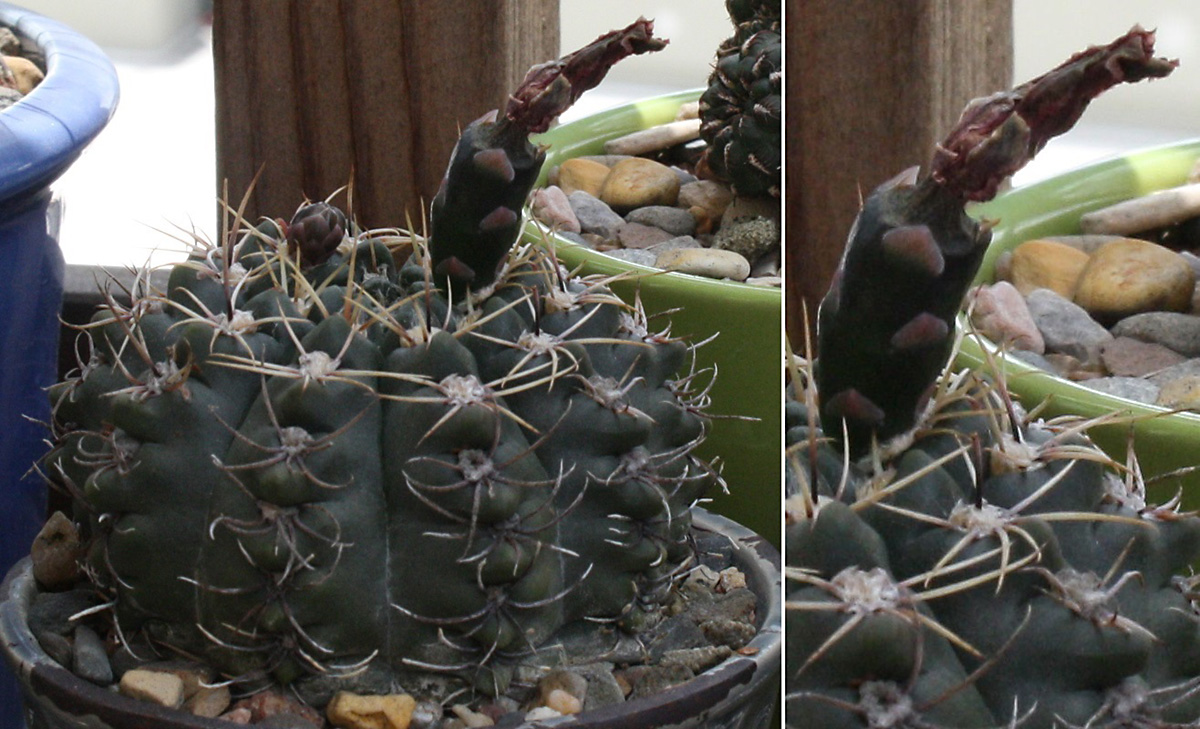
I was hoping to get seeds out of it, but the fruit was "shooting blanks". Oh, well -- at least the bud on the left went into bloom on 7/28:

Mammillaria grahamii saying "me too, me too!"
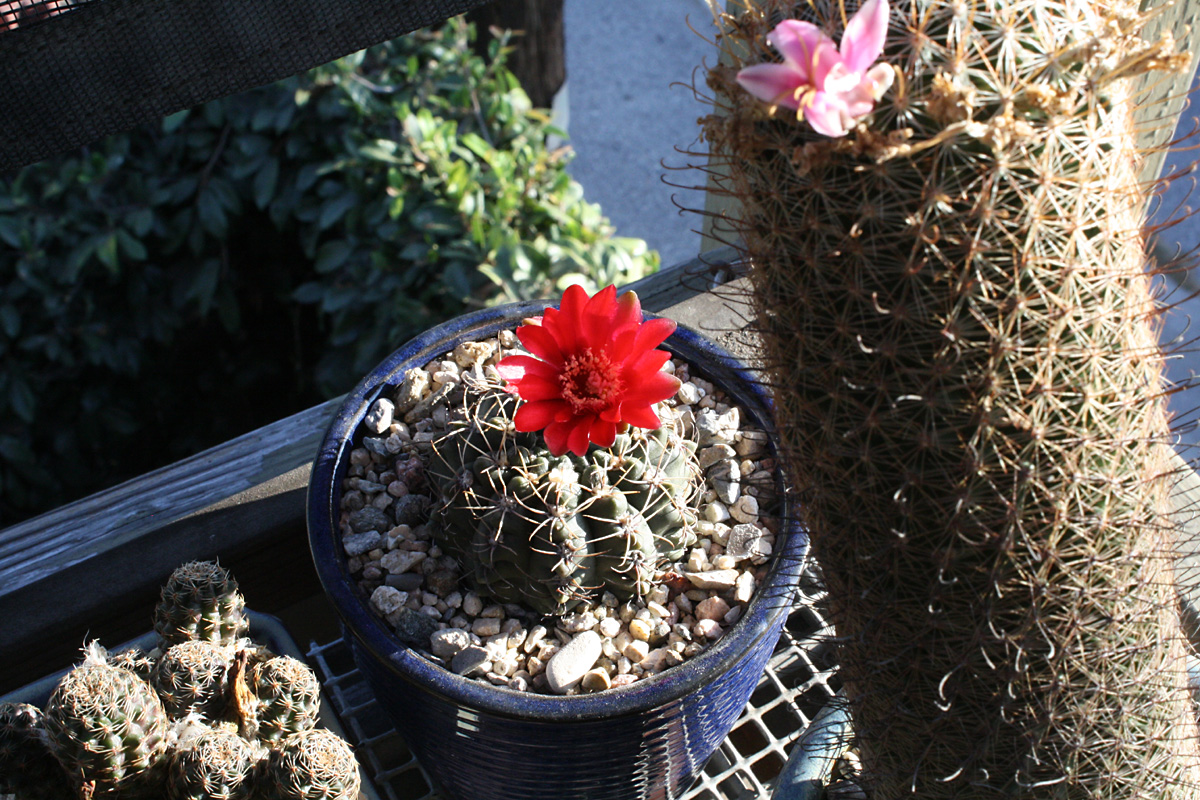
Let's investigate that colorful baldianum flower:
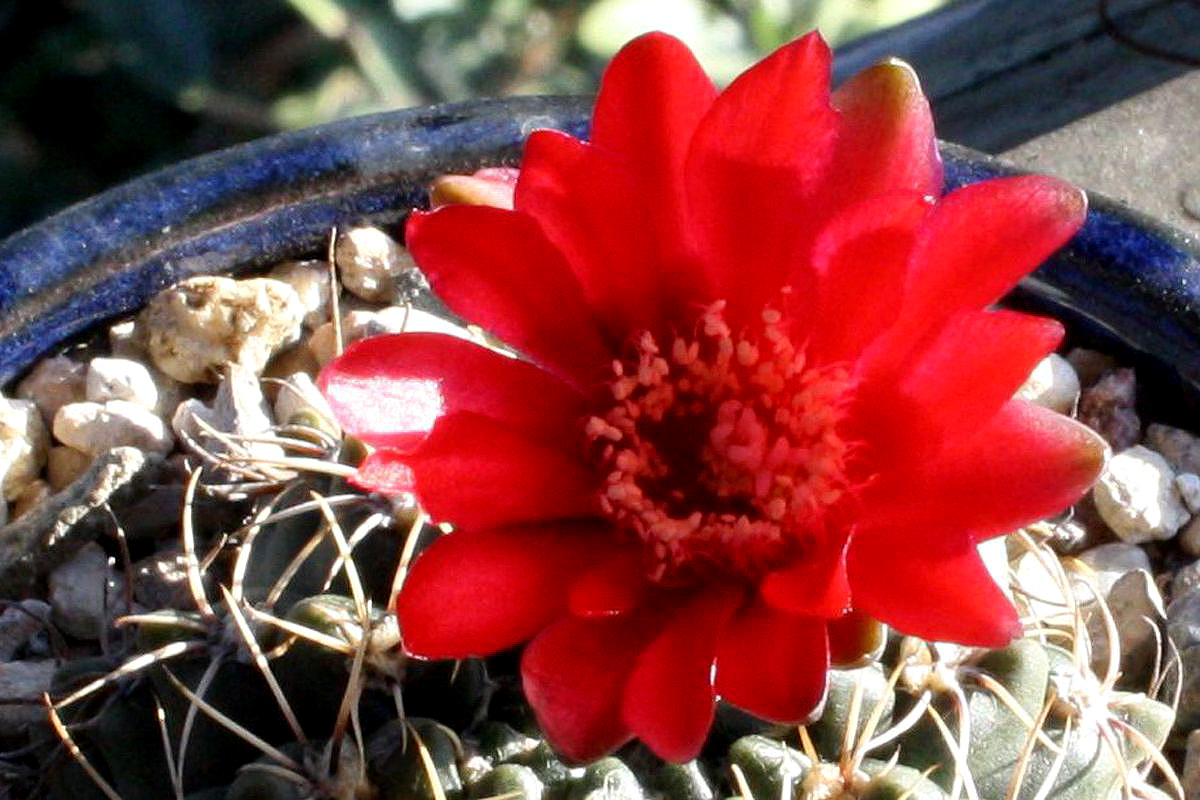
I had another Gymno that set its first fruit last summer -- stenopleurum on 6/29:

And this one ripened (8/31):
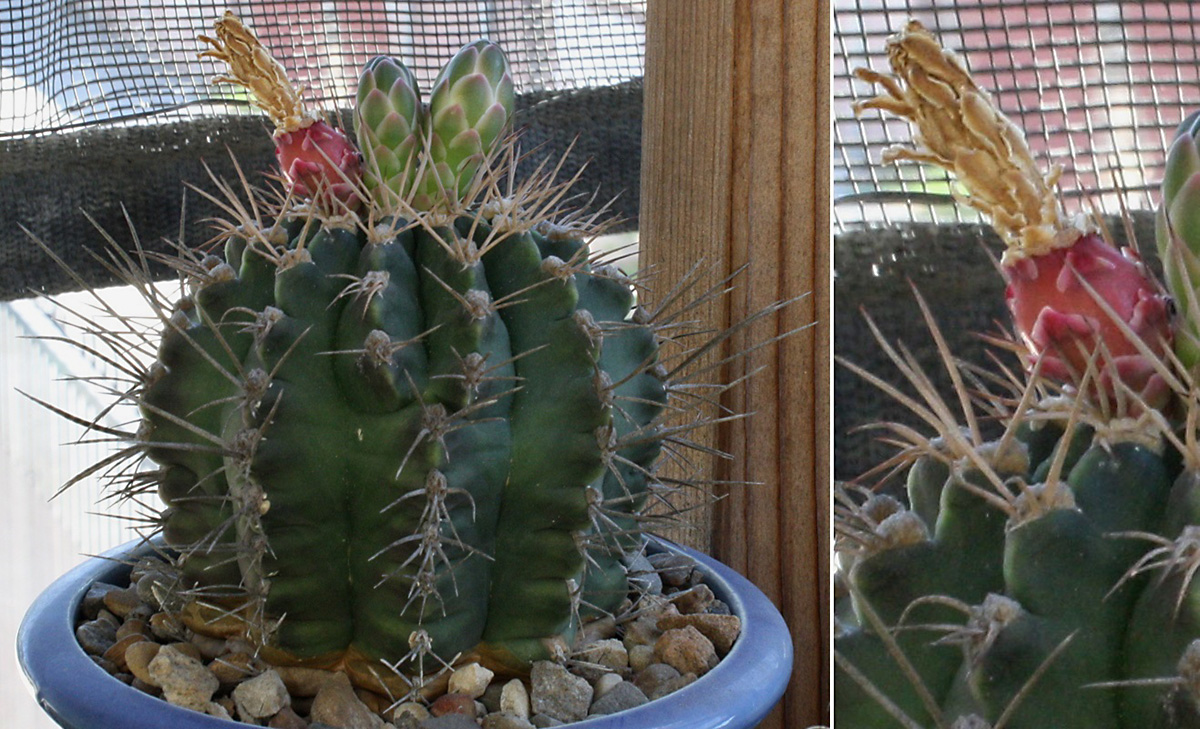
The buds sitting next to the fruit blooming on 9/2:
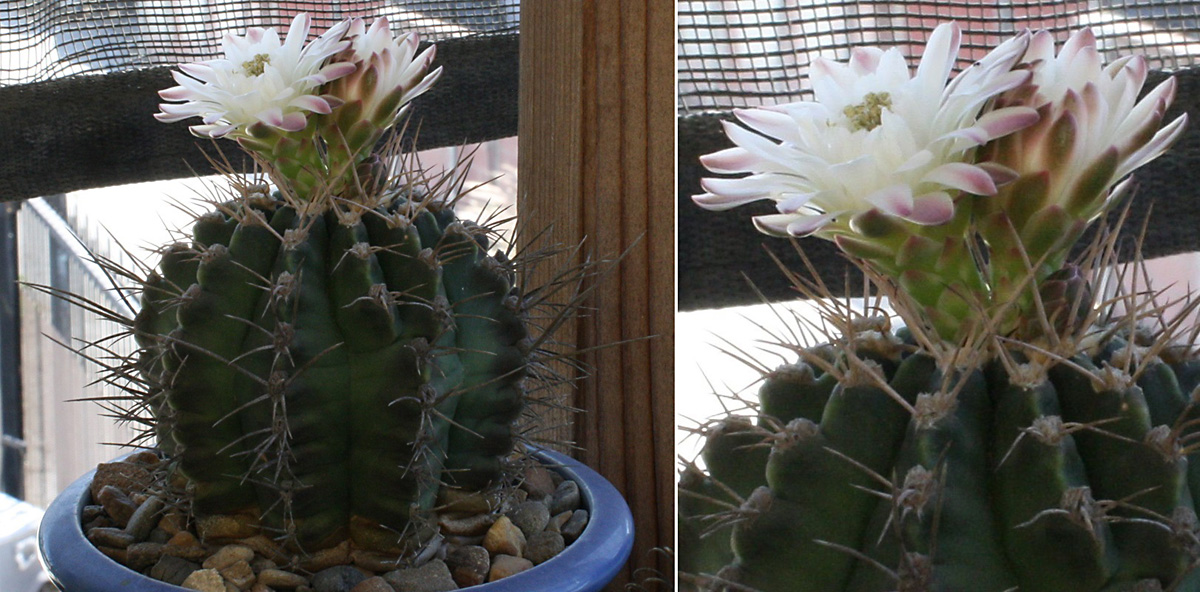

Gymno baldianum obviously isn't self-fertile, but stenopleurum may be since its fruit did produce seeds. I'll bundle them off with a bunch of seed packets I have for Desert Creations, so hopefully those seeds will go to a good home, sprout, and turn into little stenopleurums.
This is just the beginning of what 2013 had in store -- for Part 9, we'll examine some cacti imported from a magical land called Arizona.
